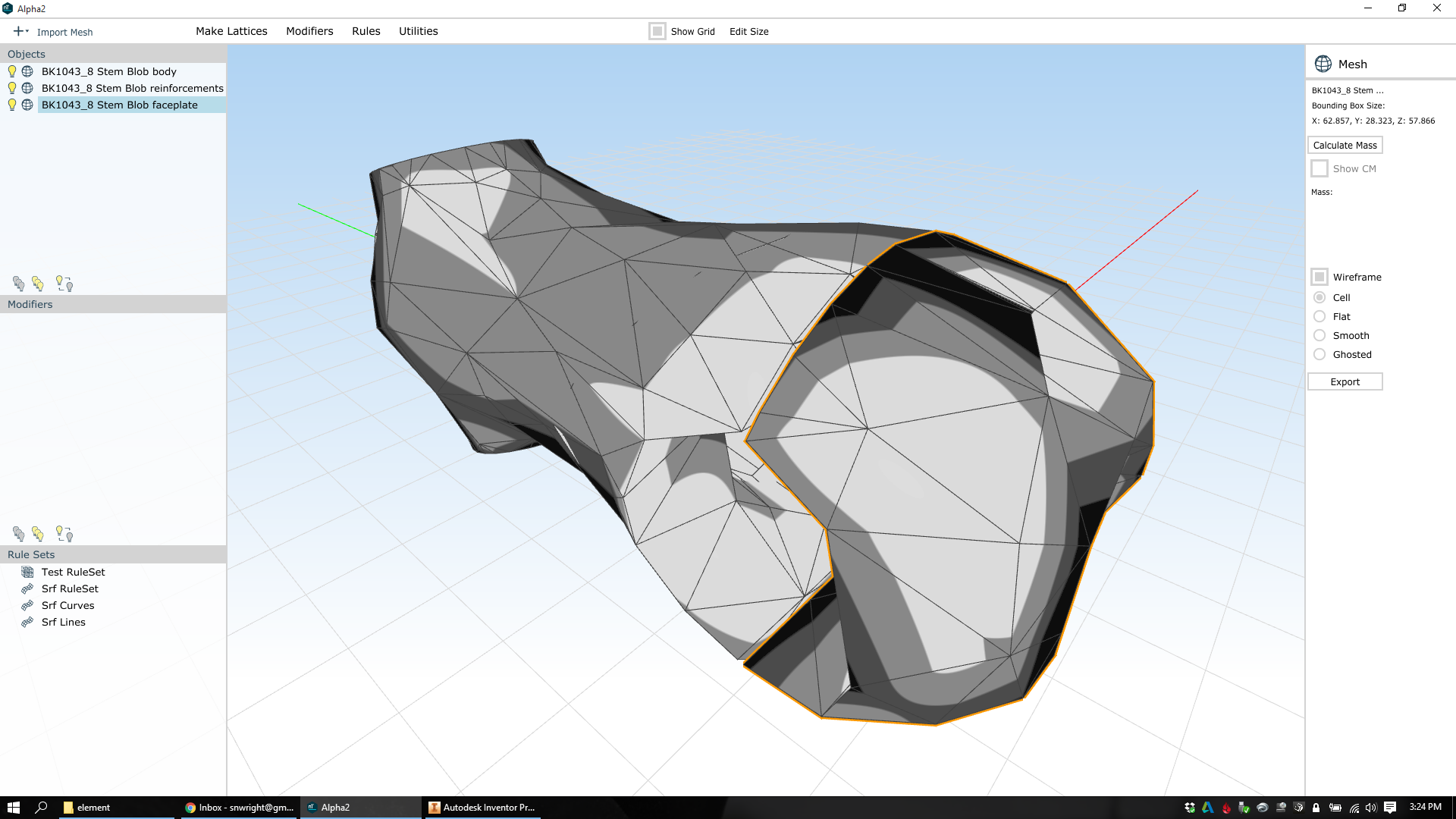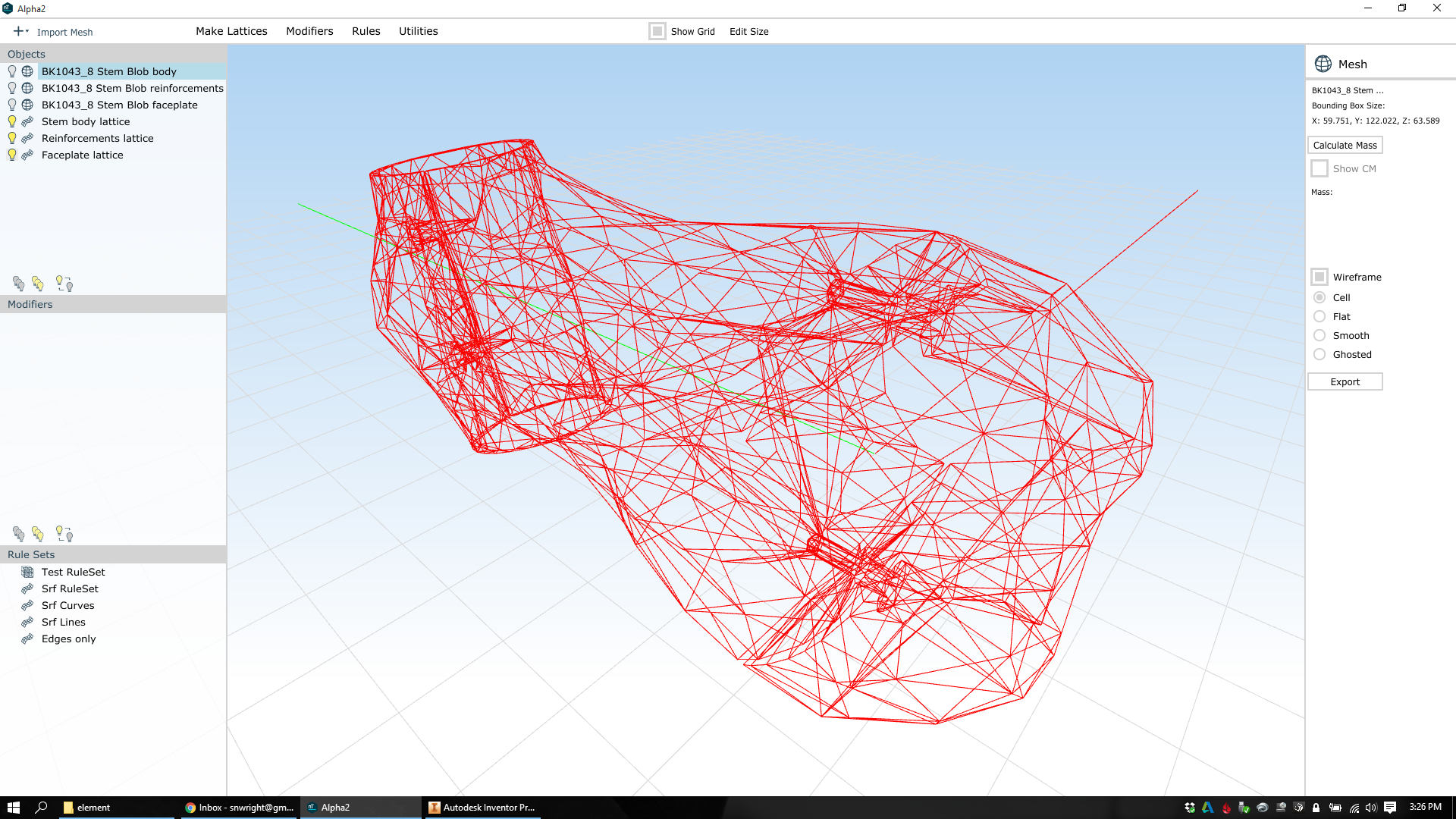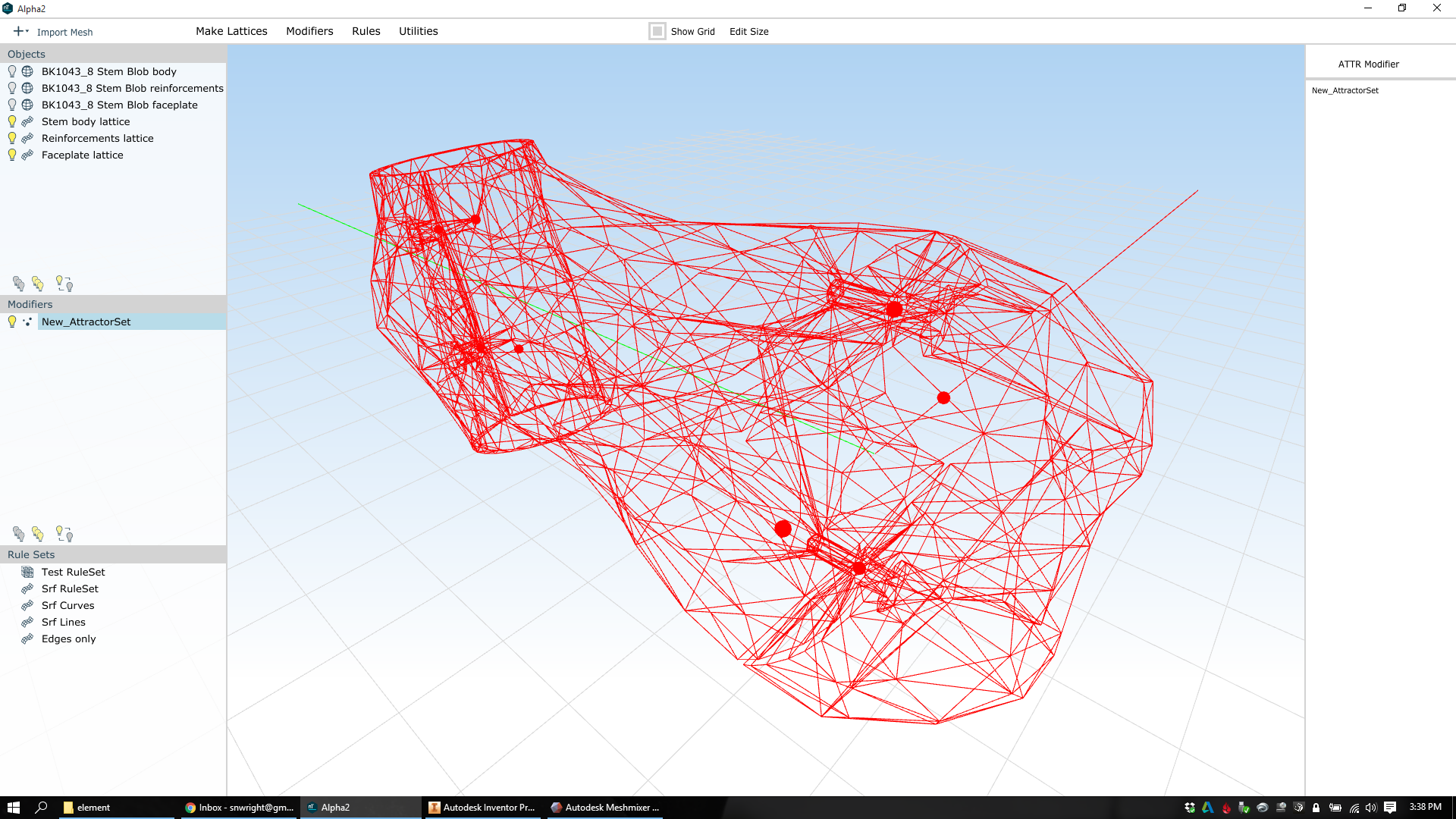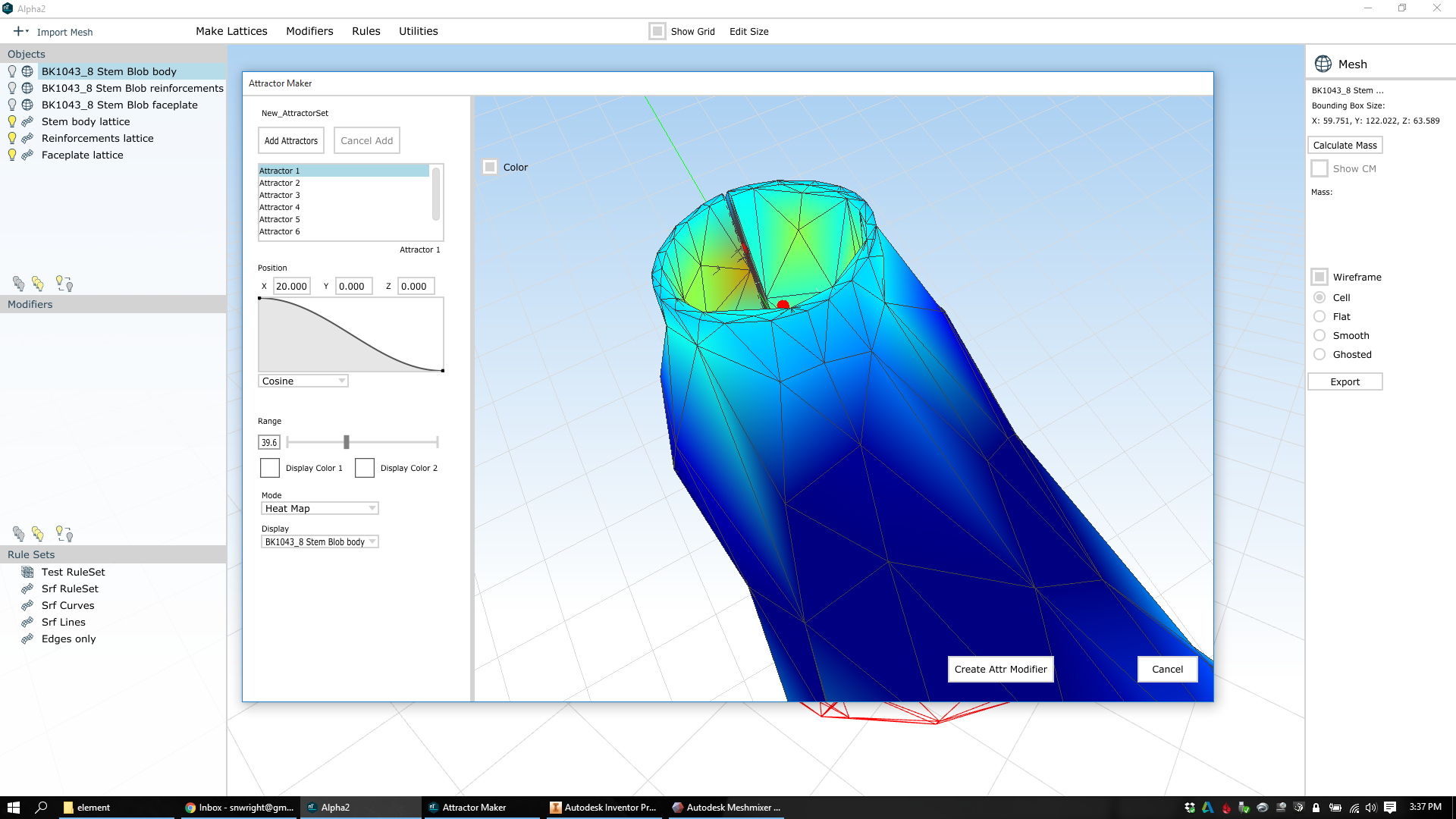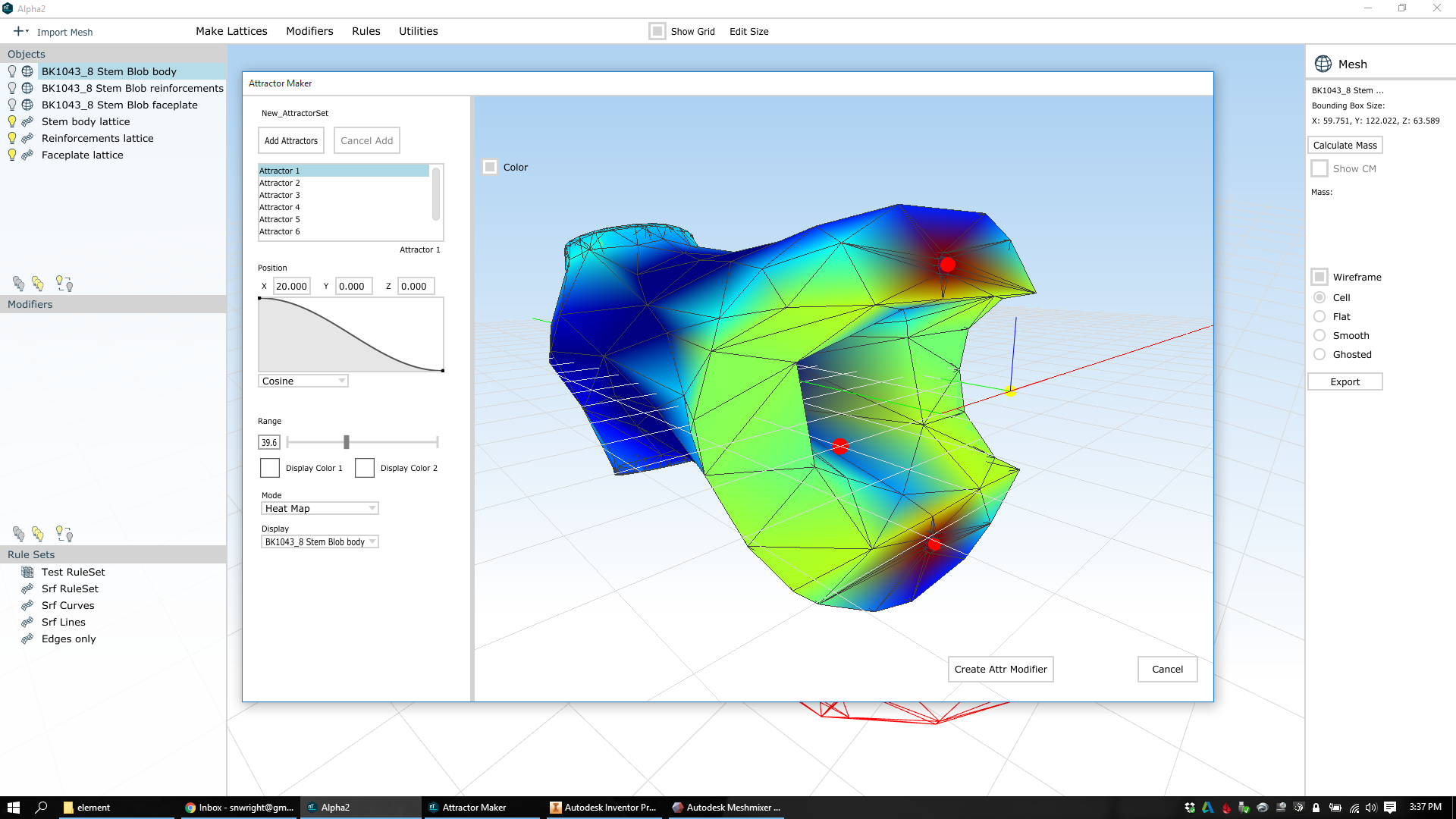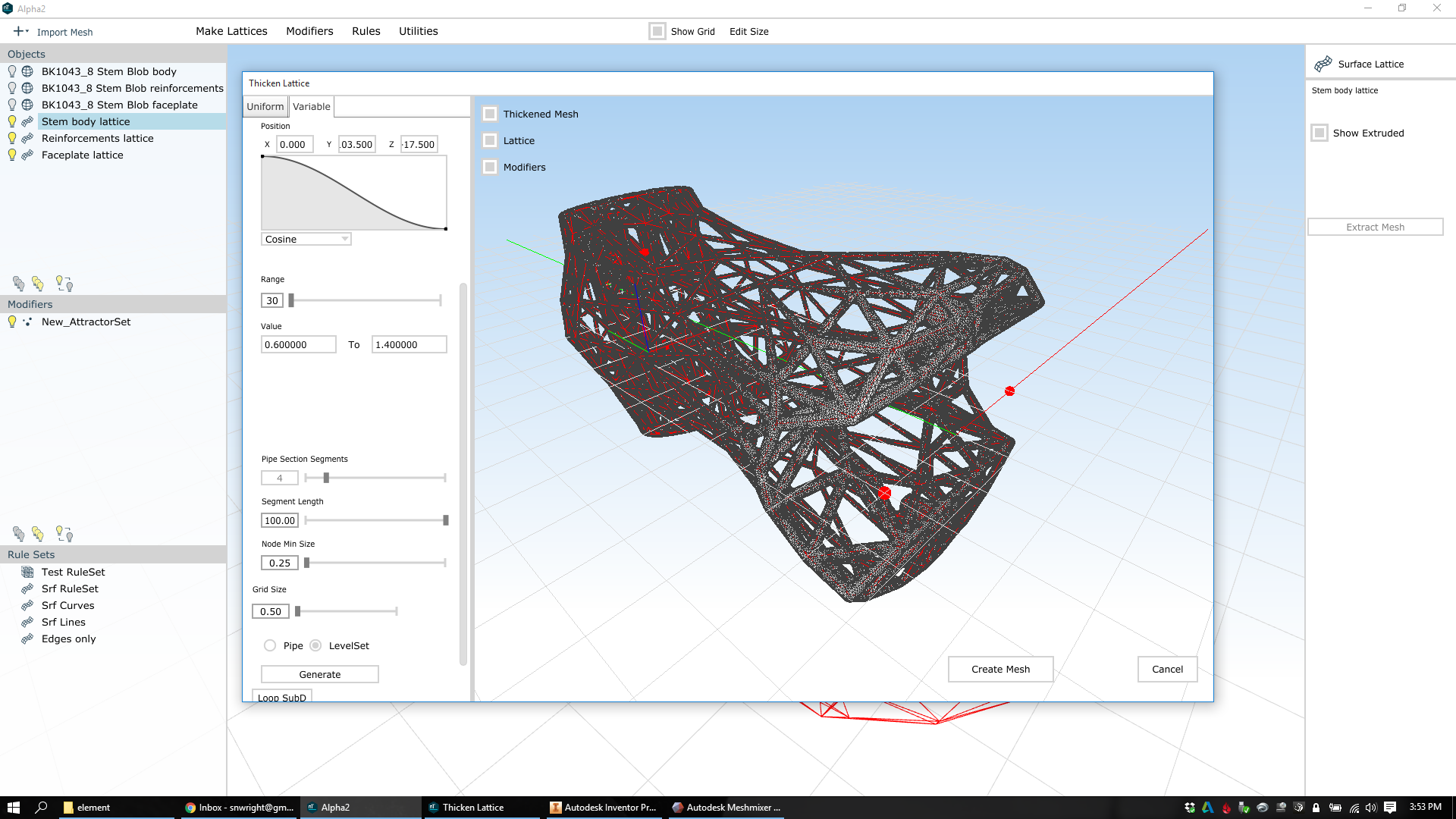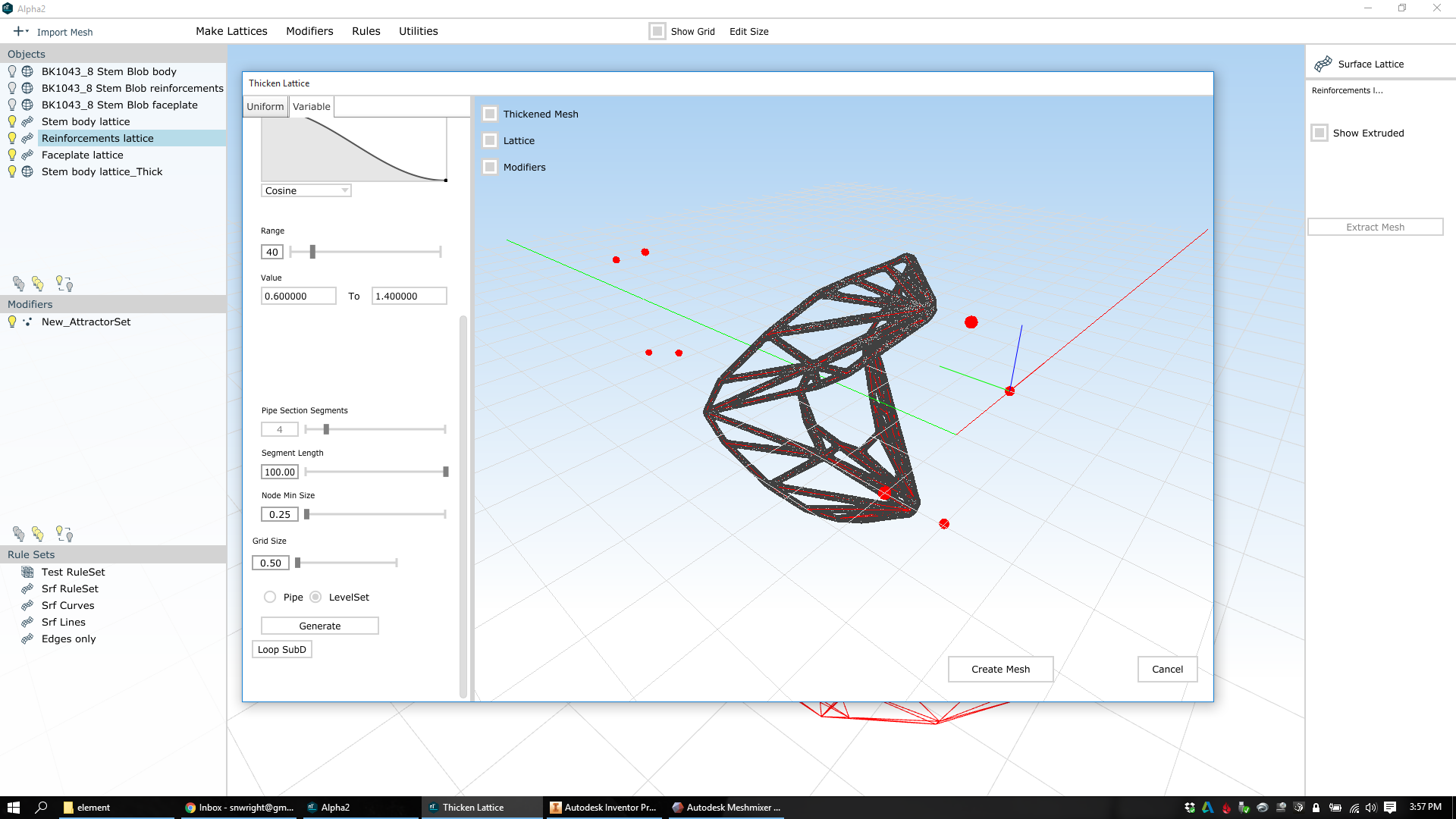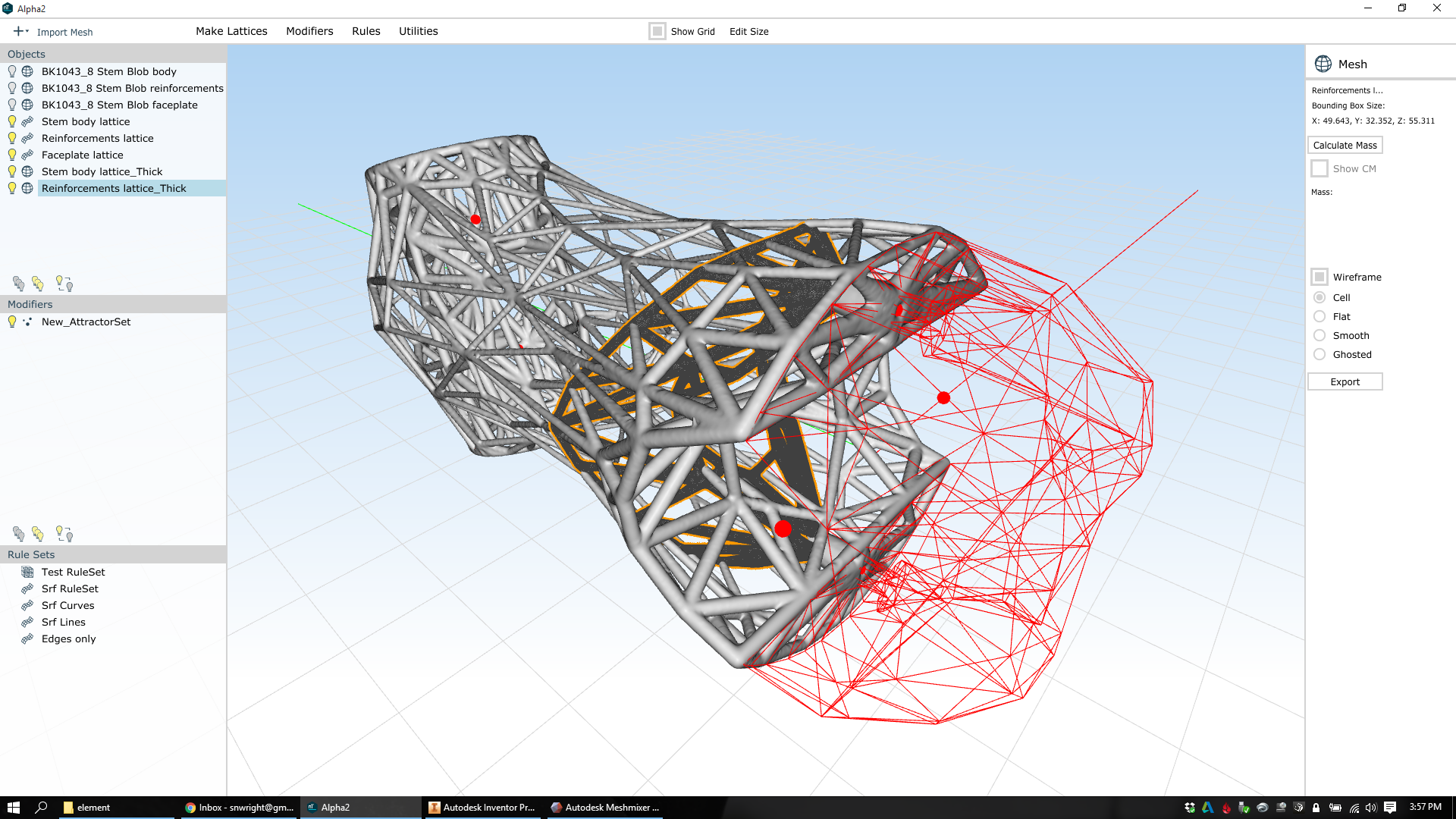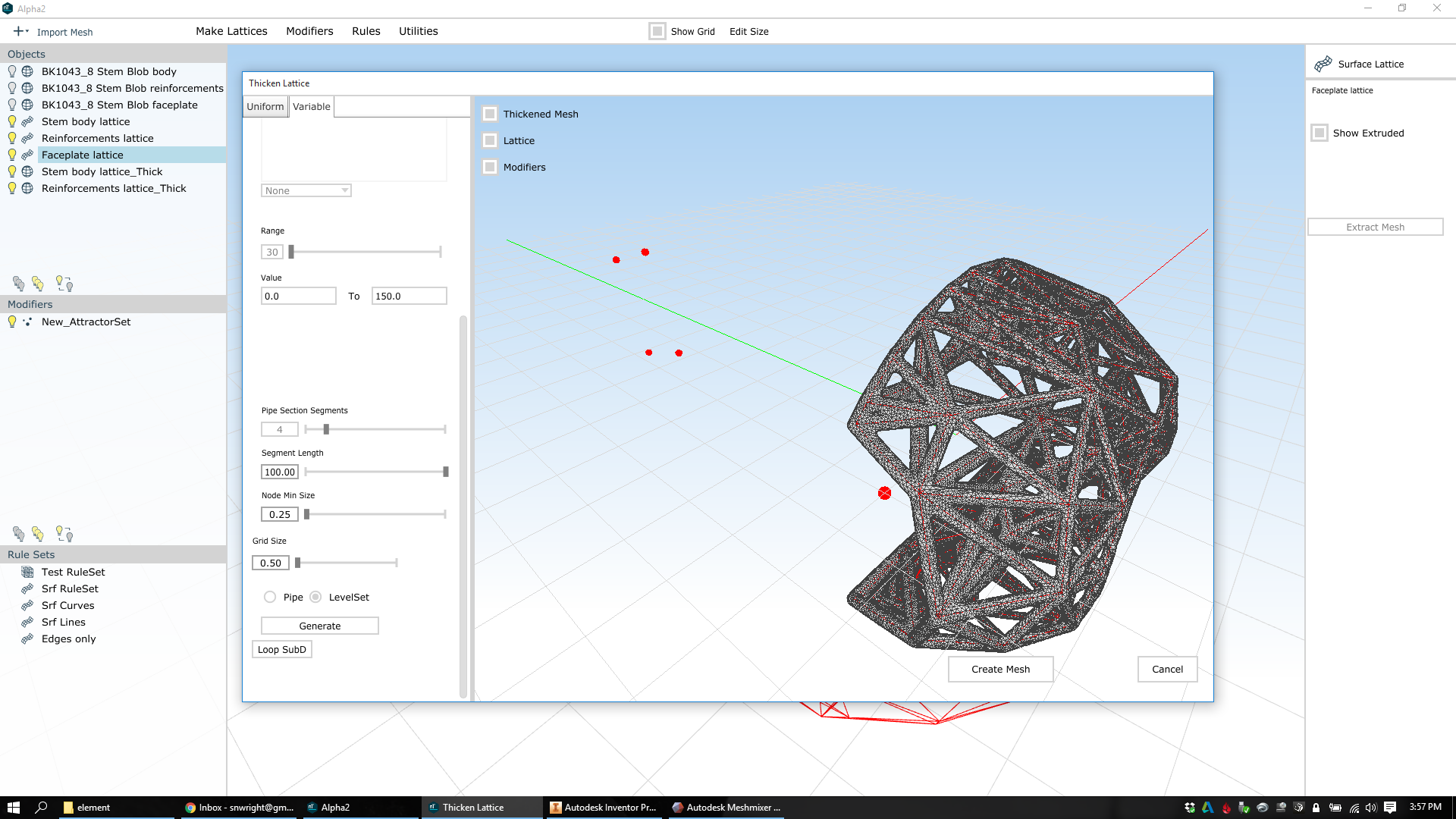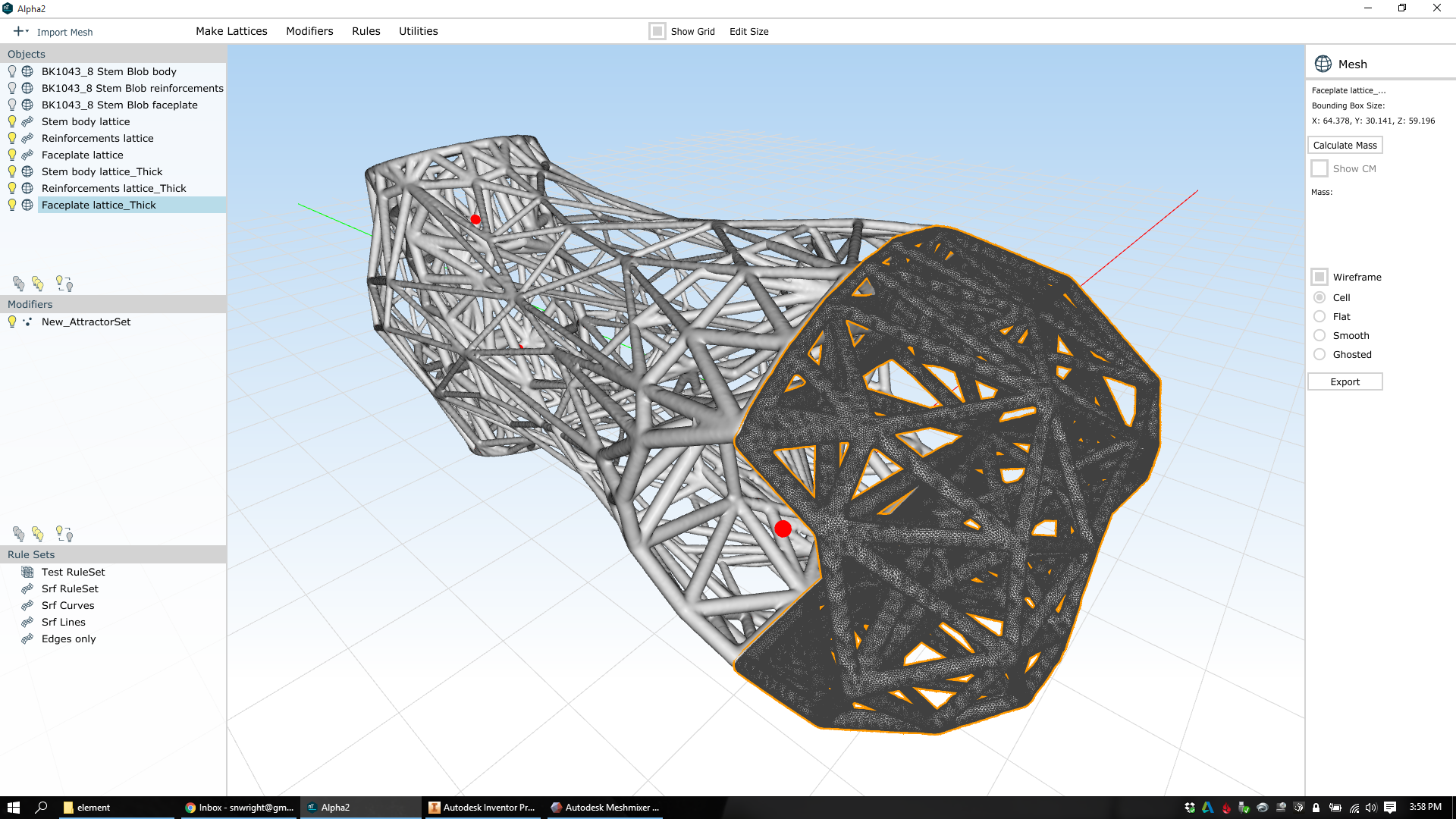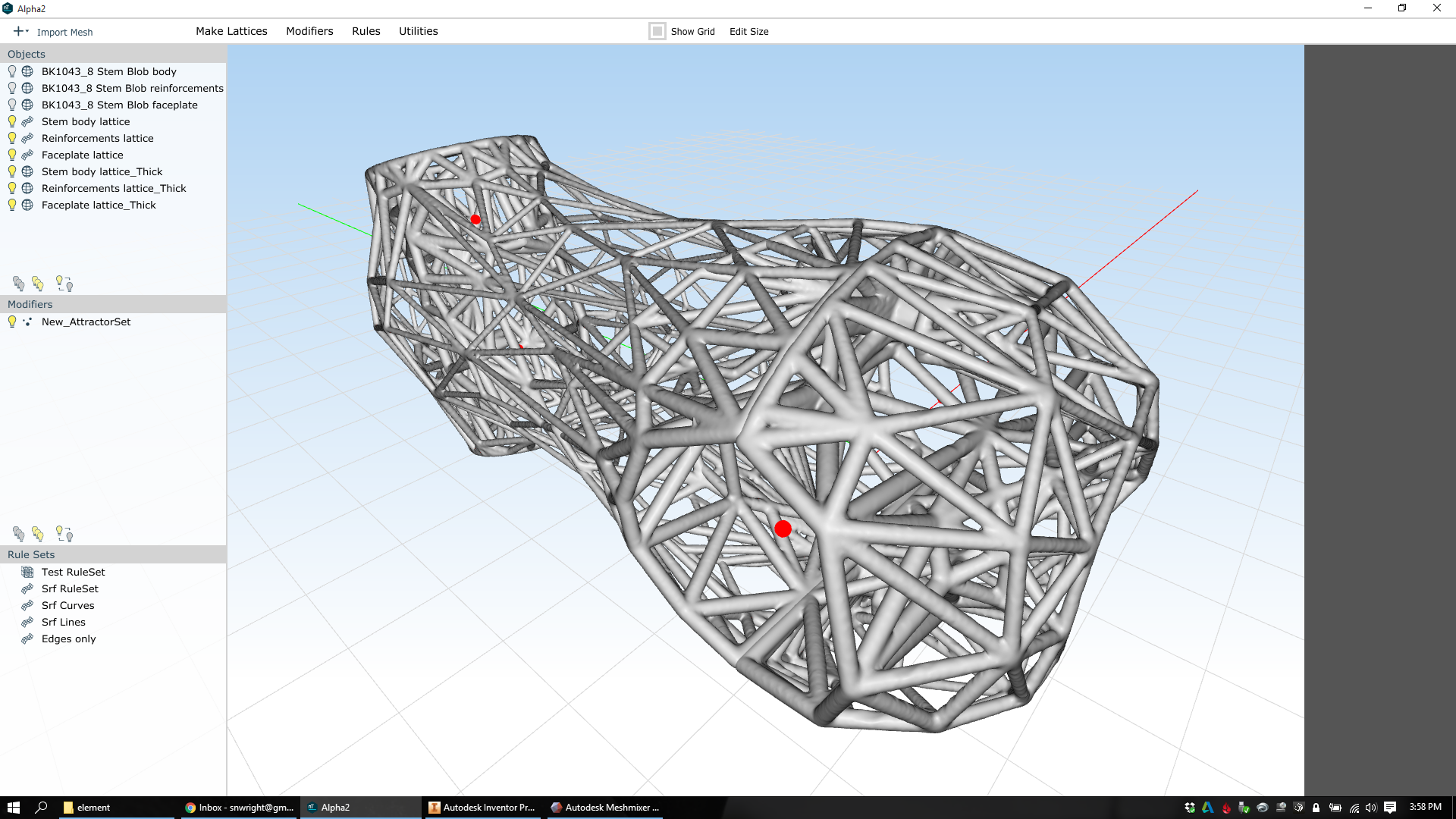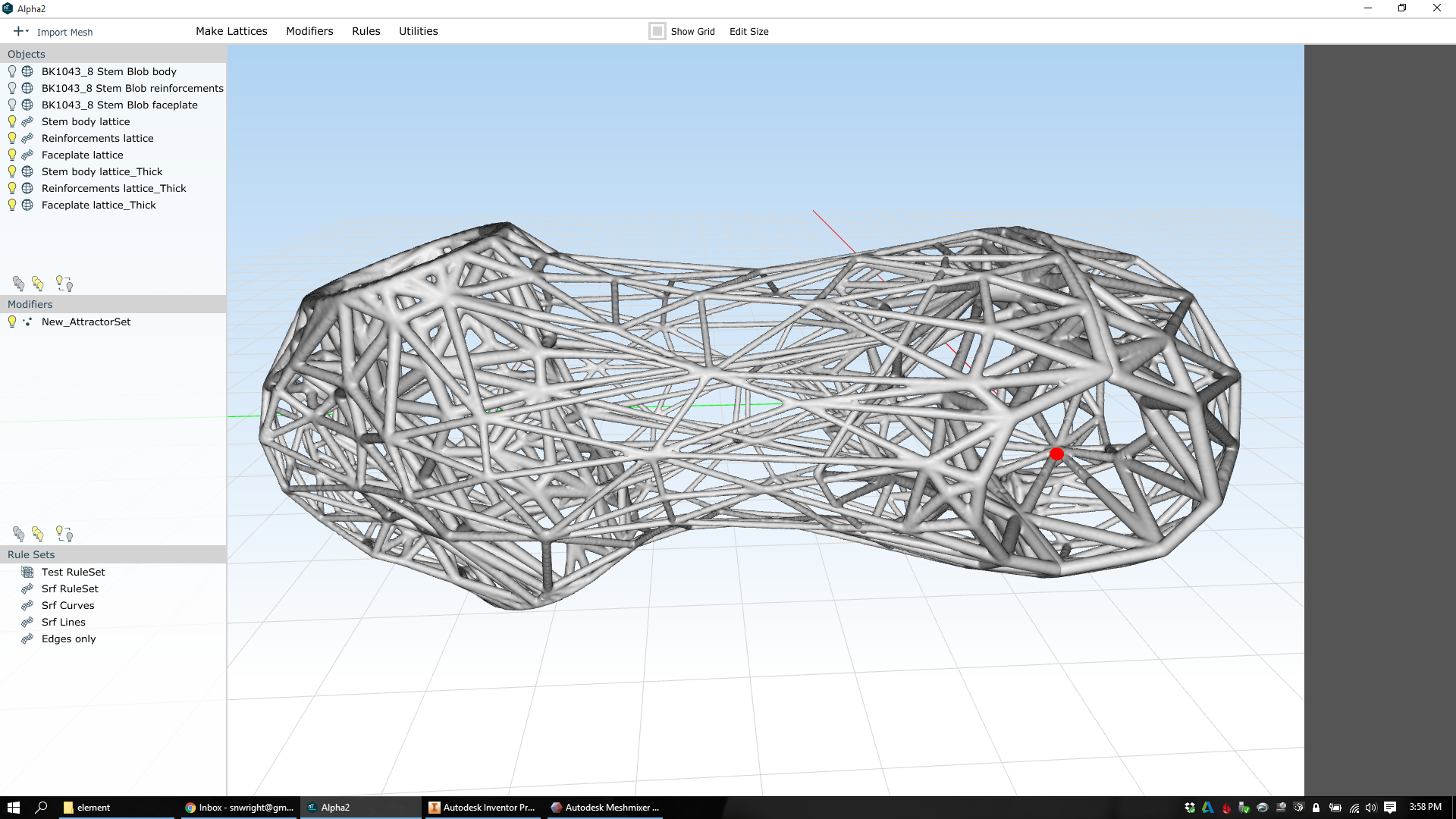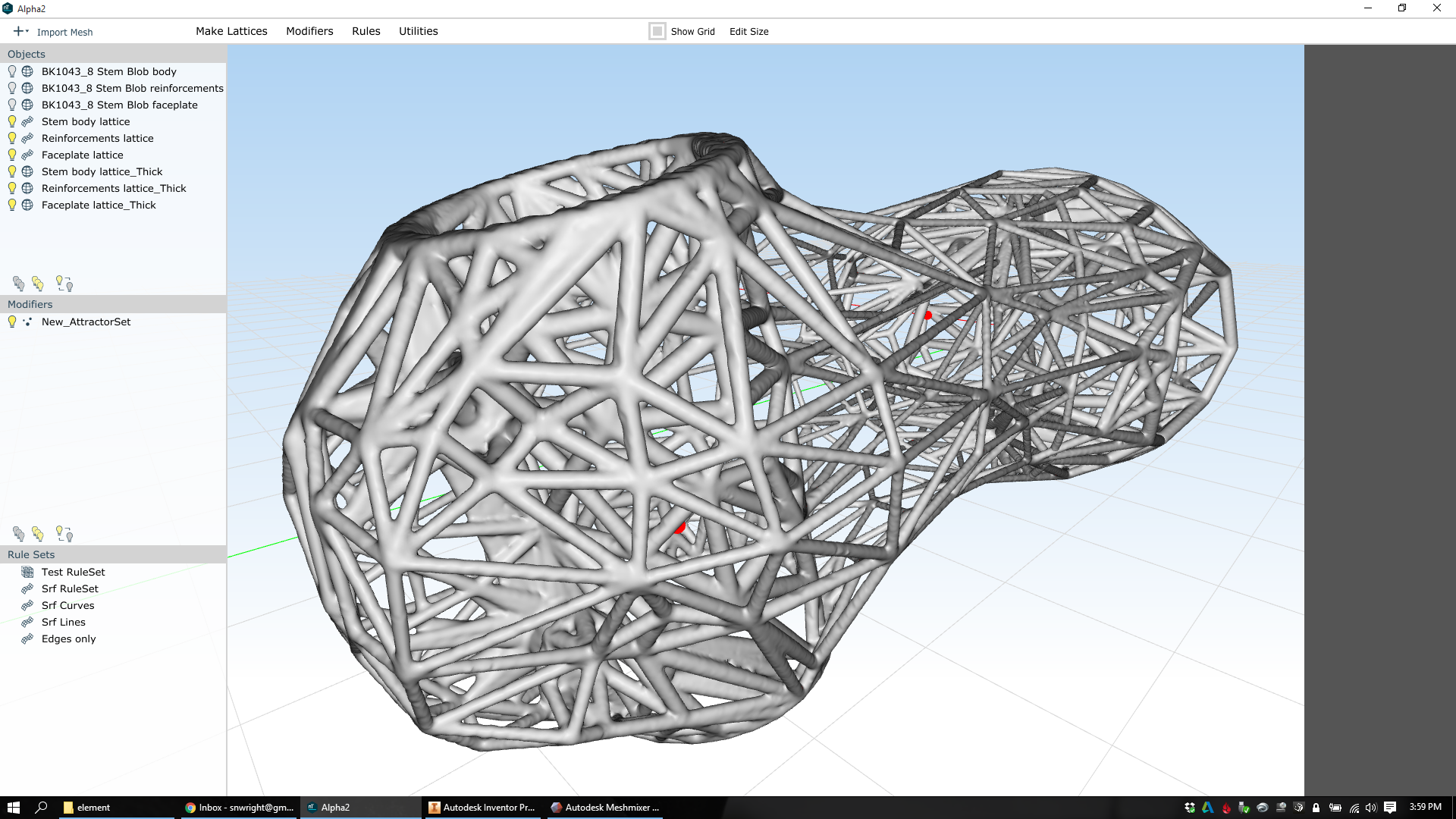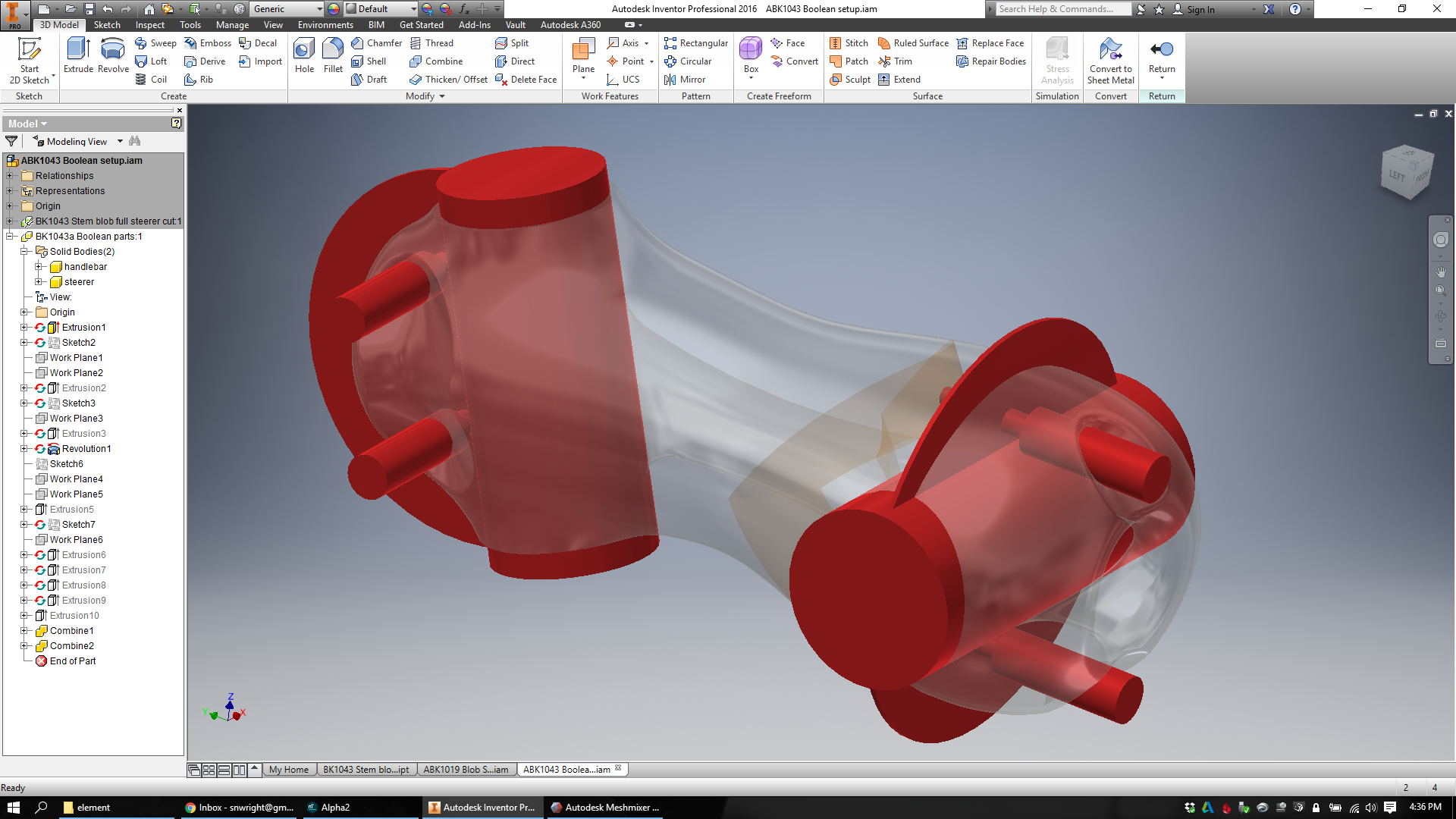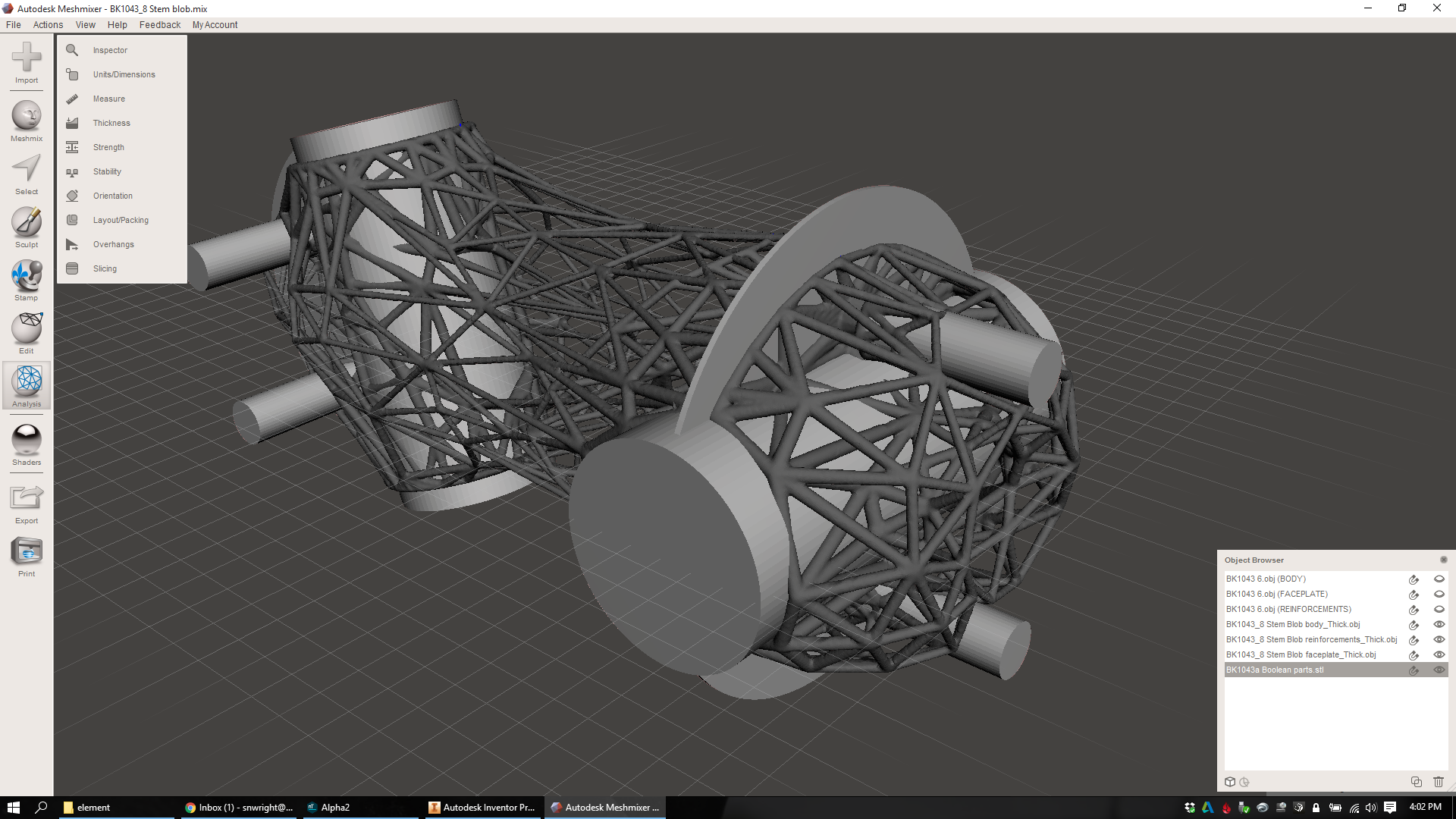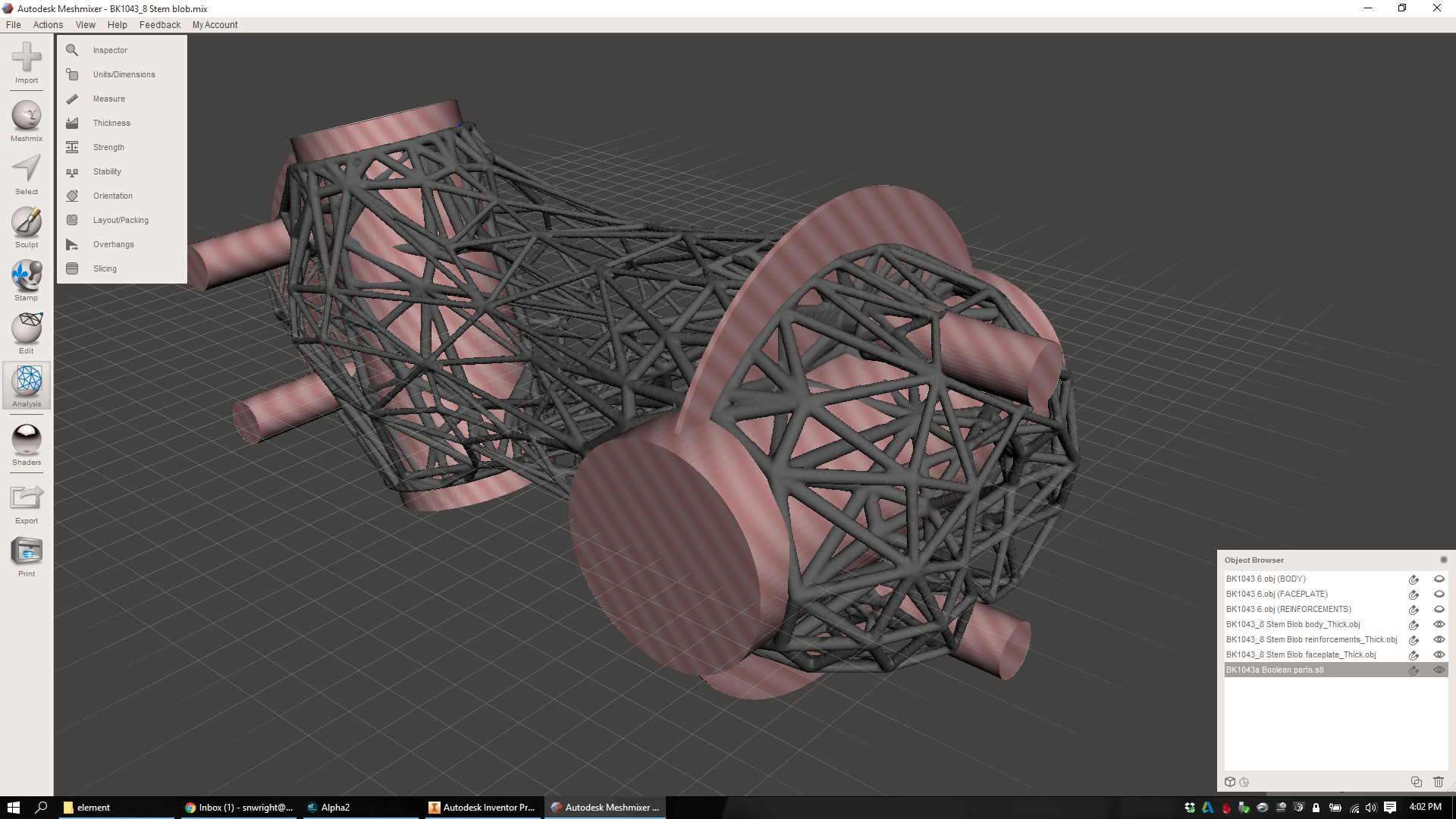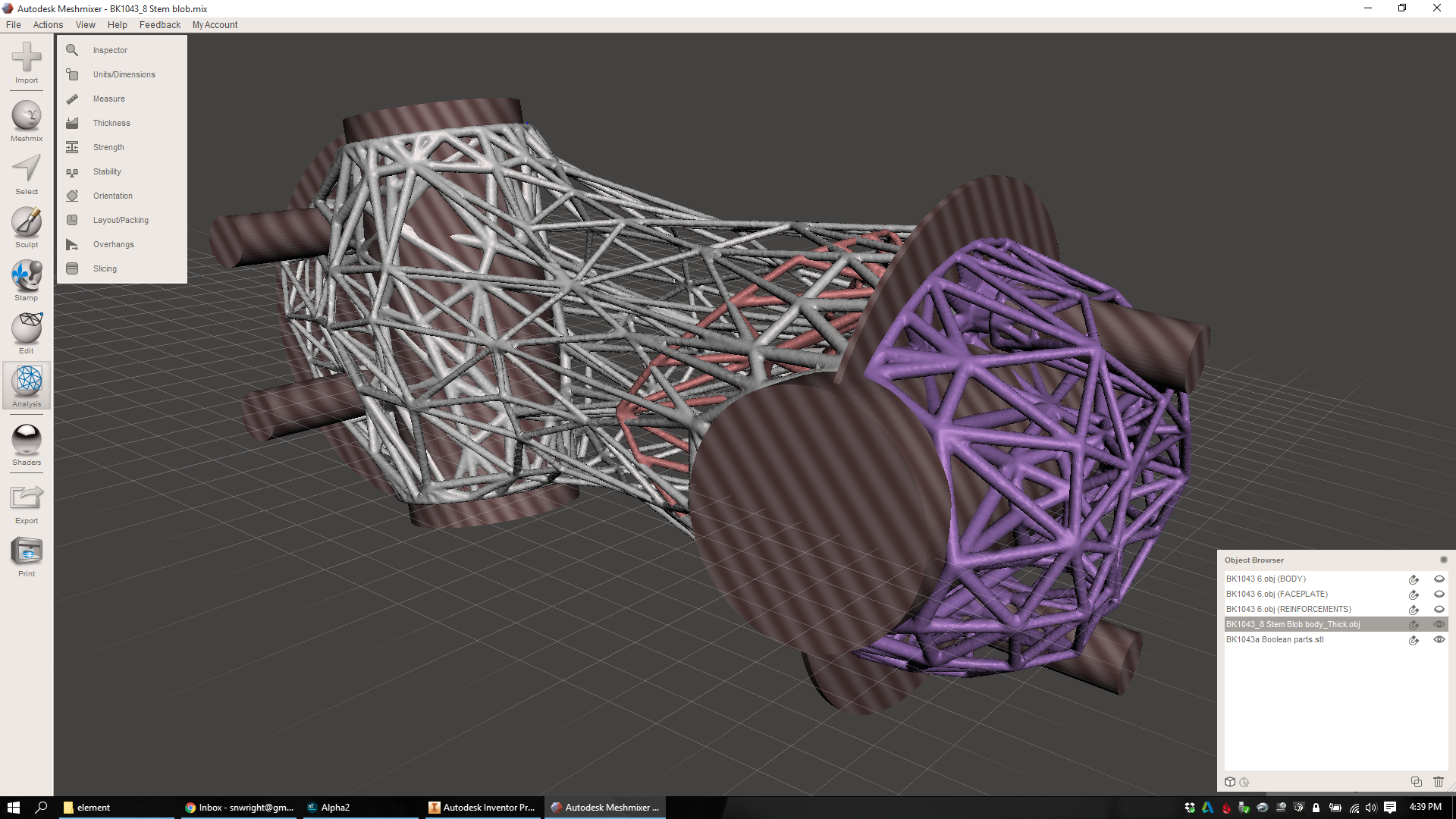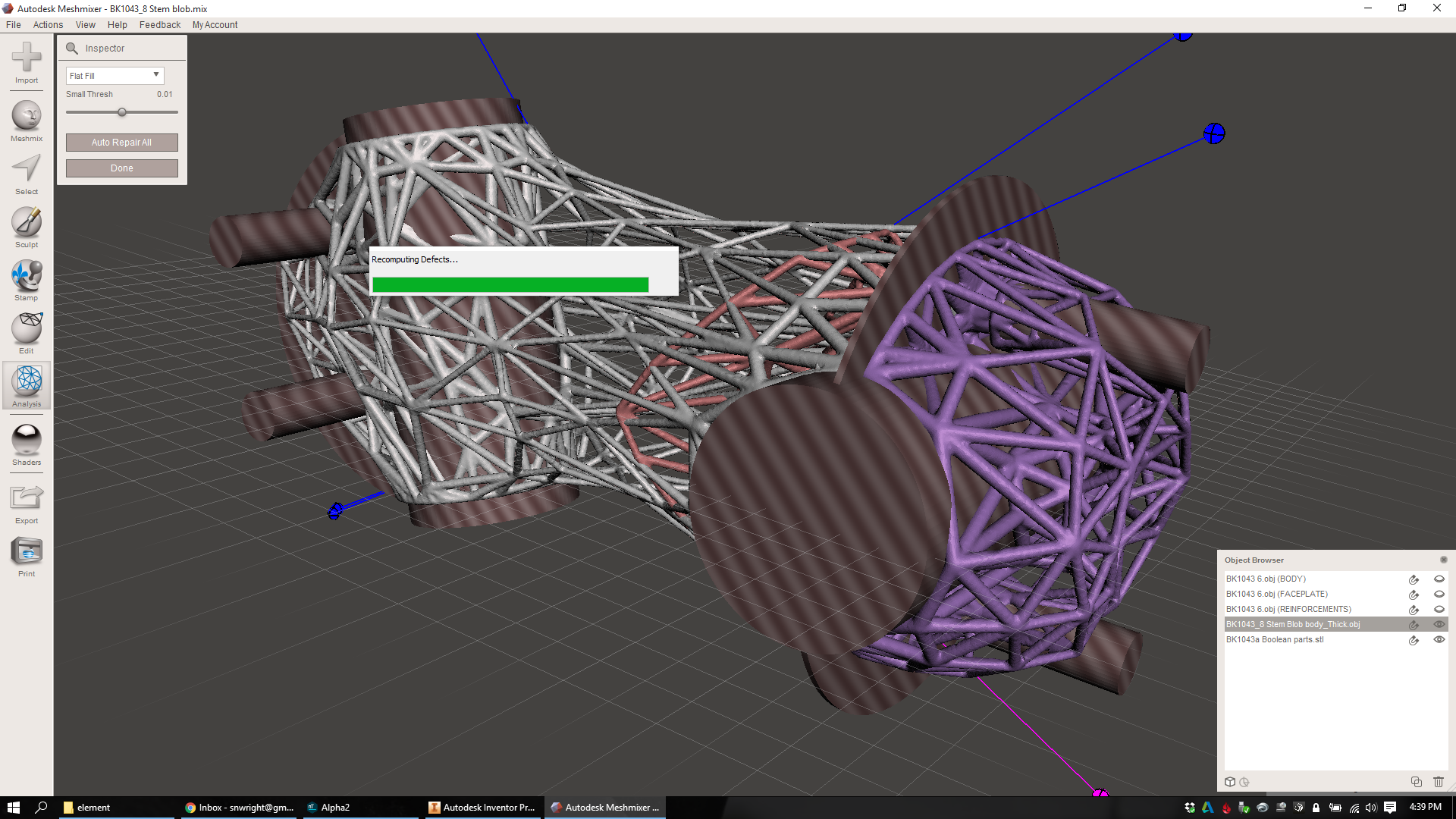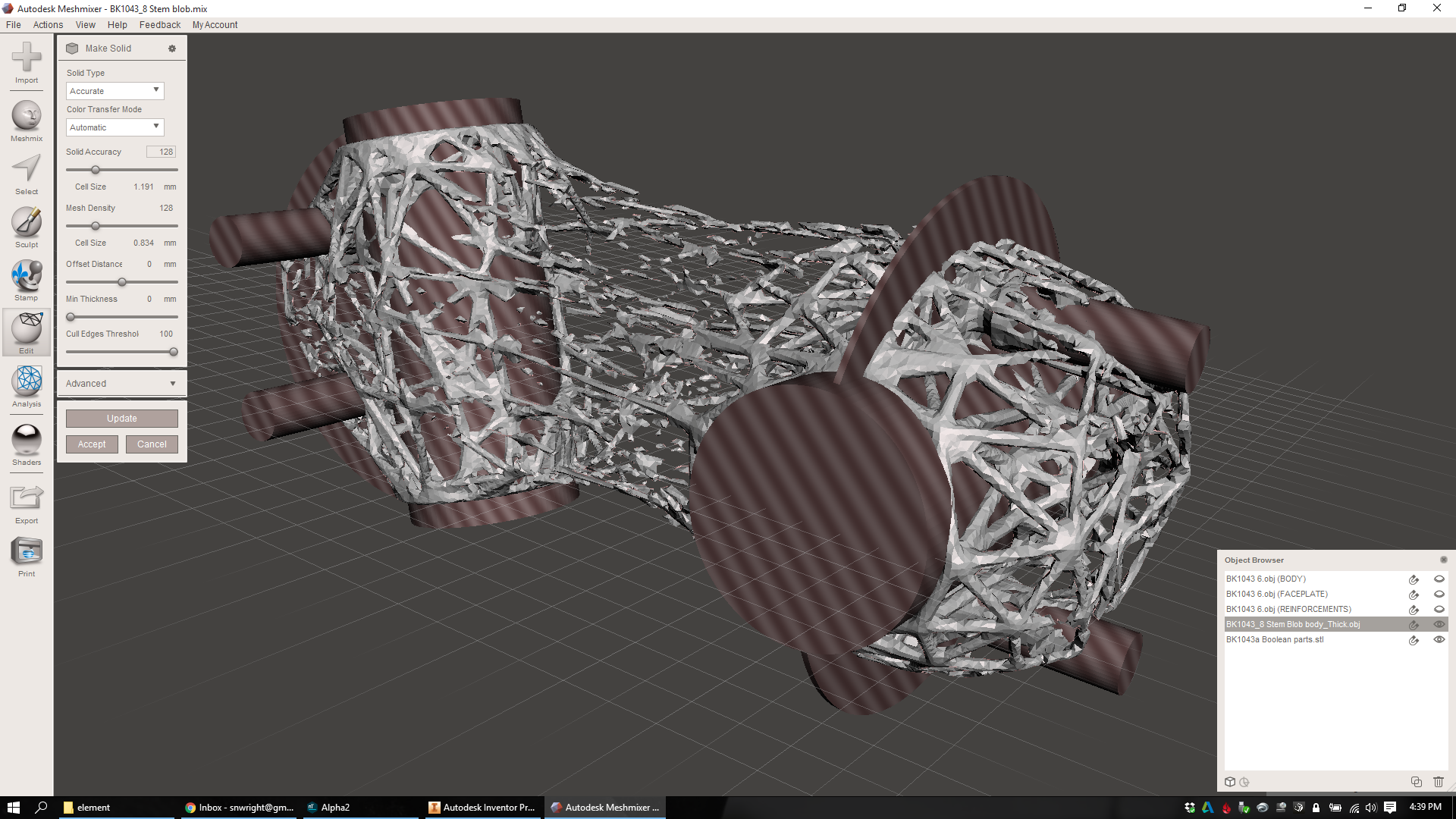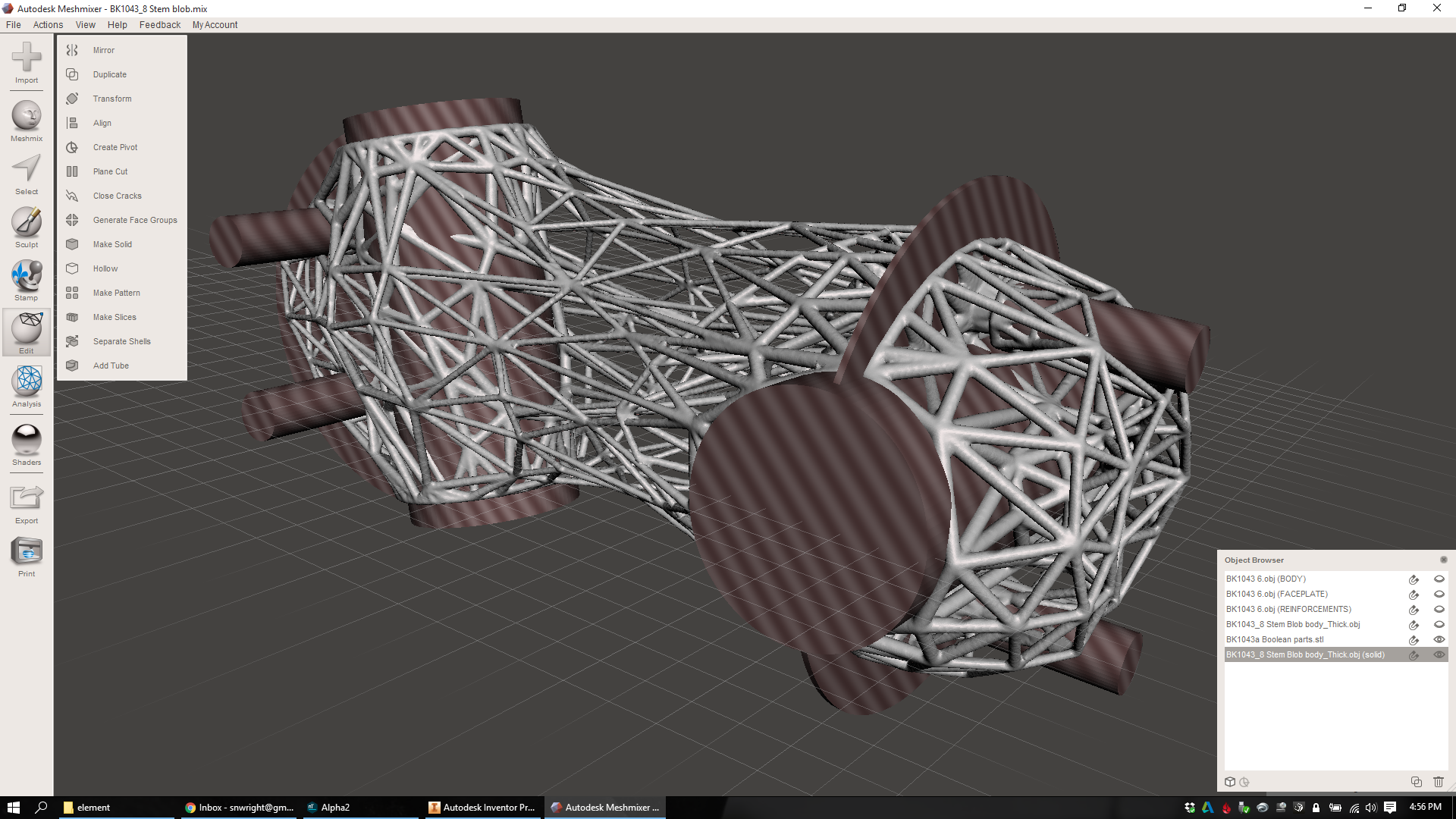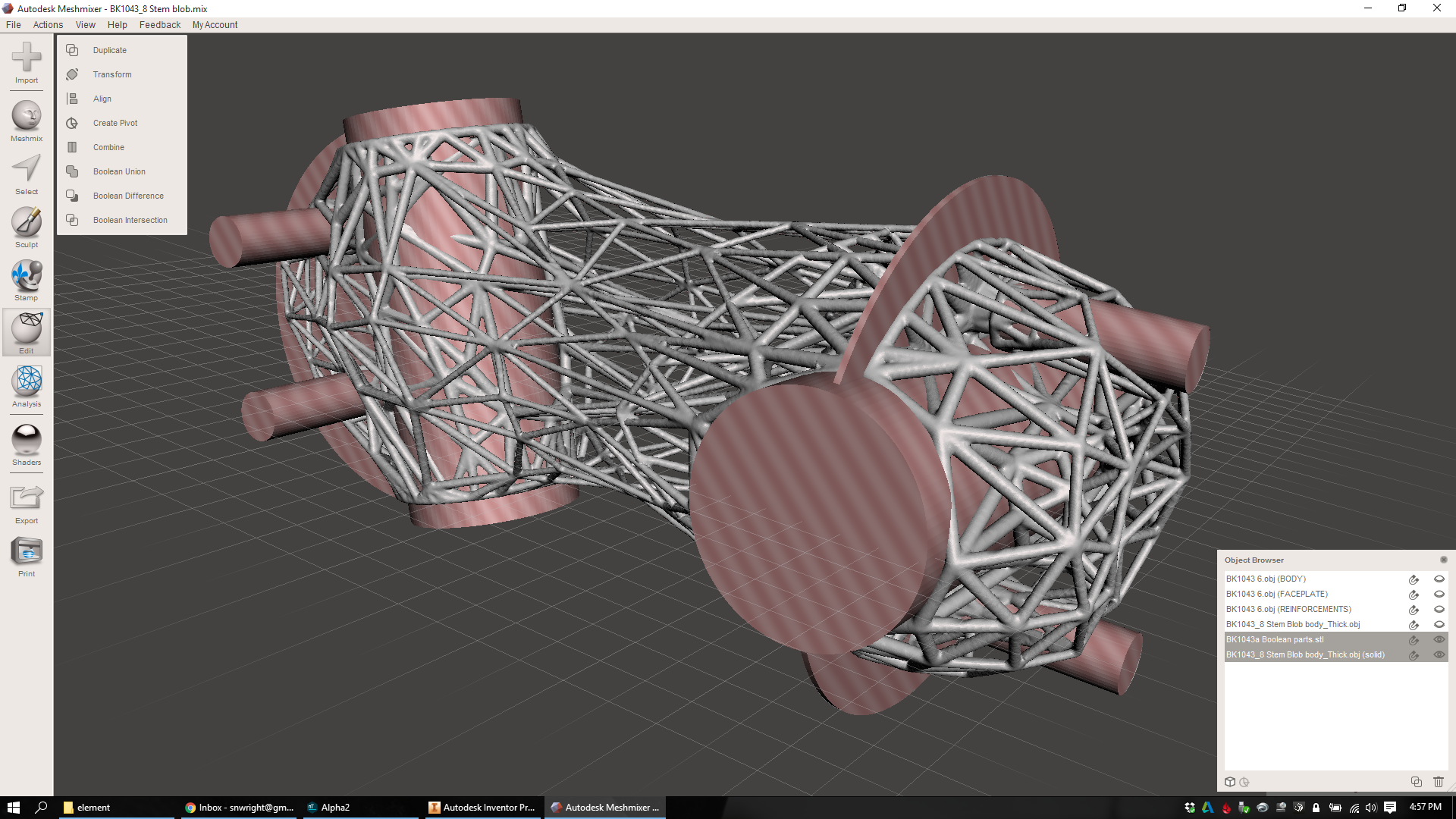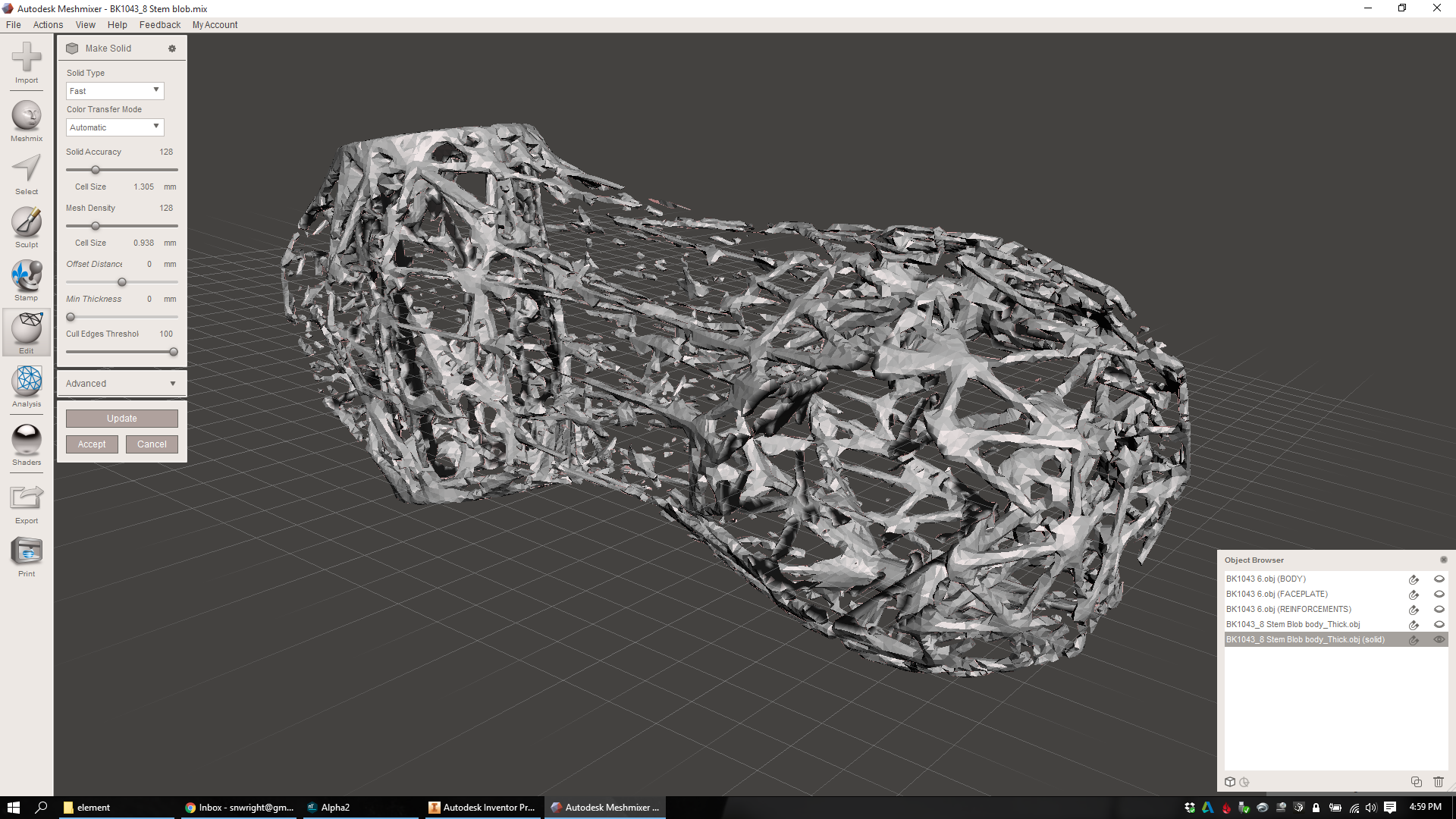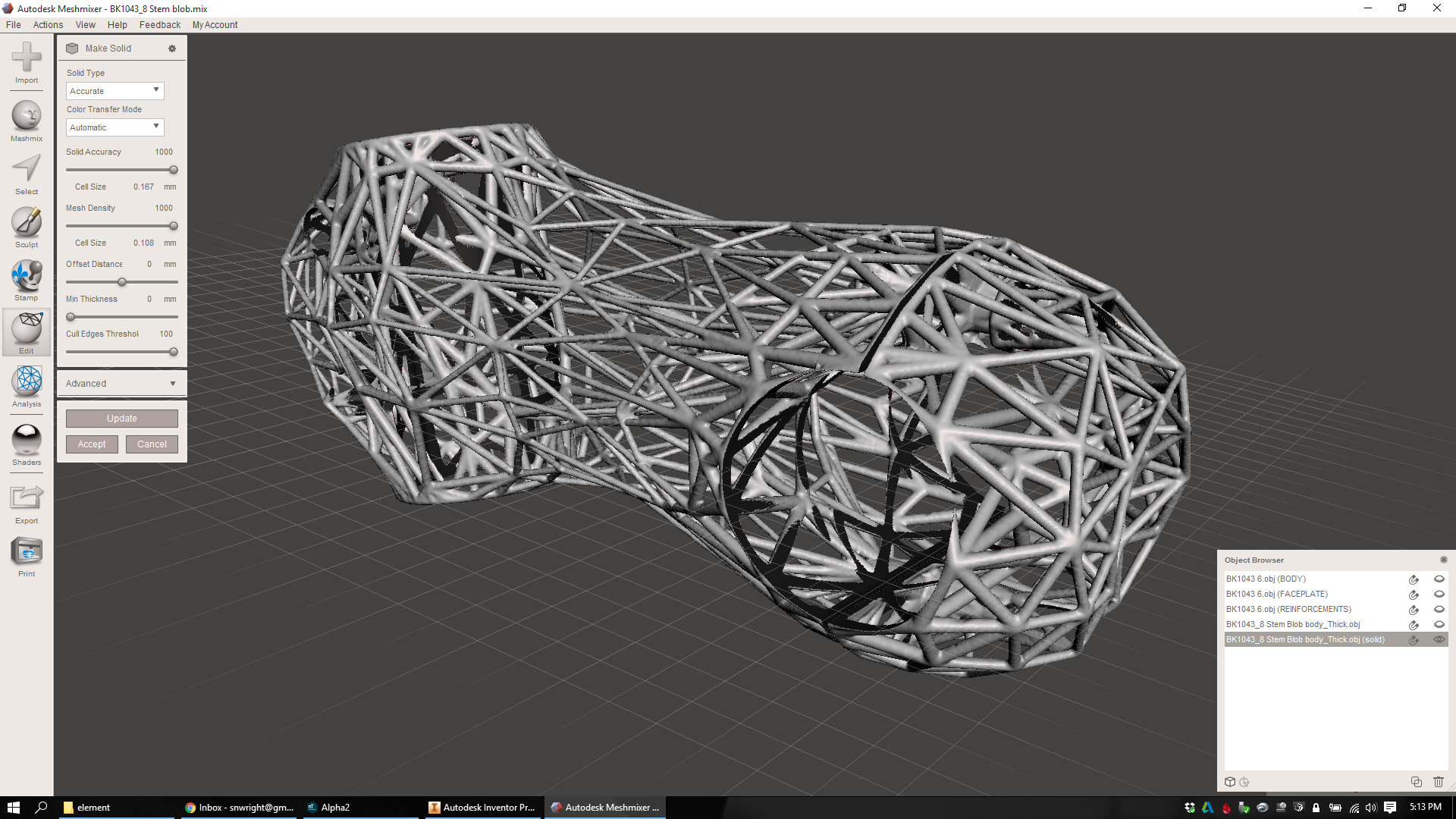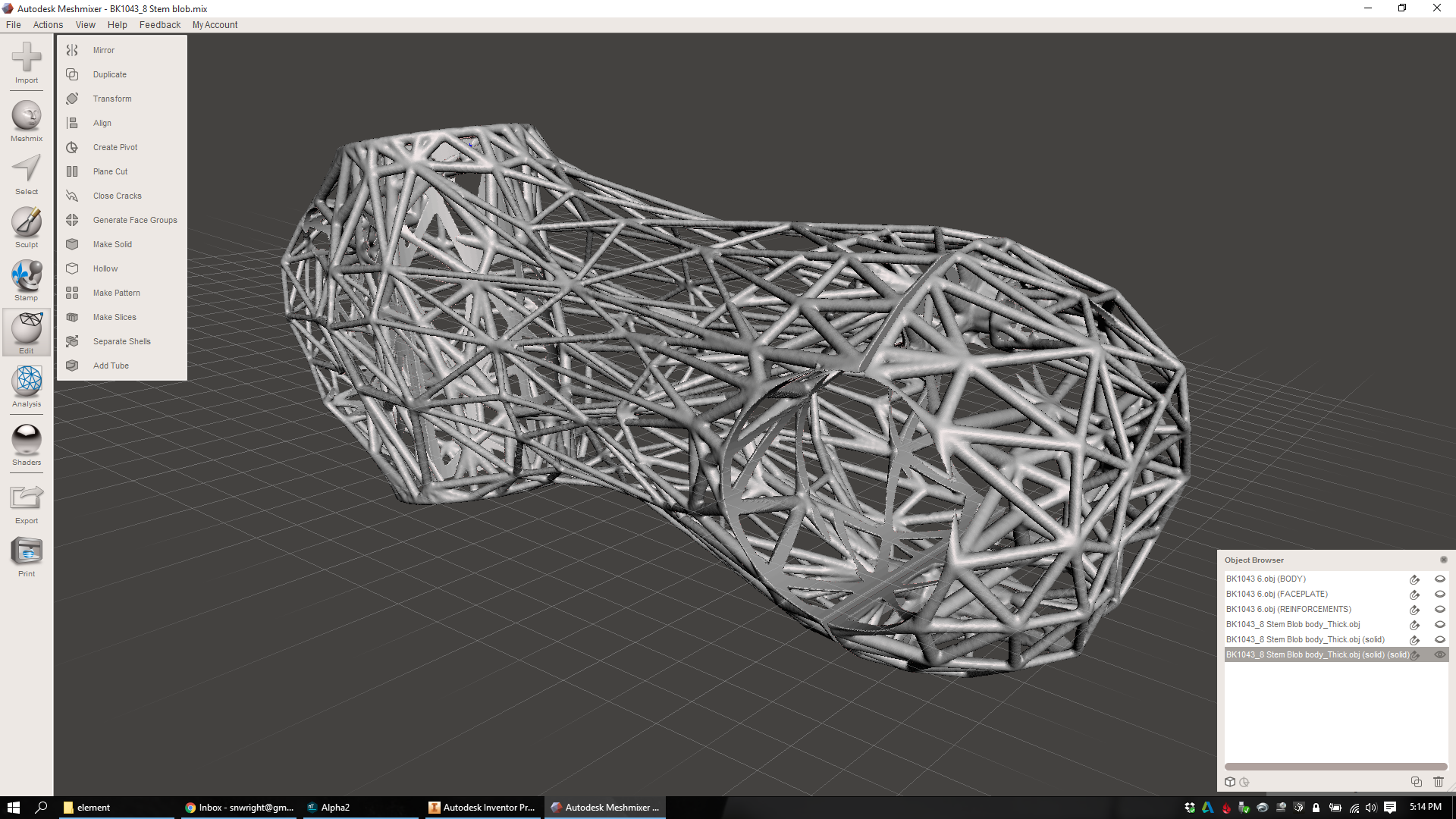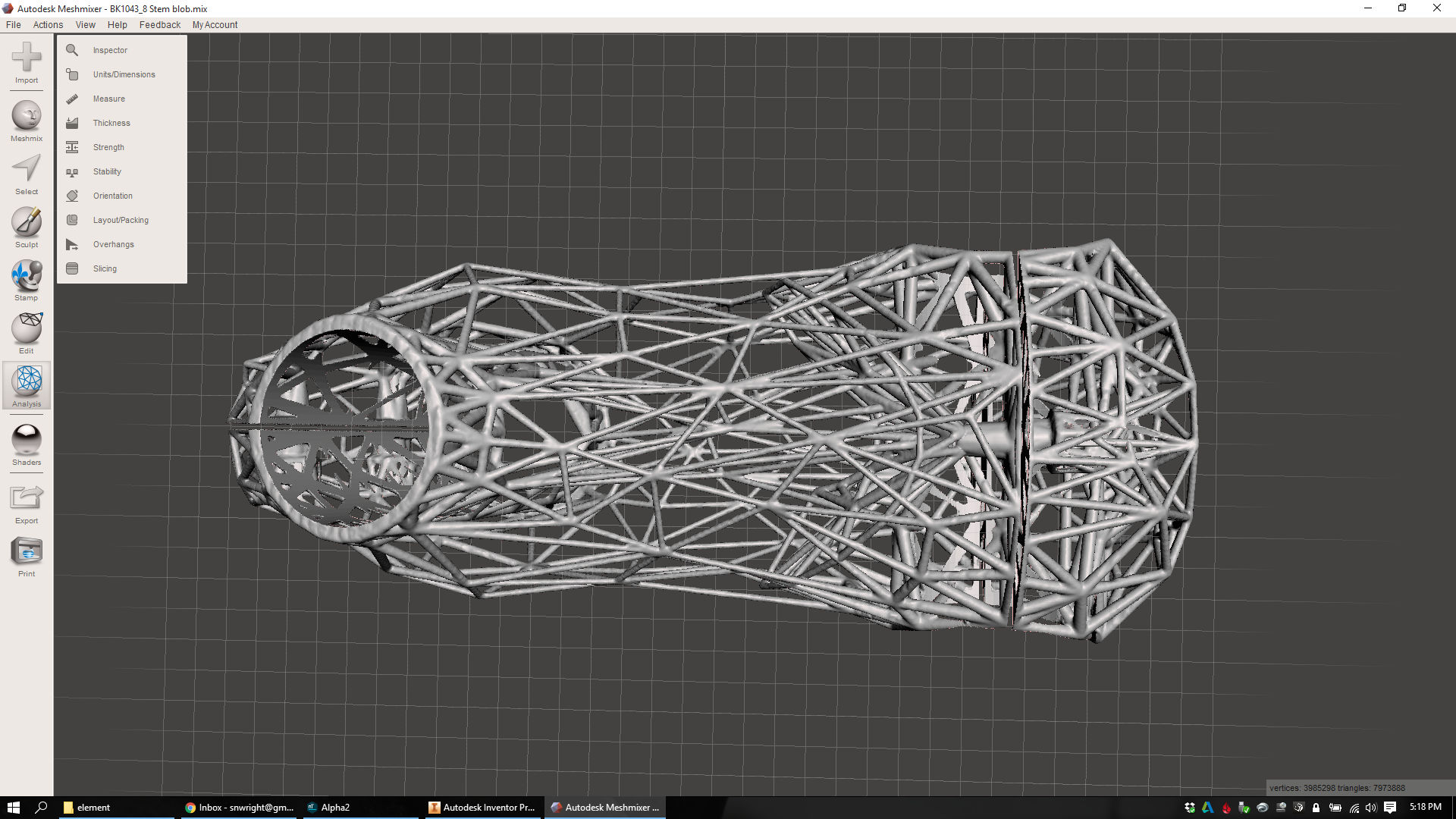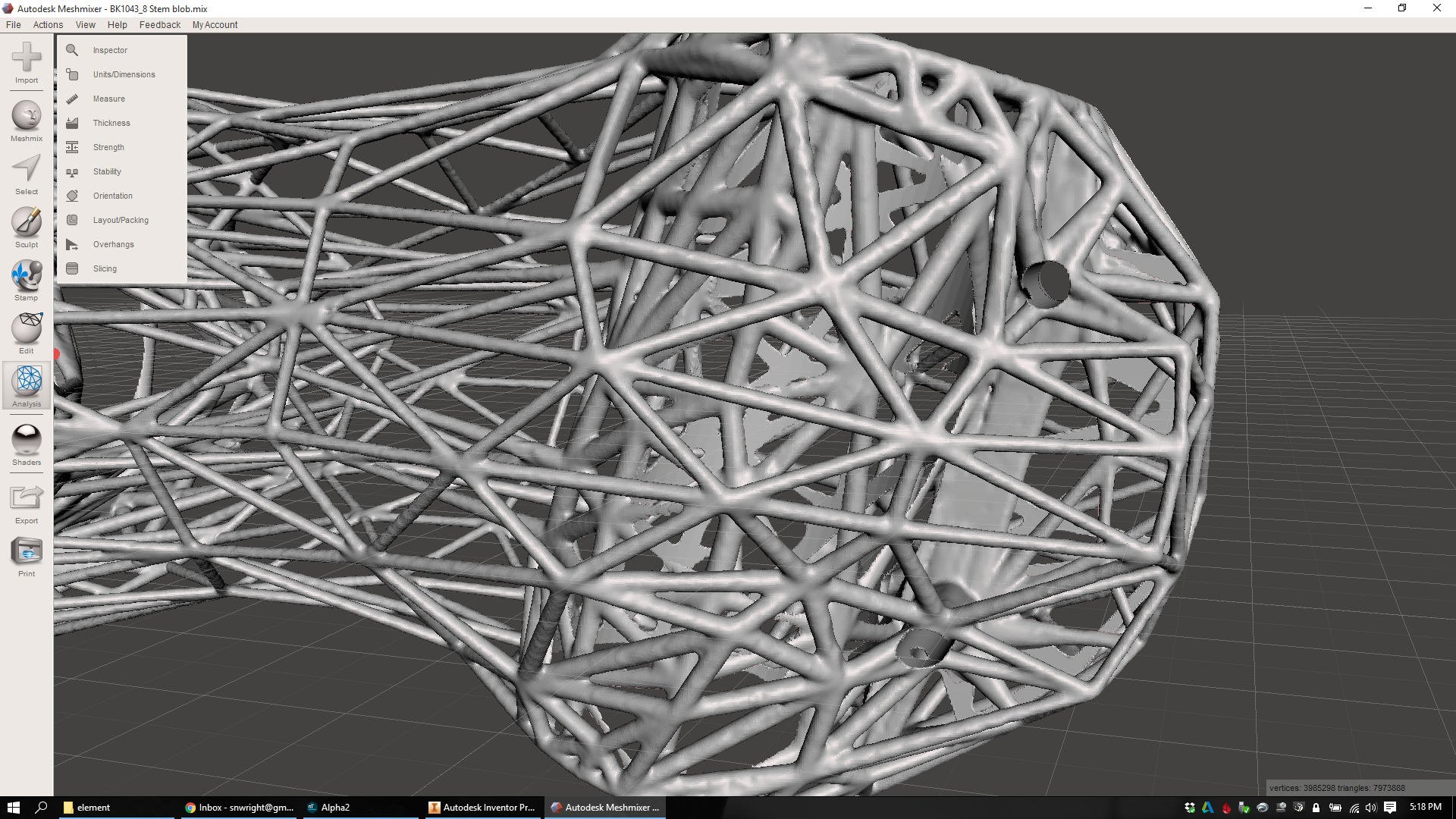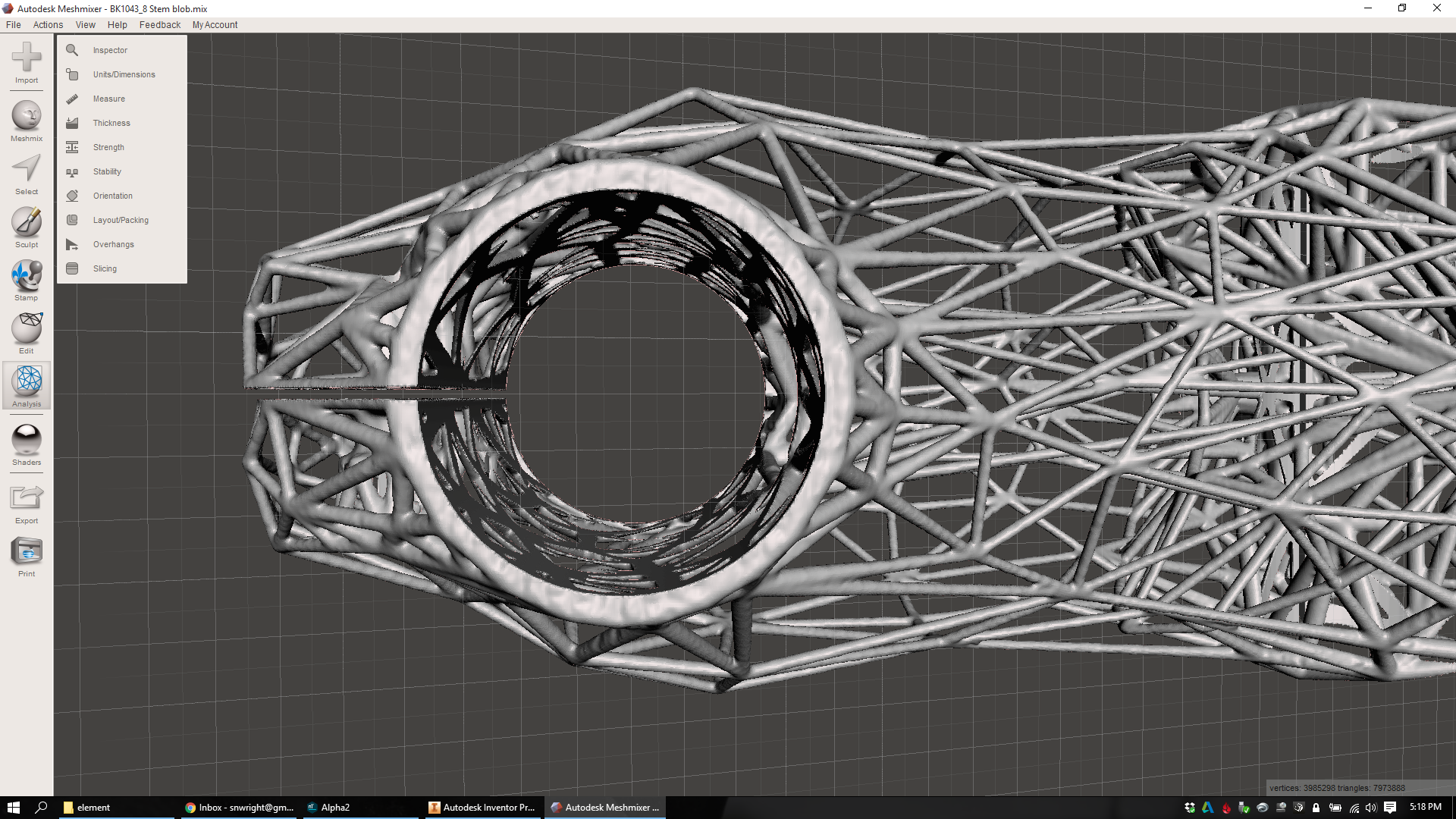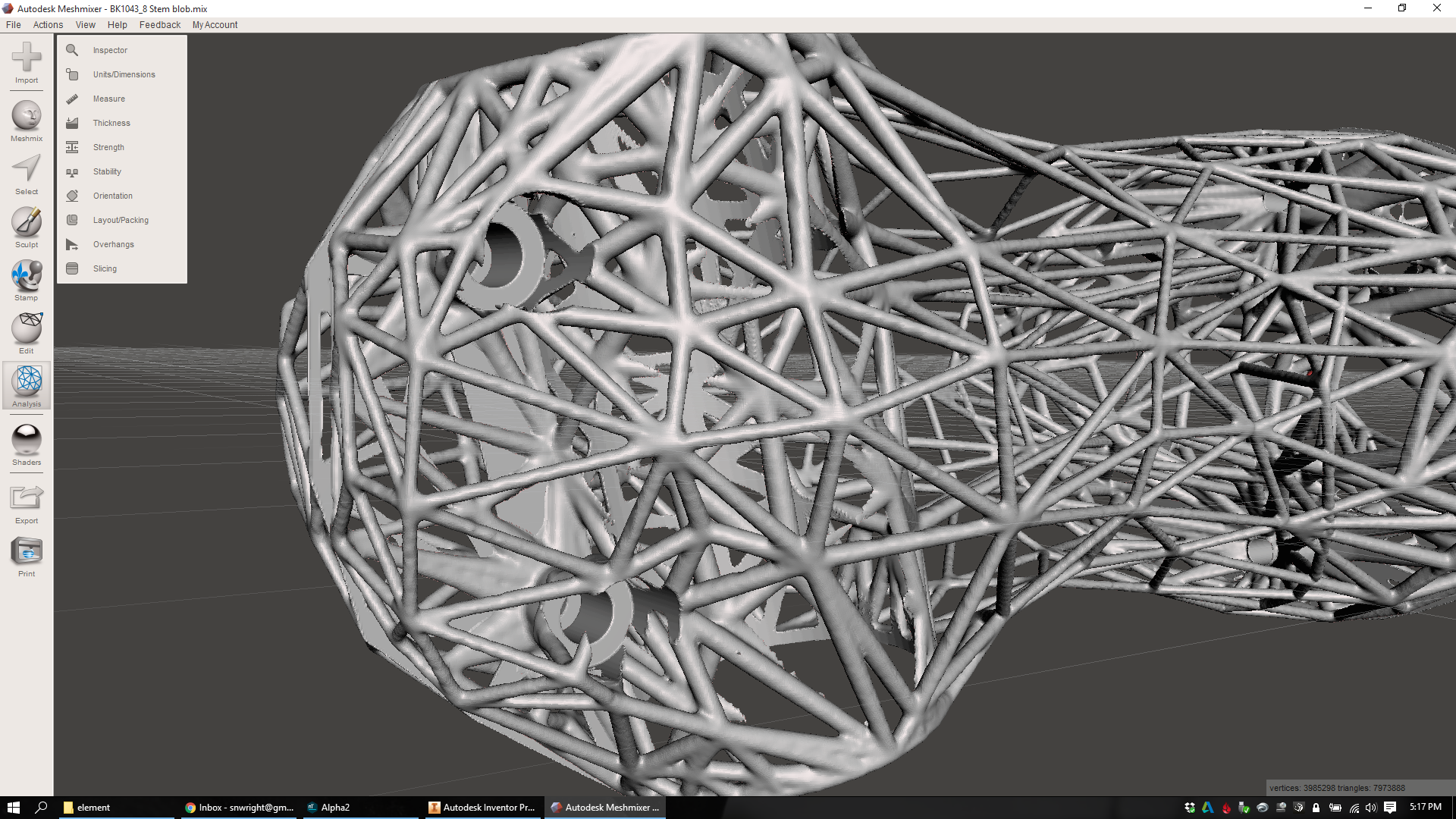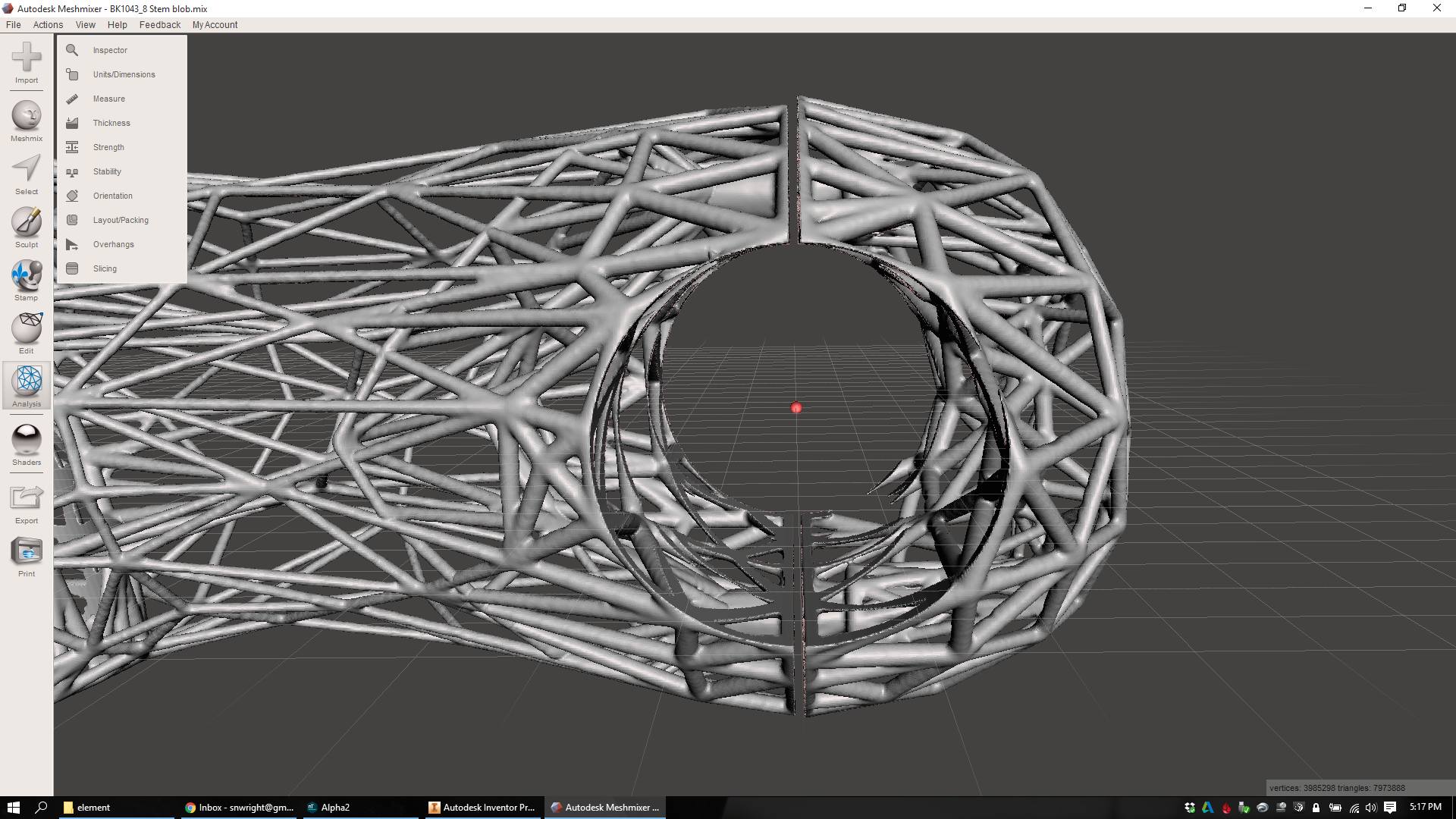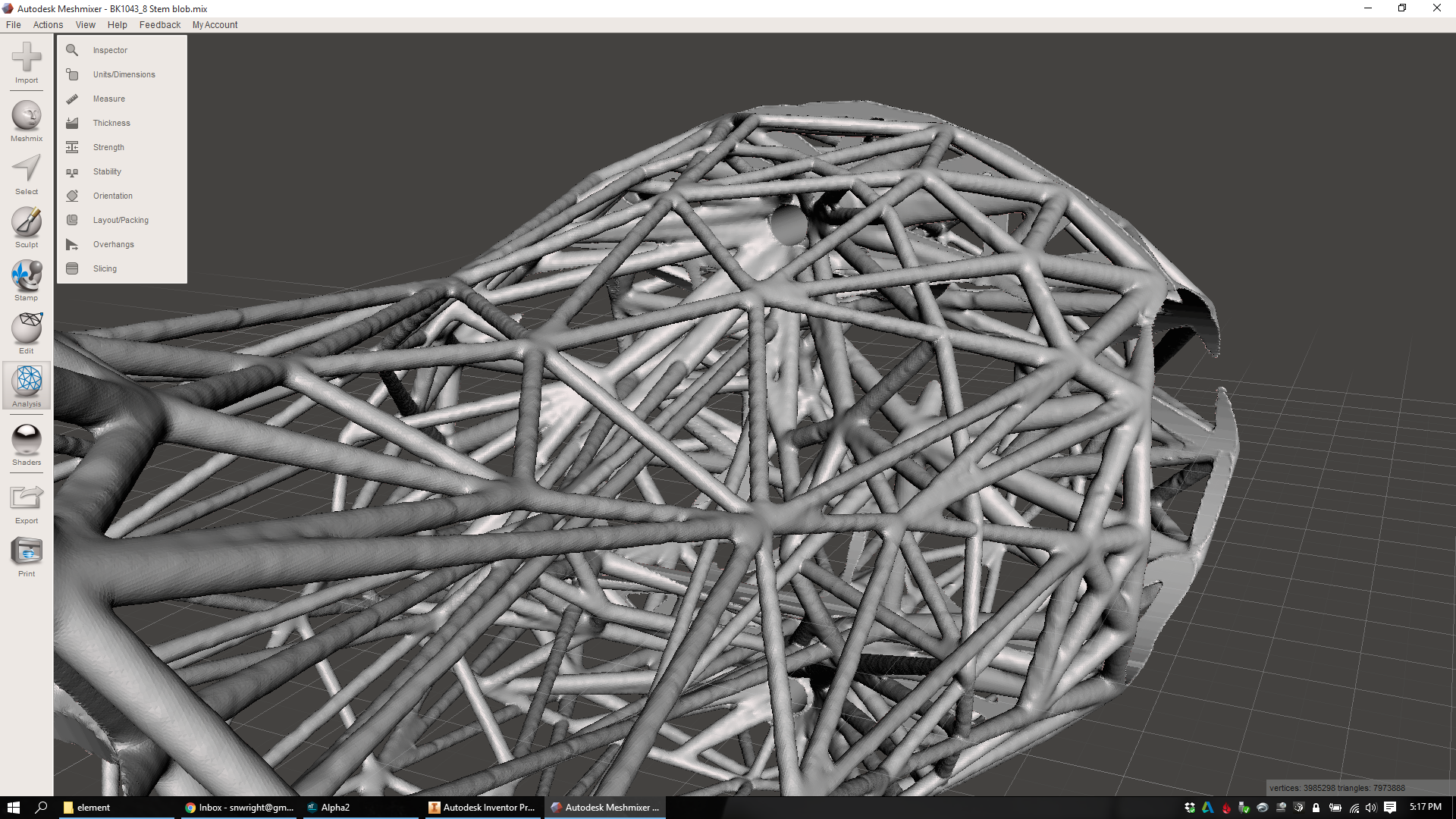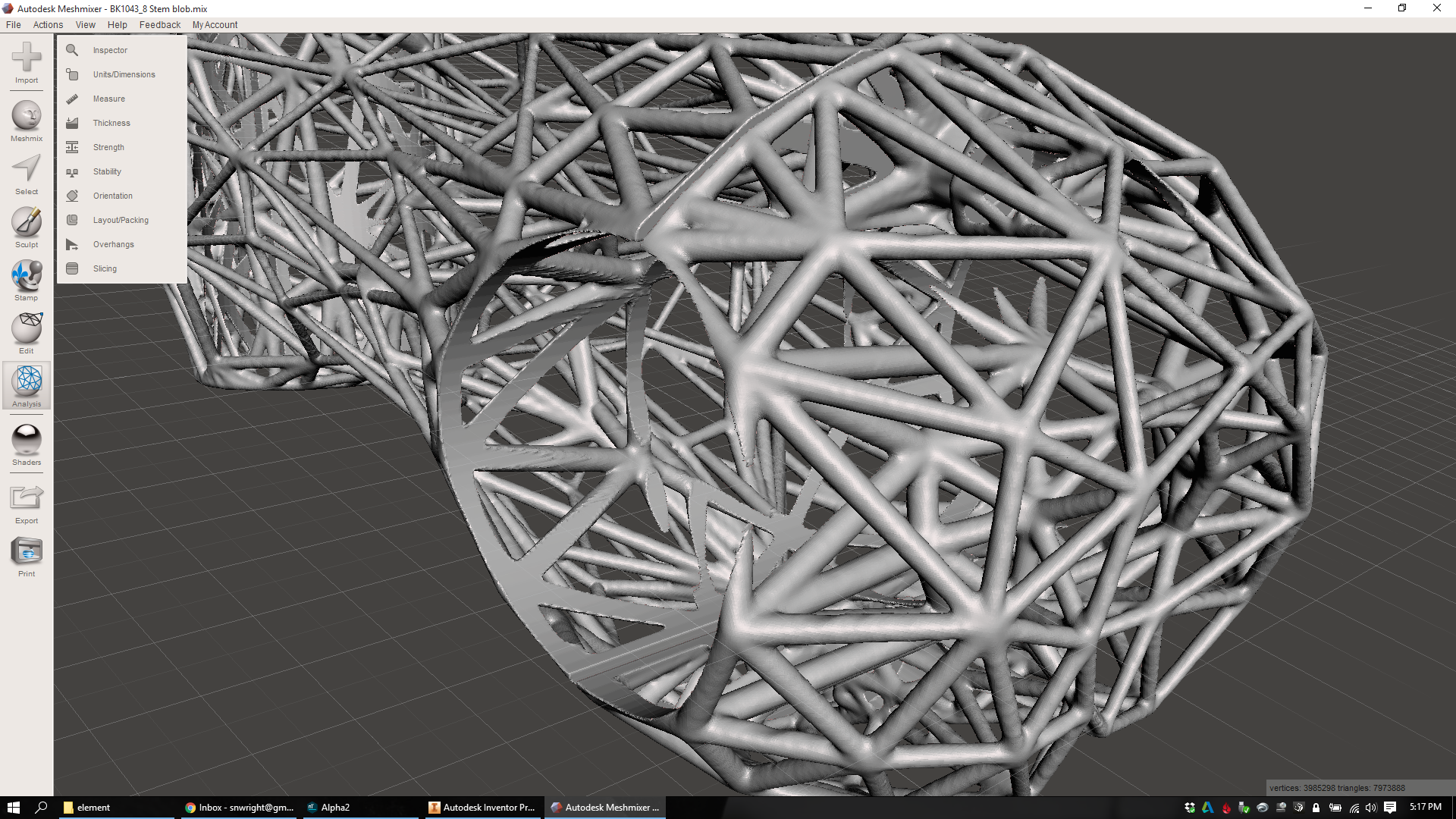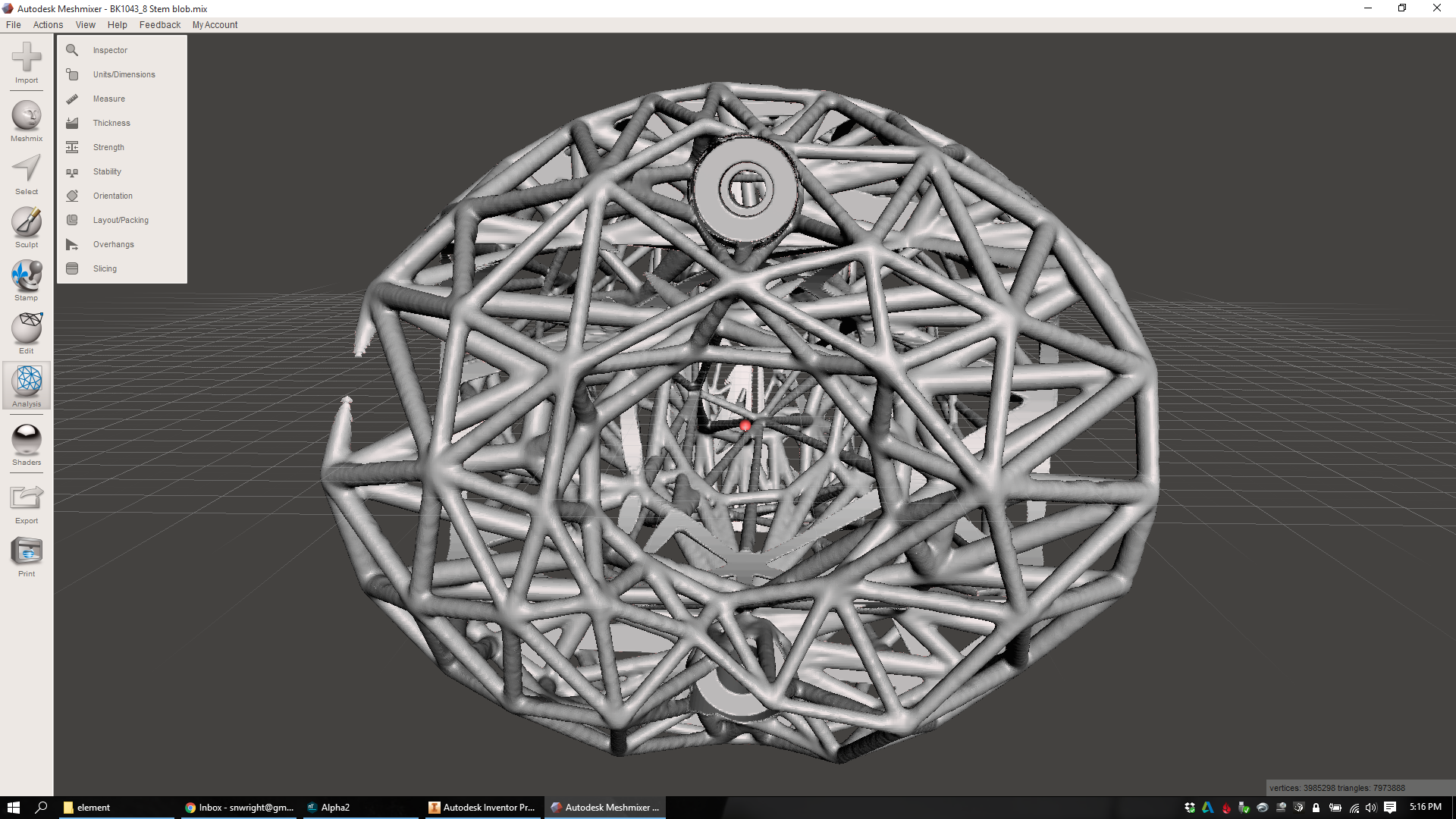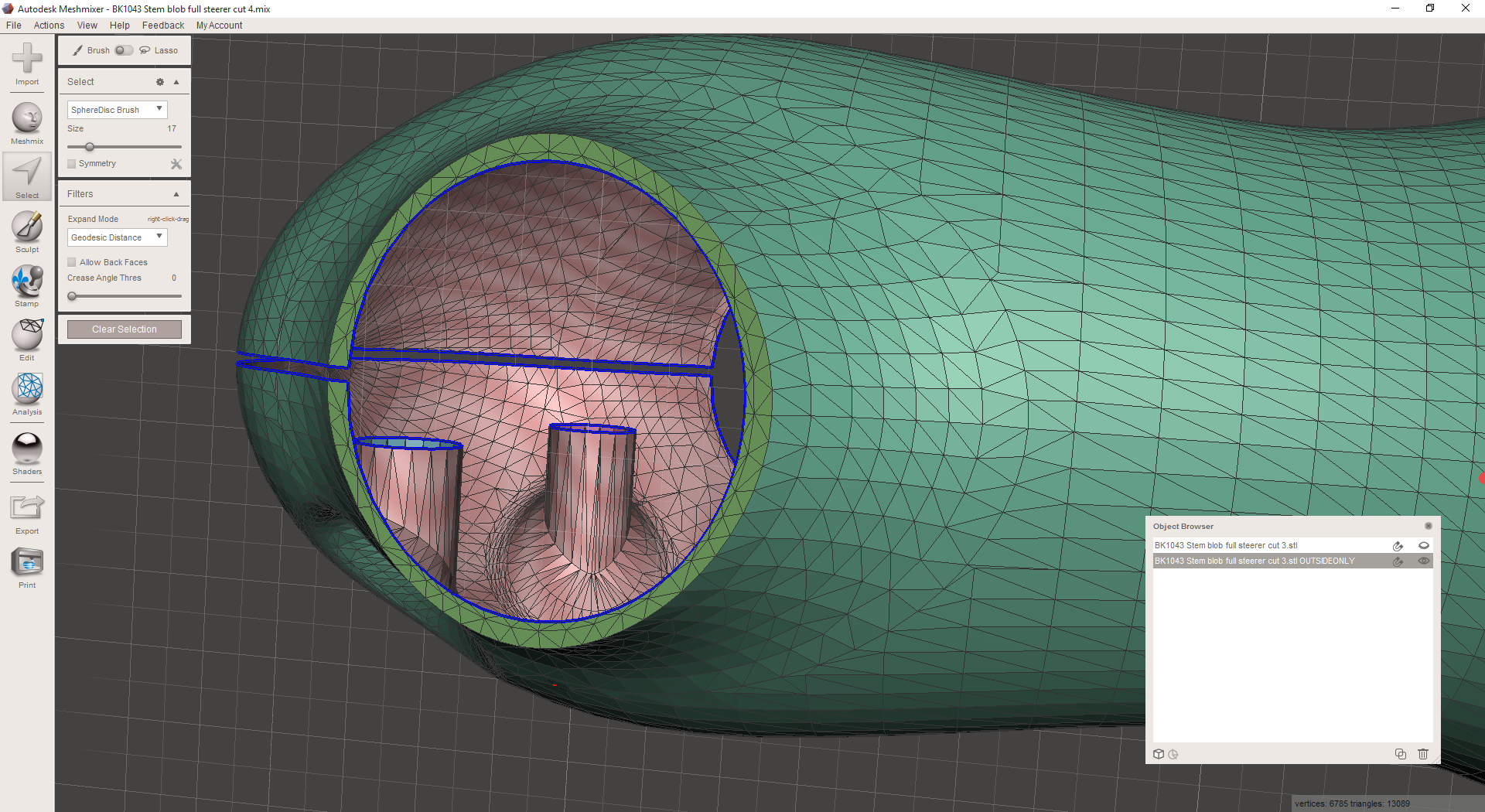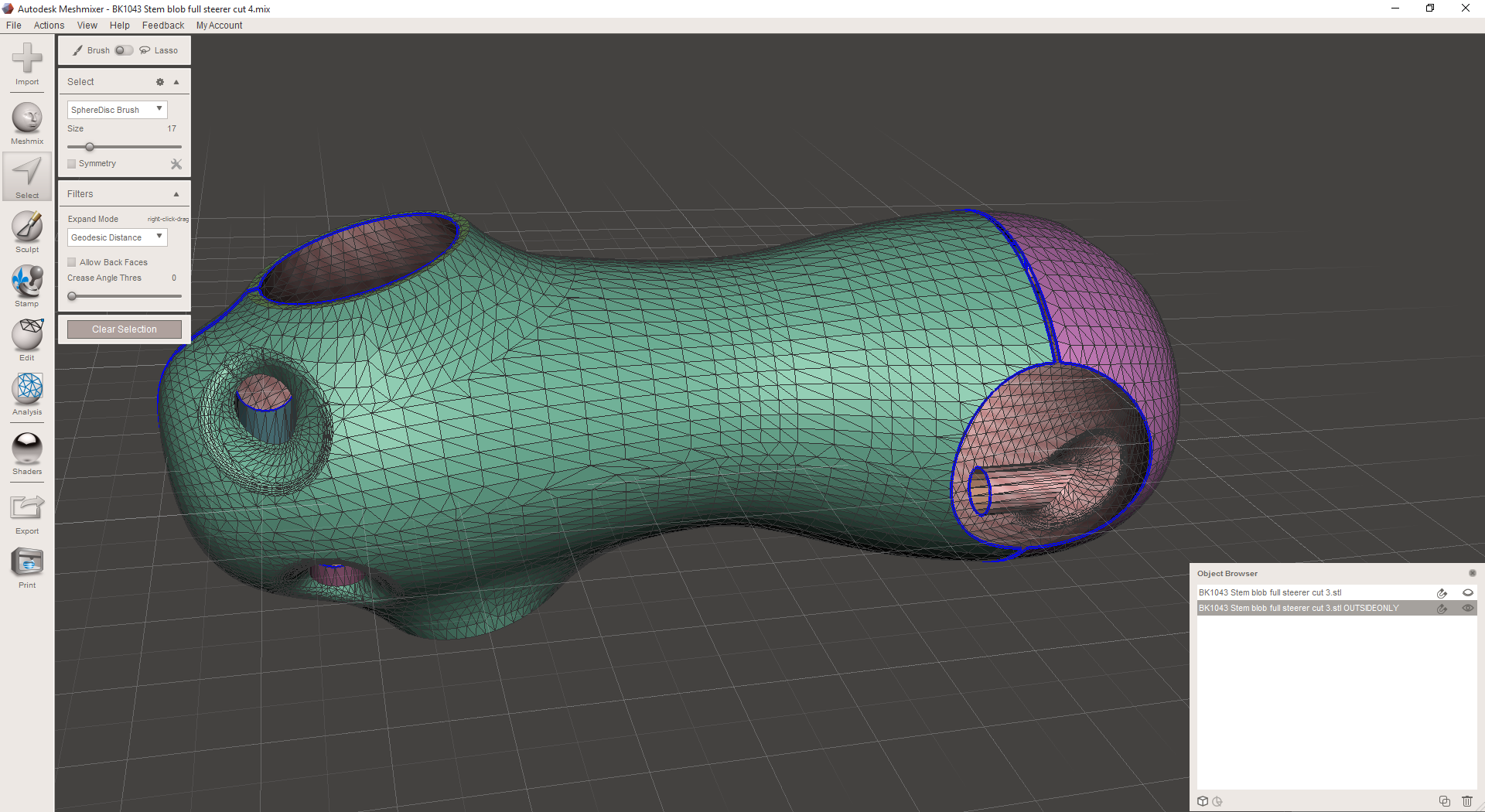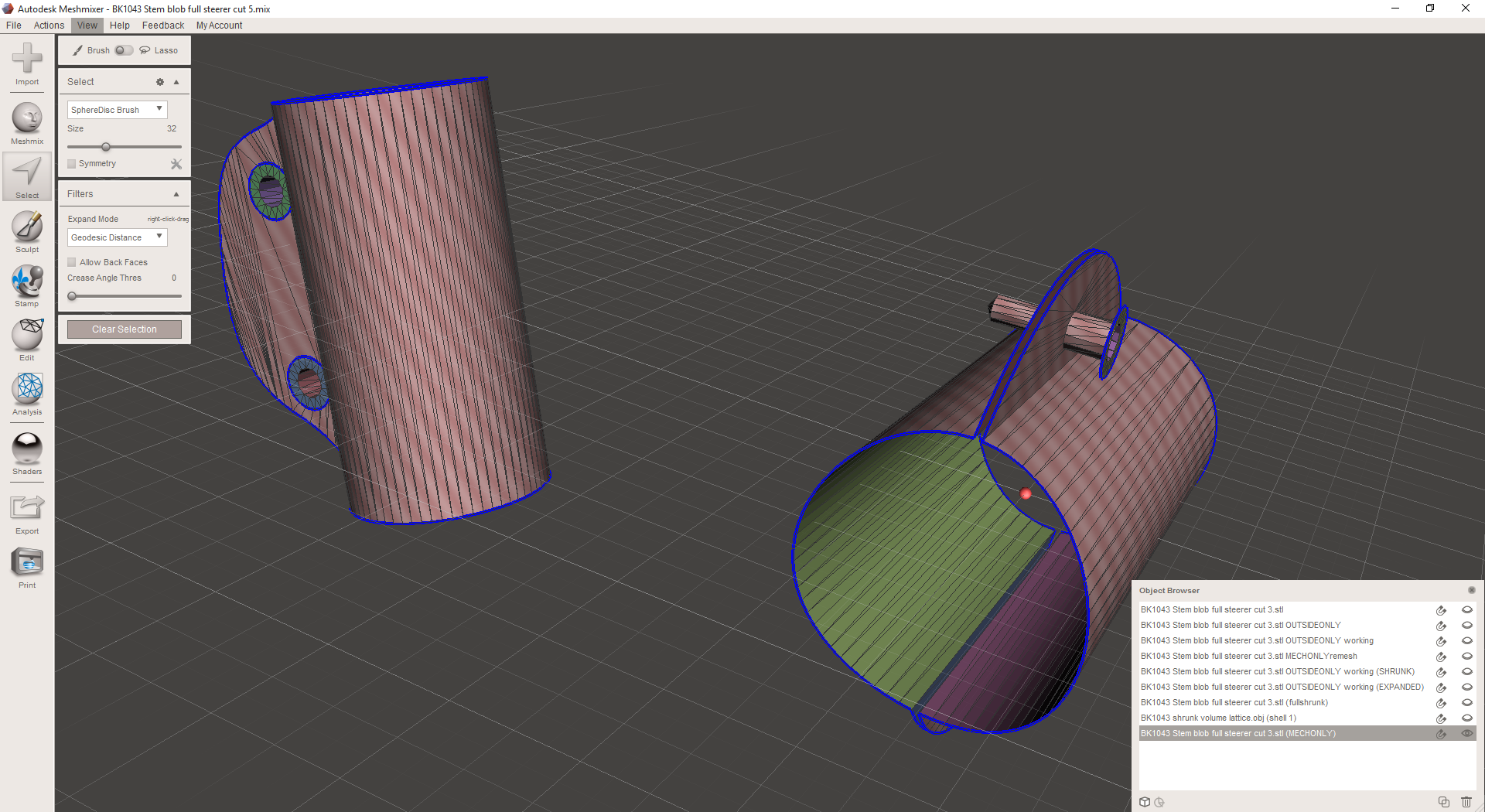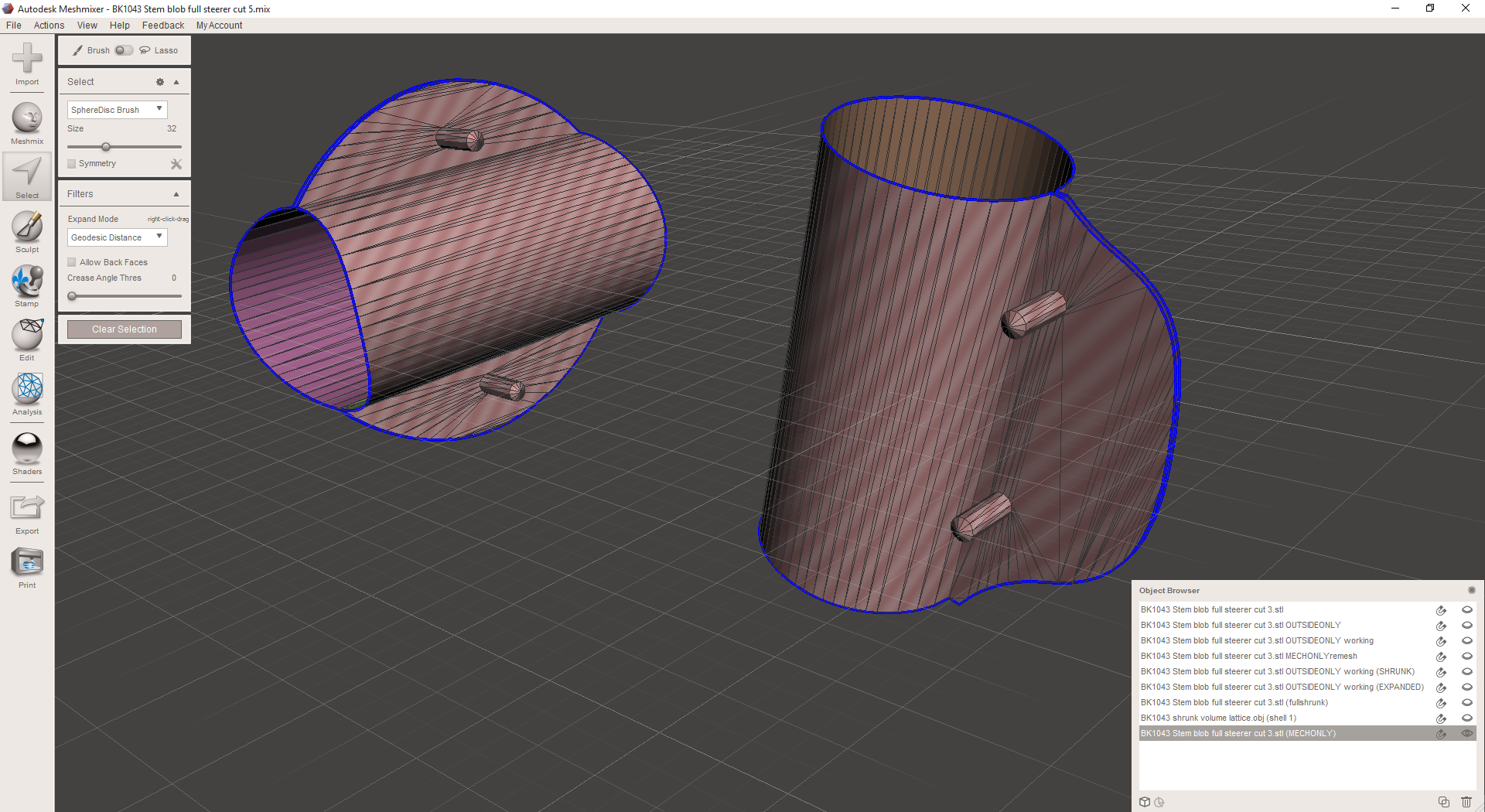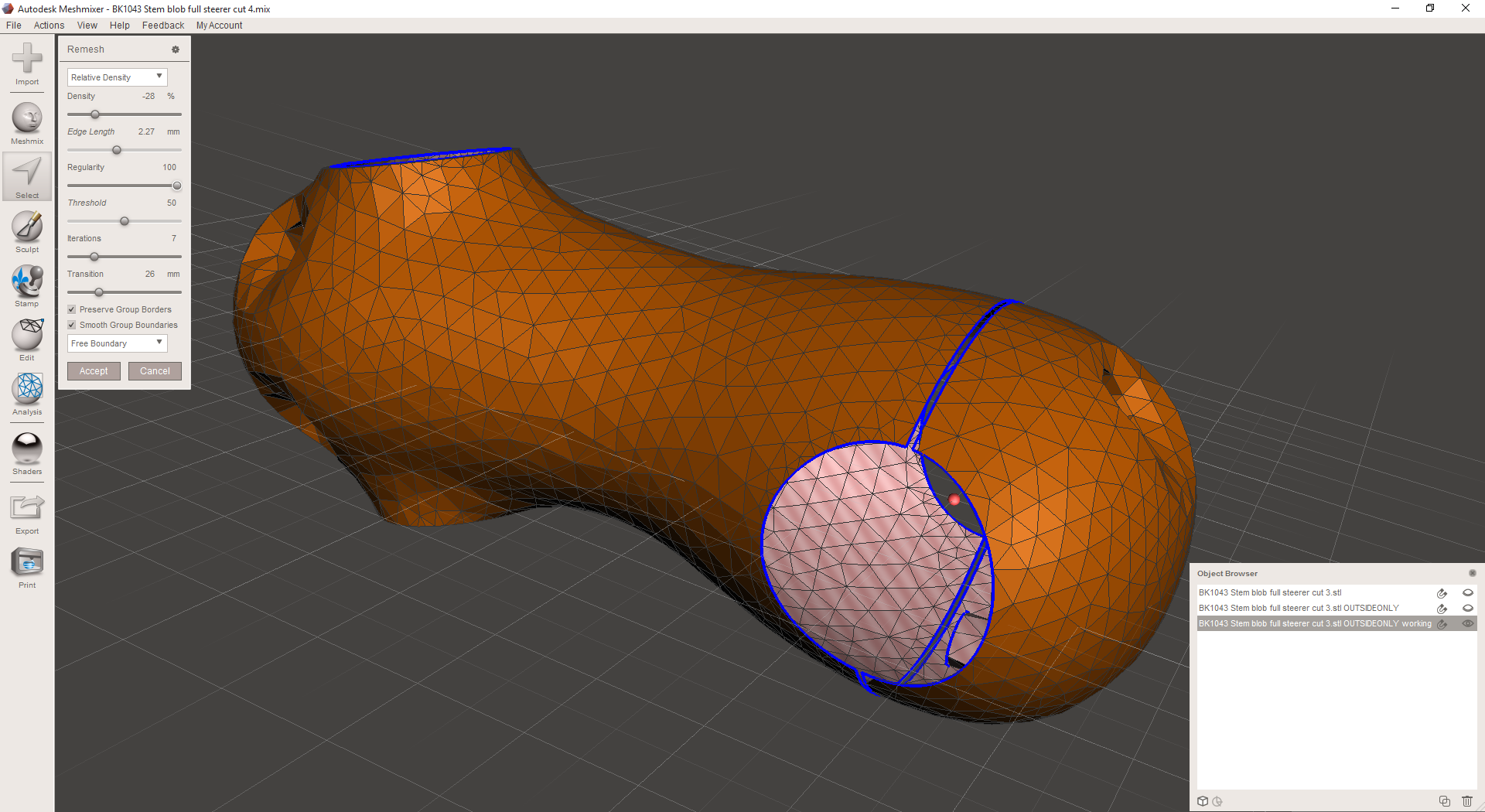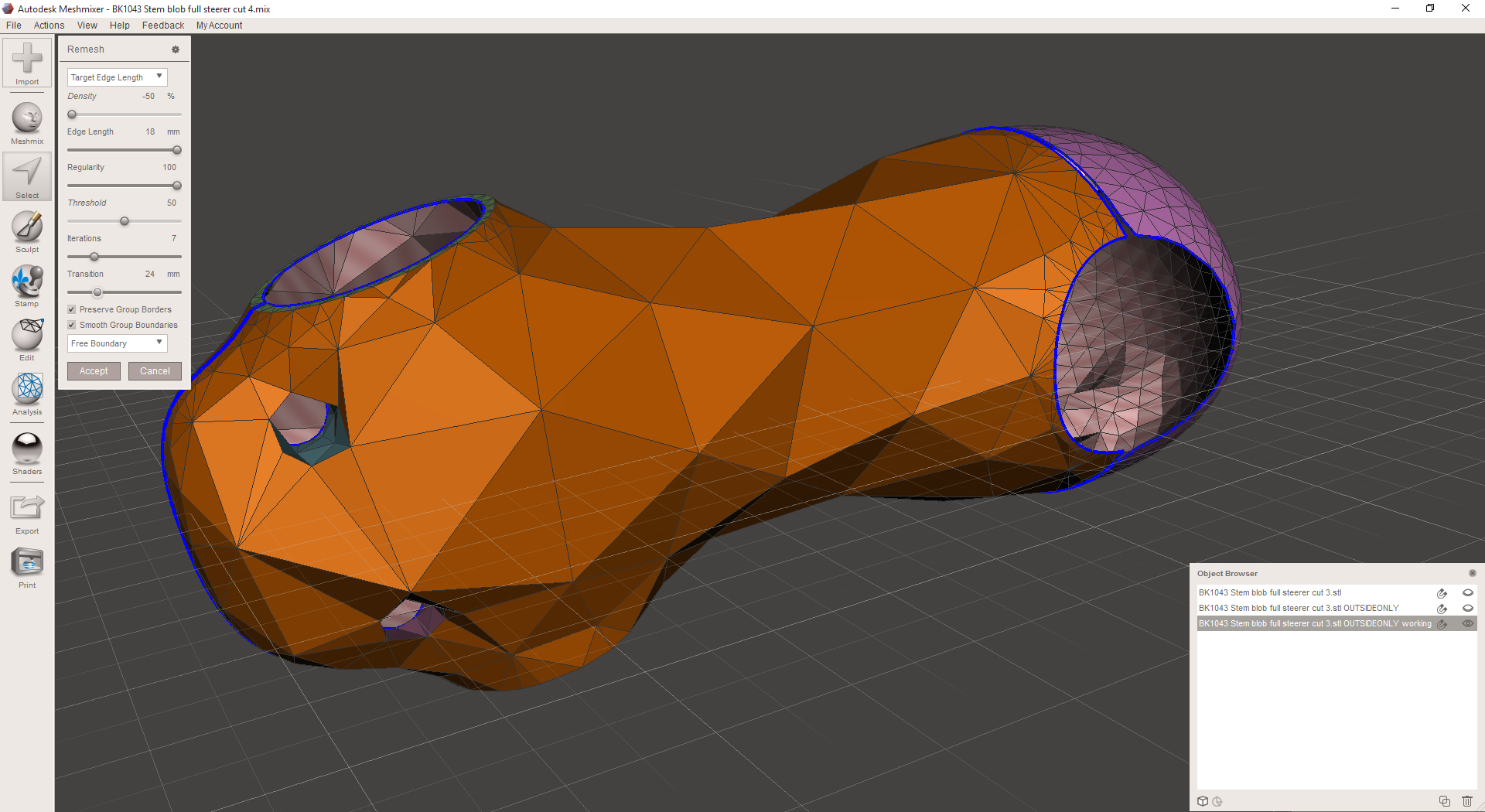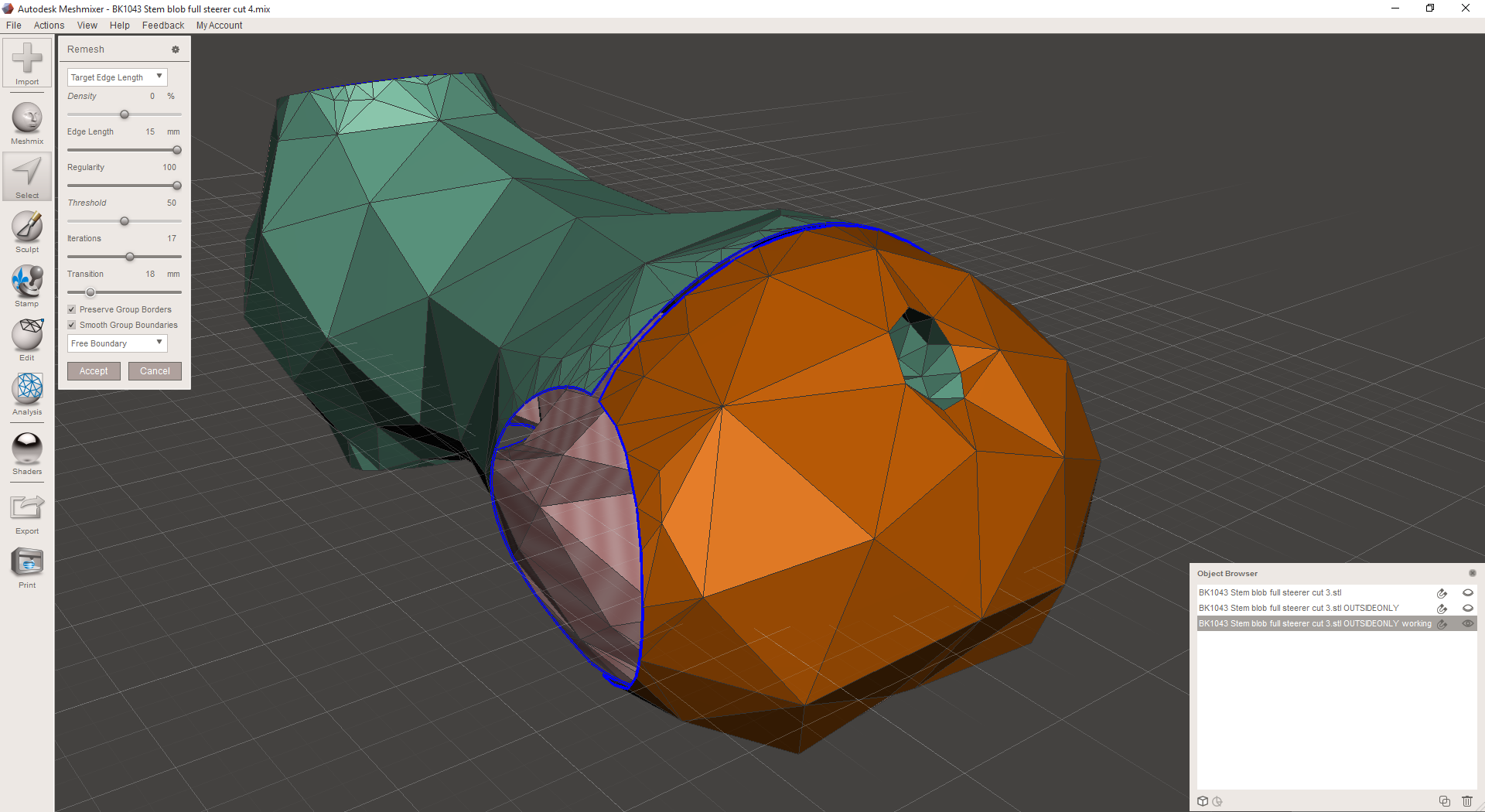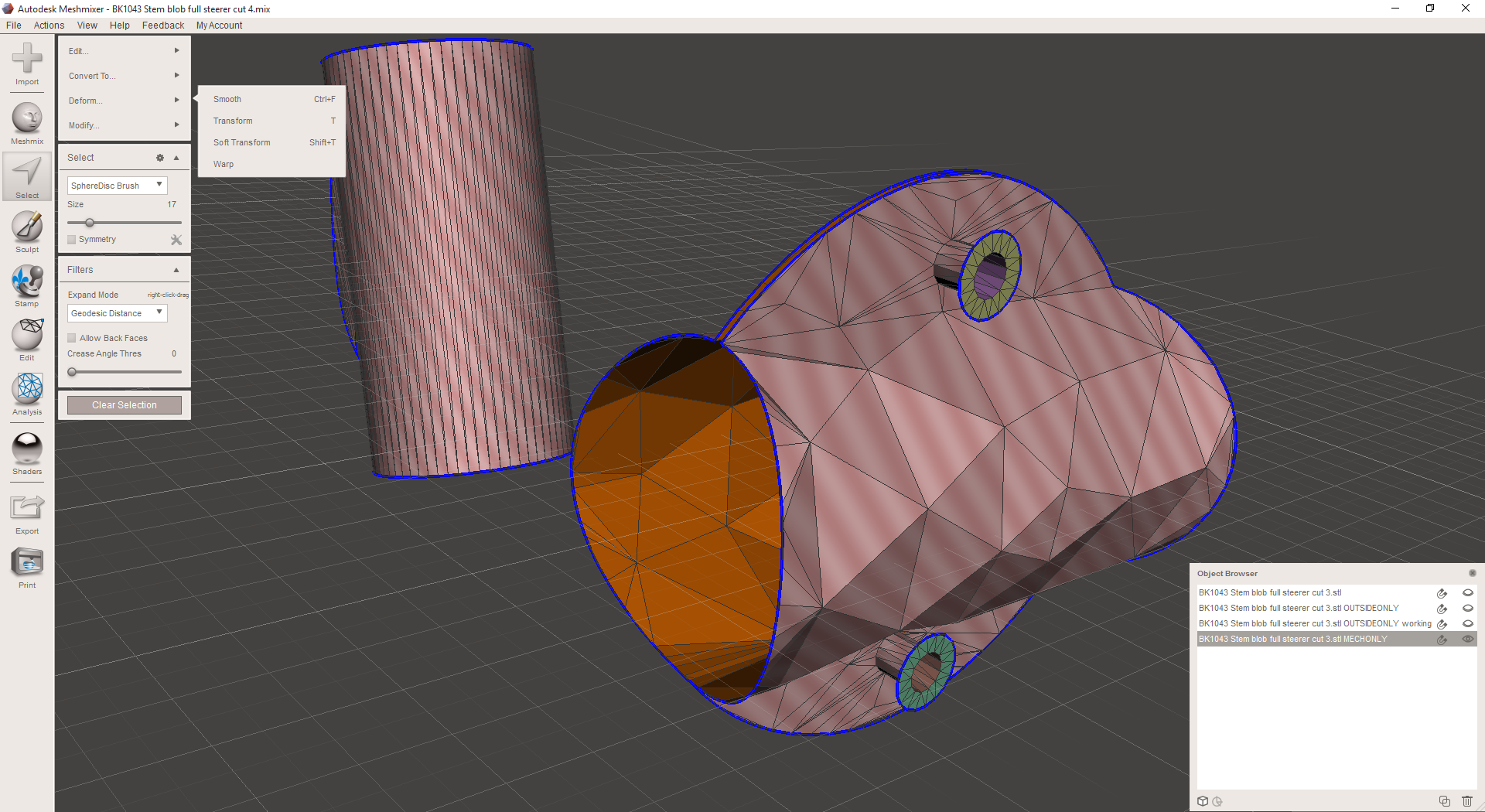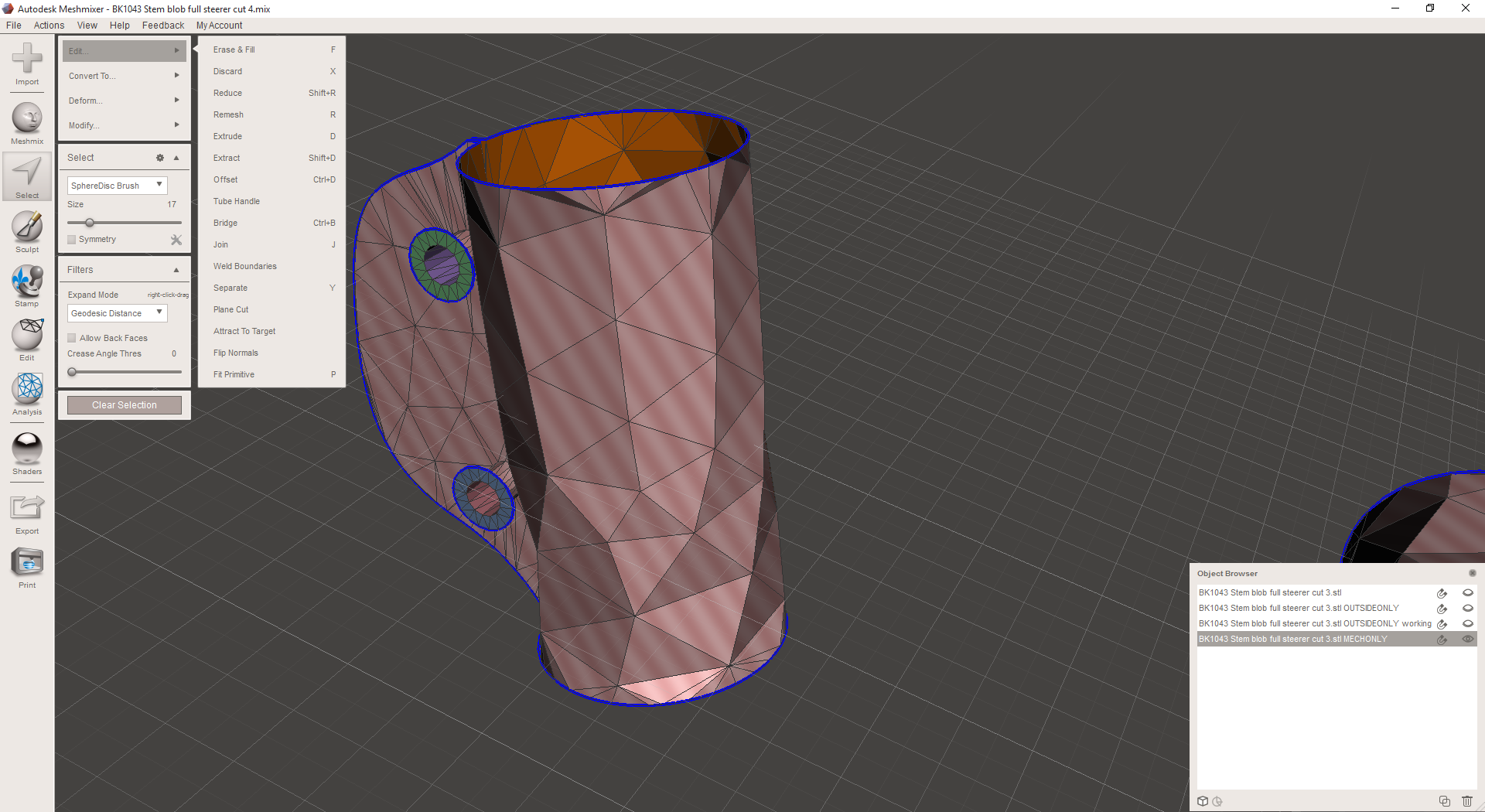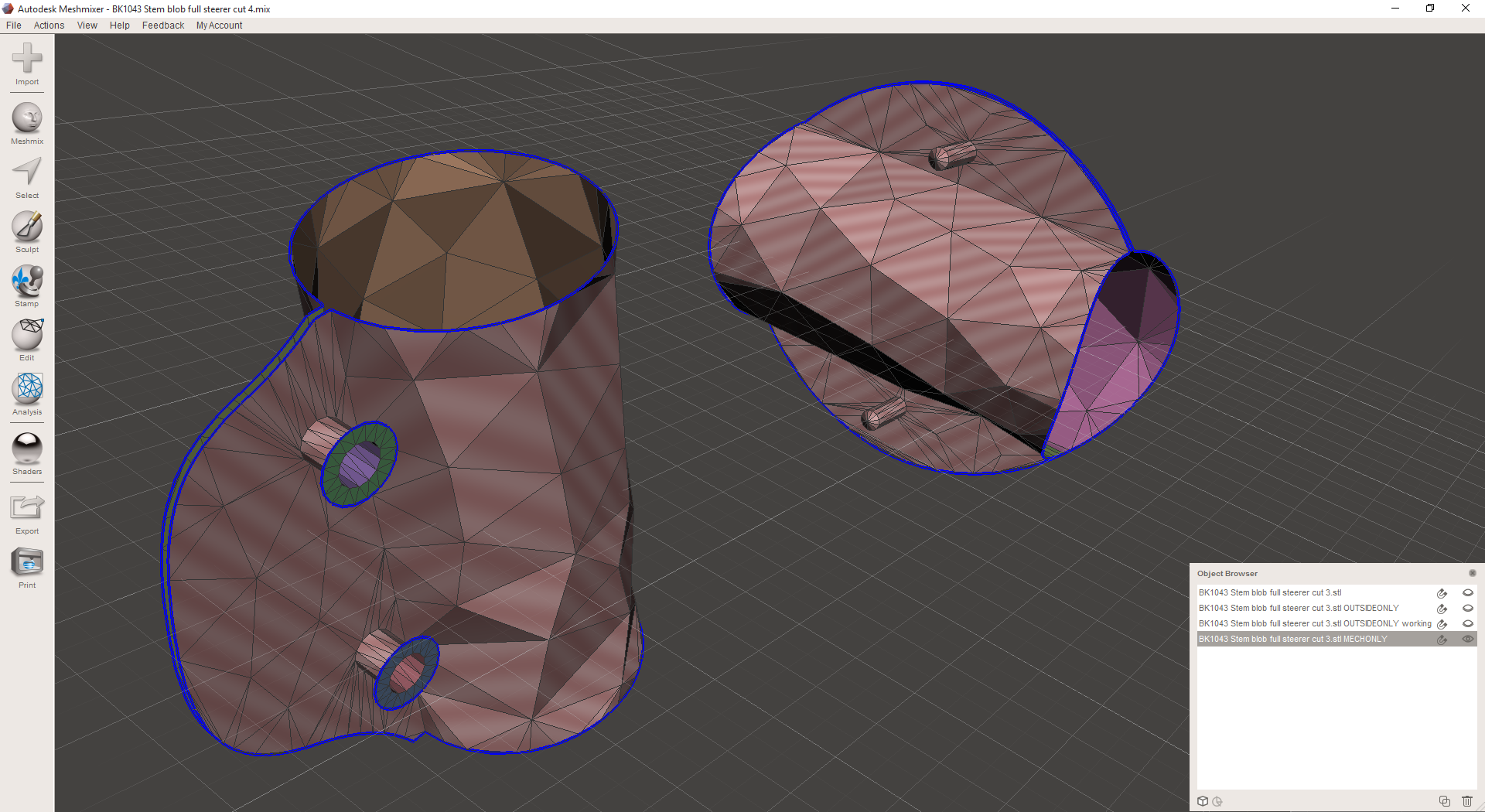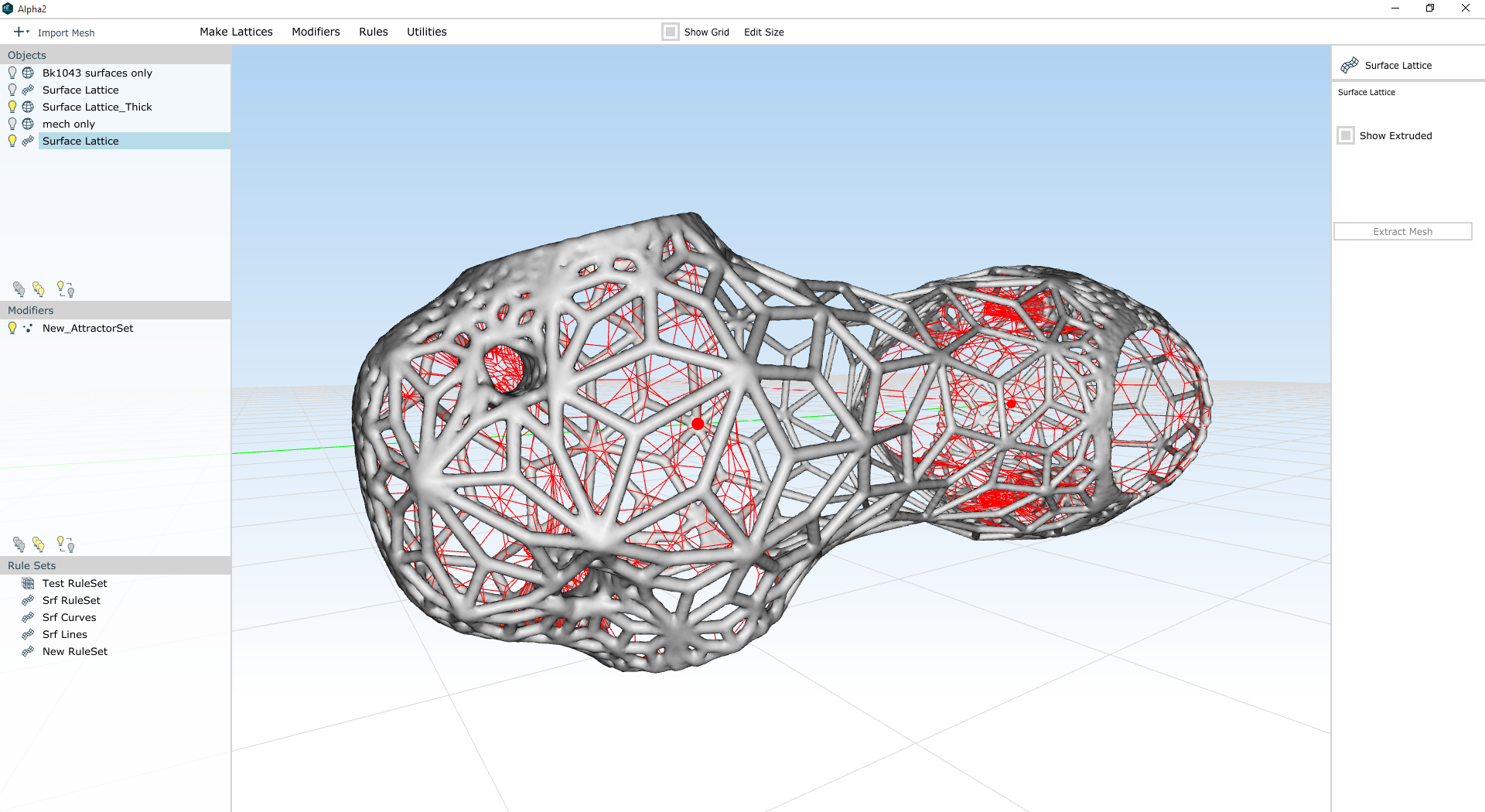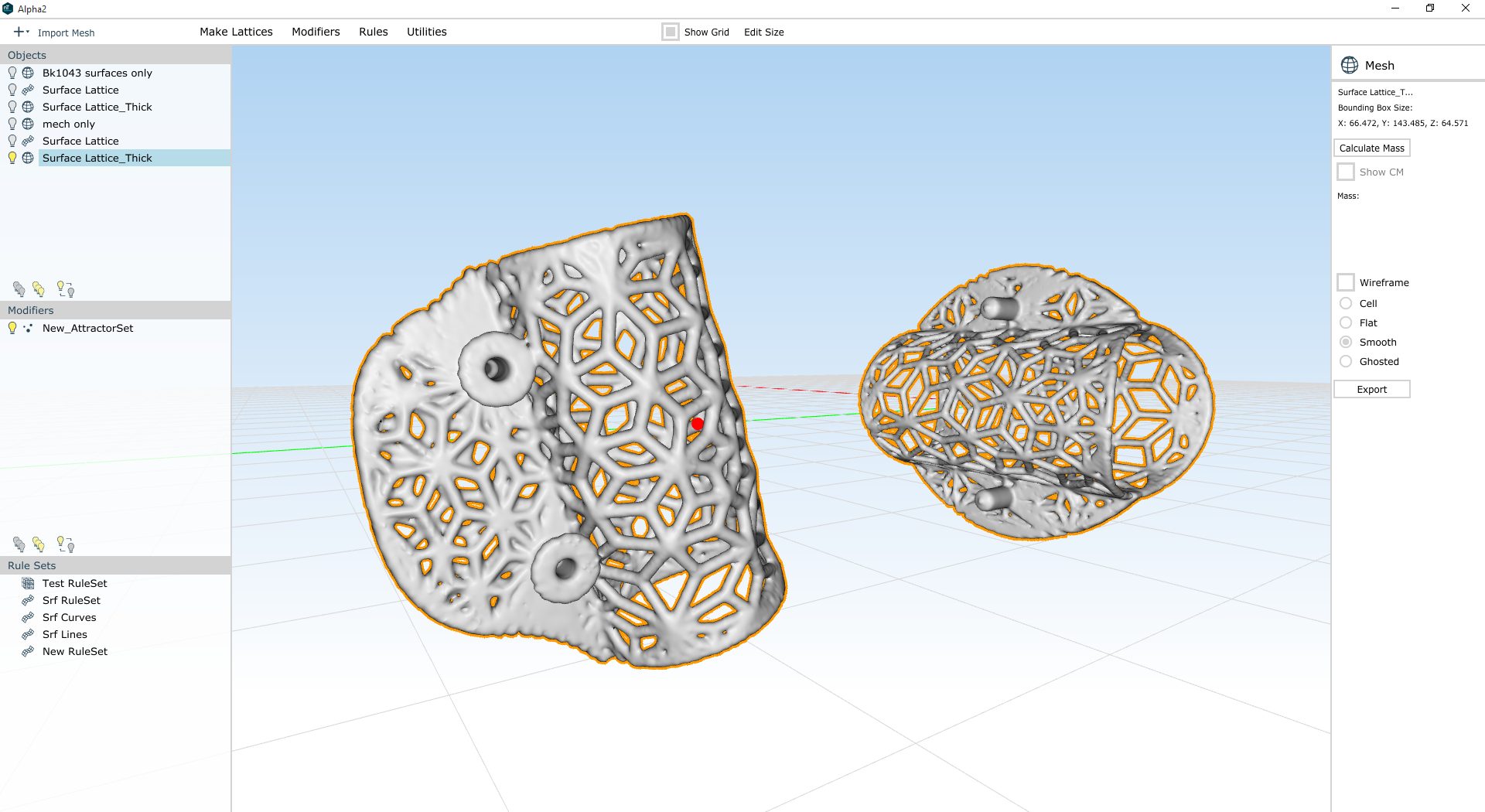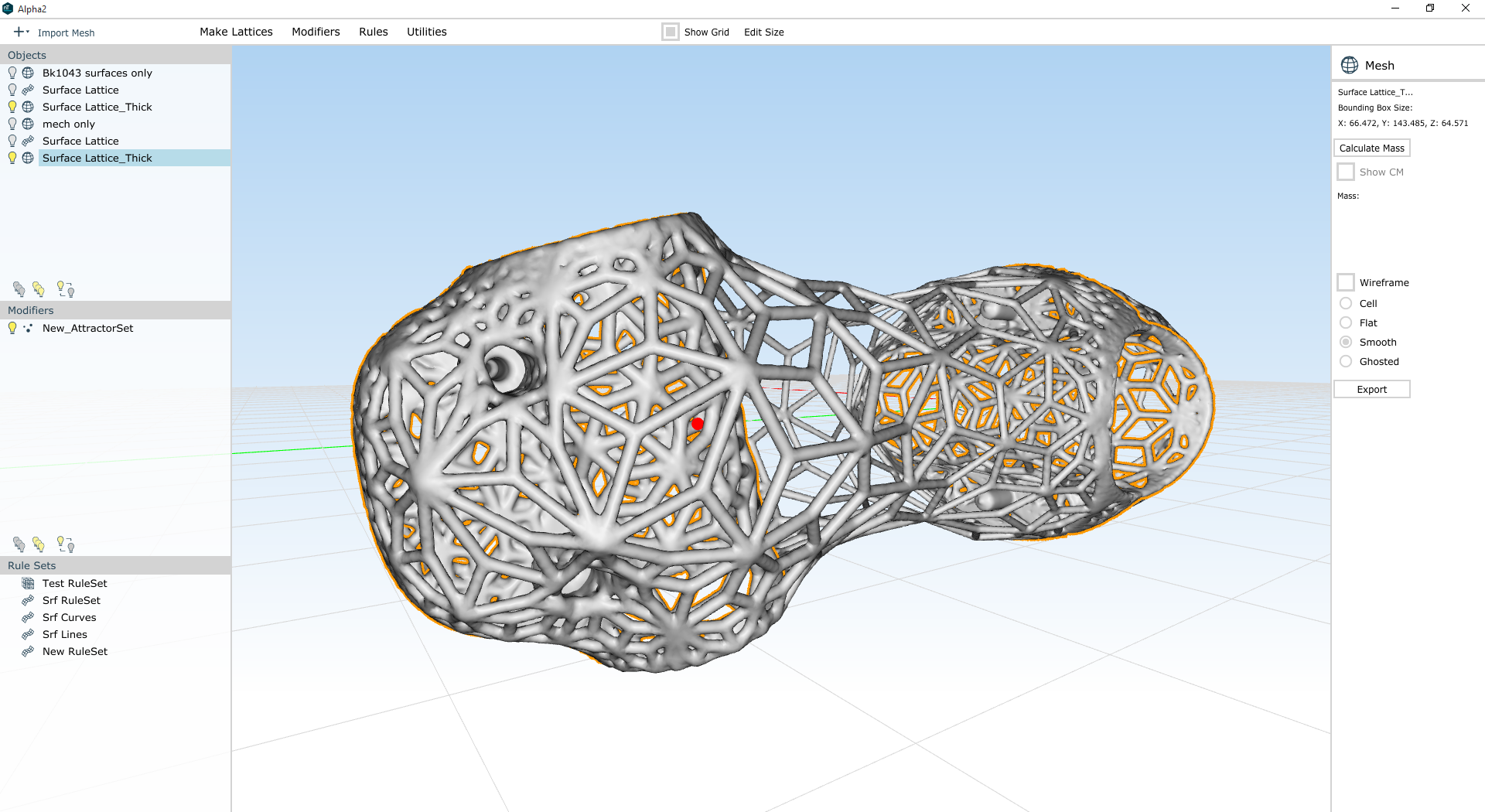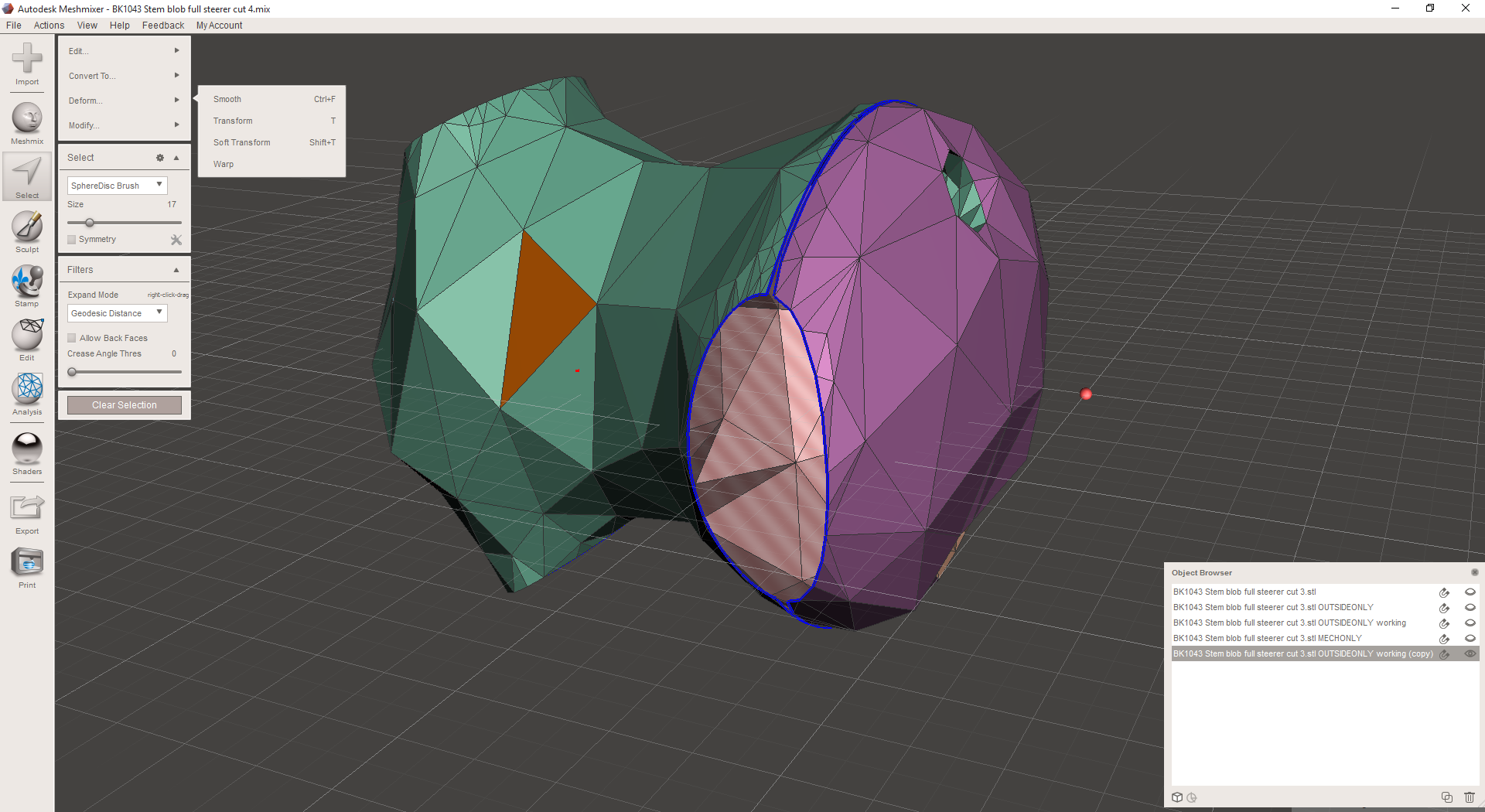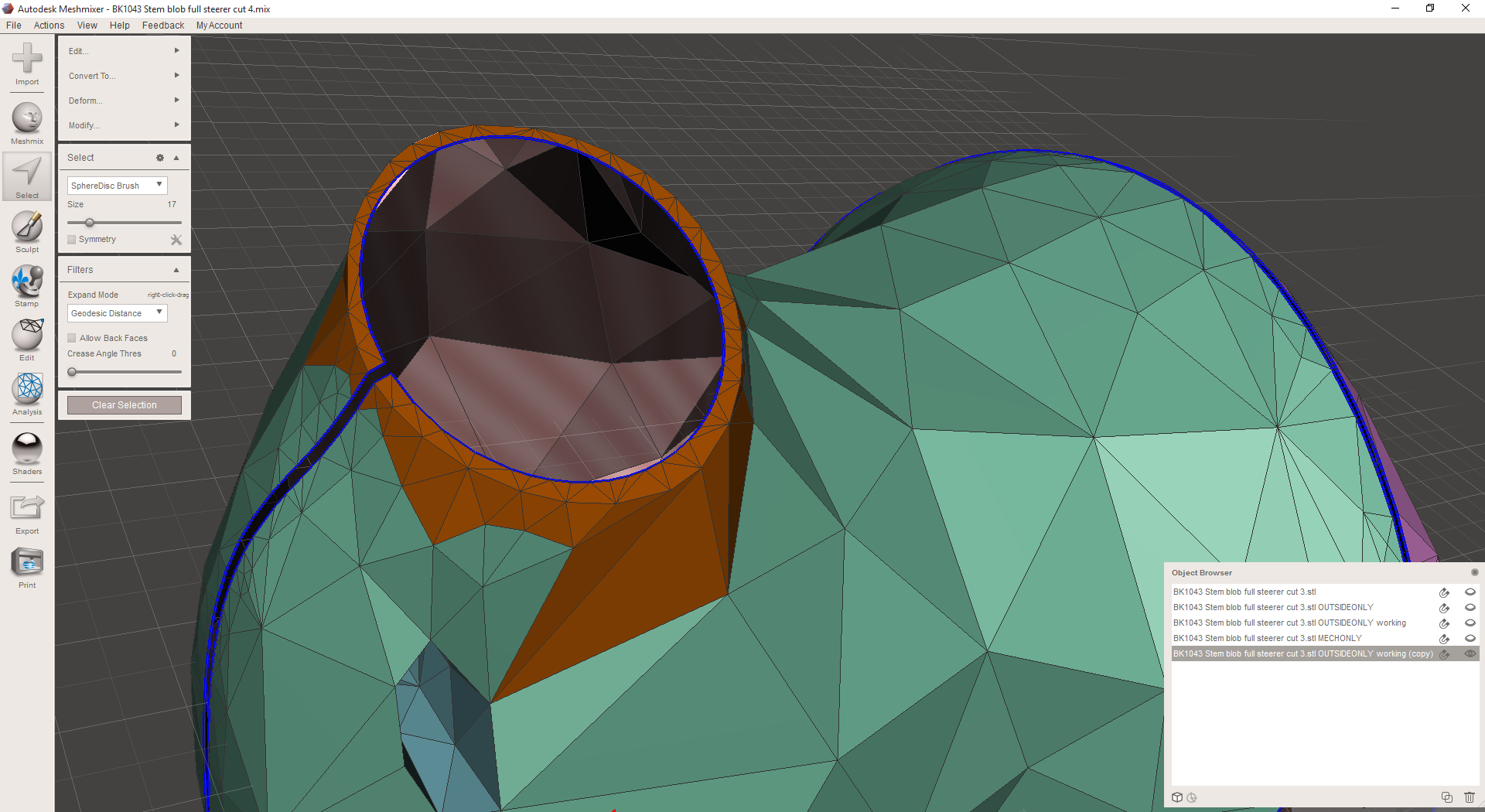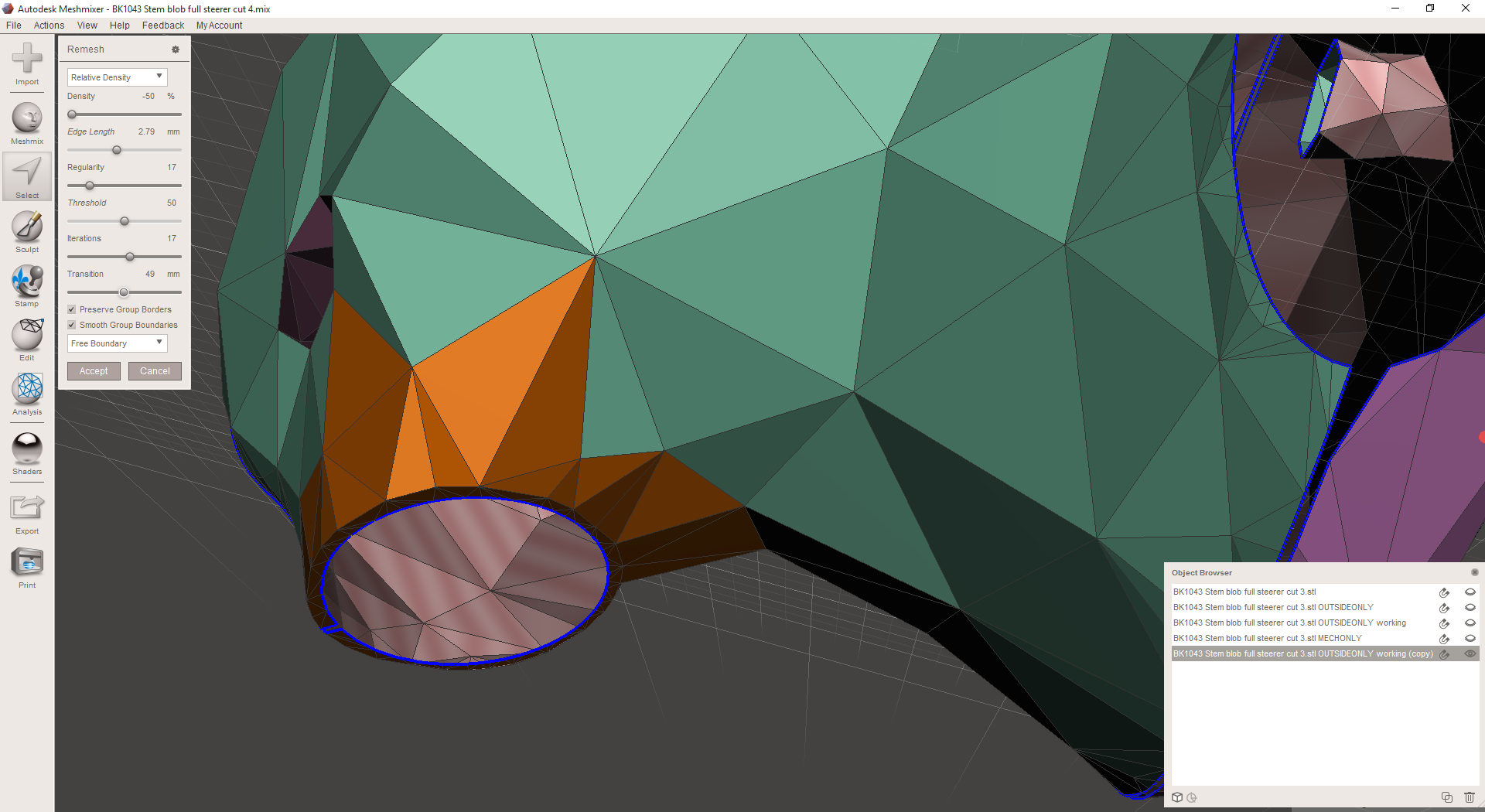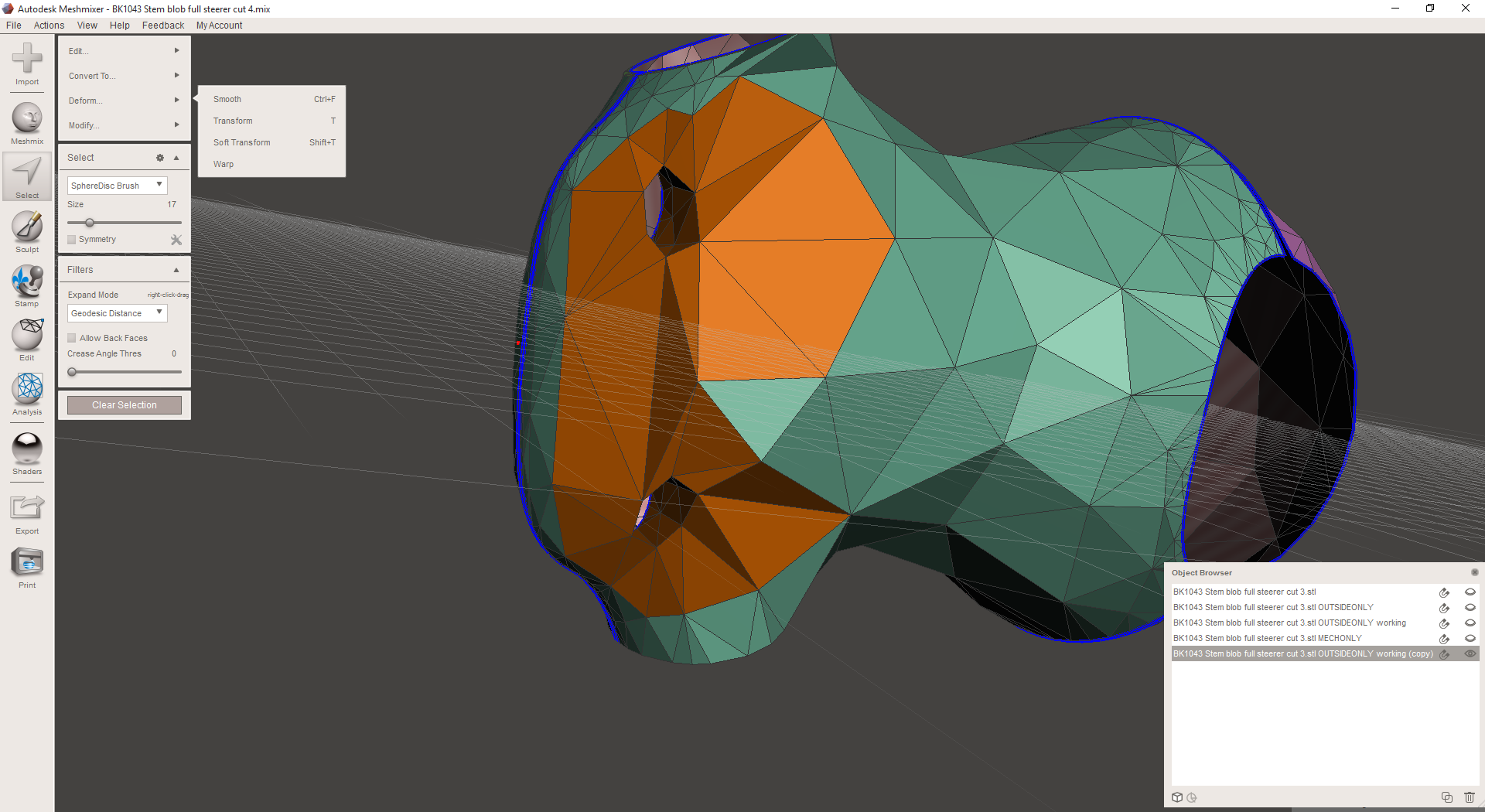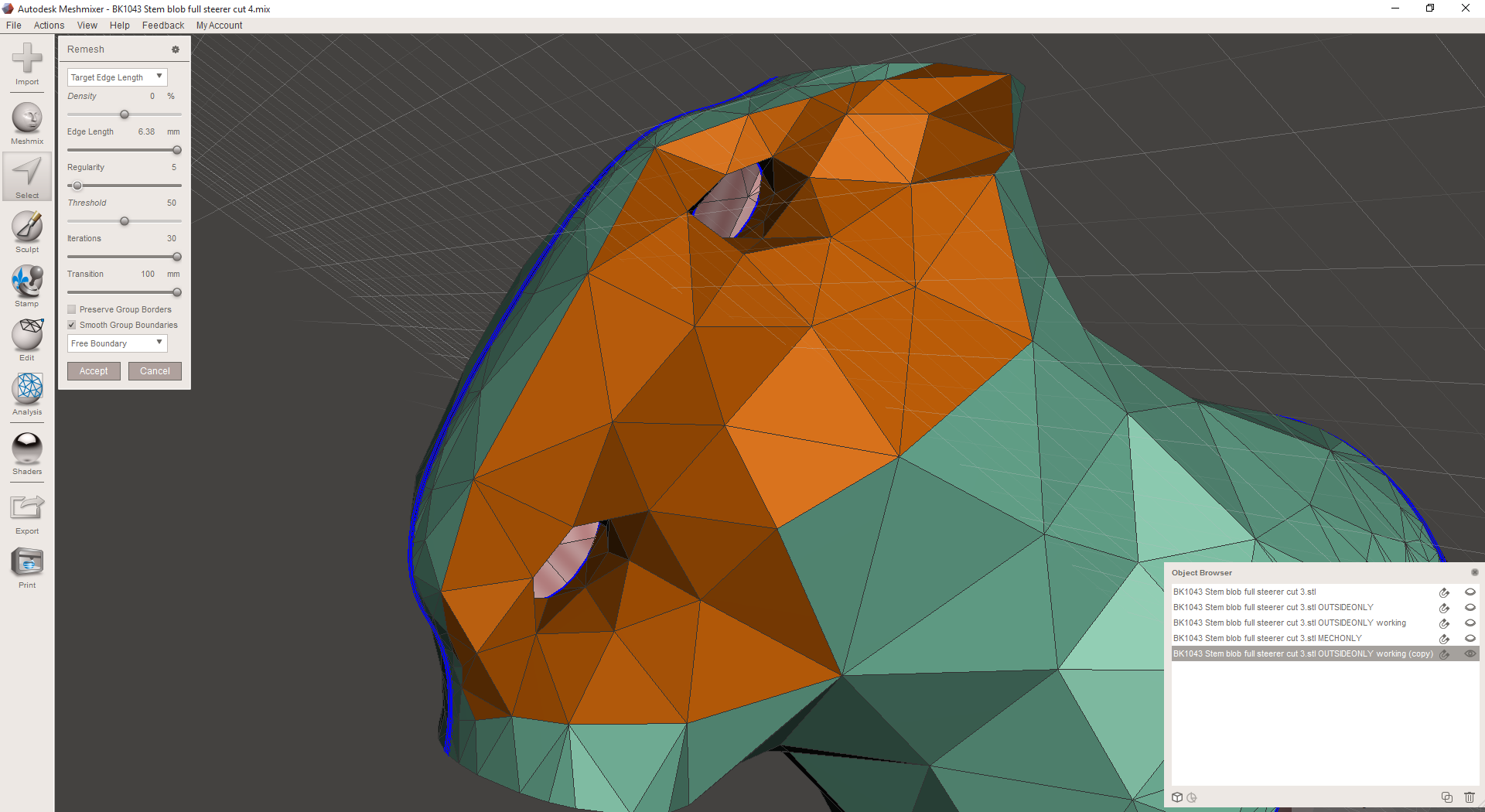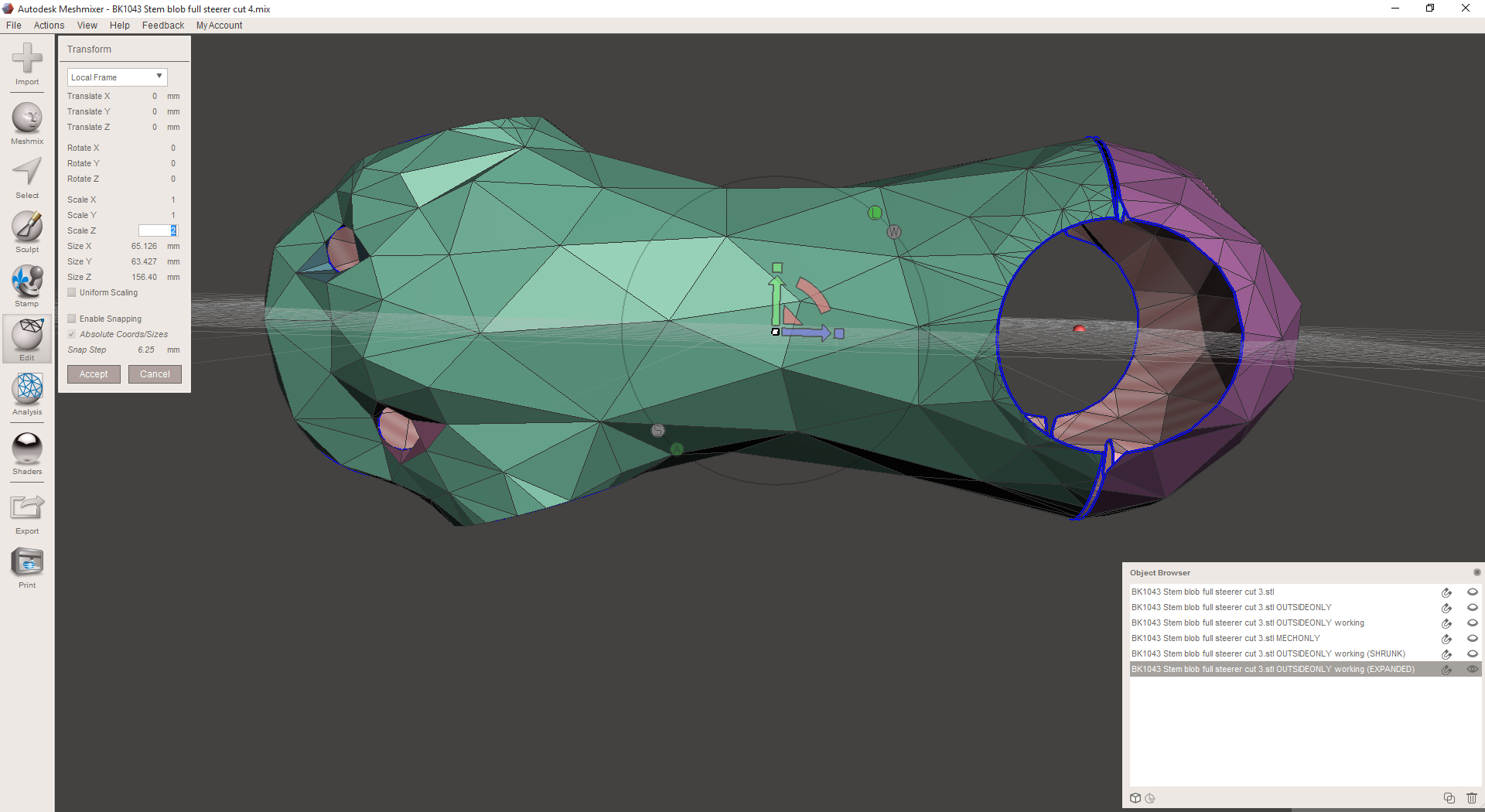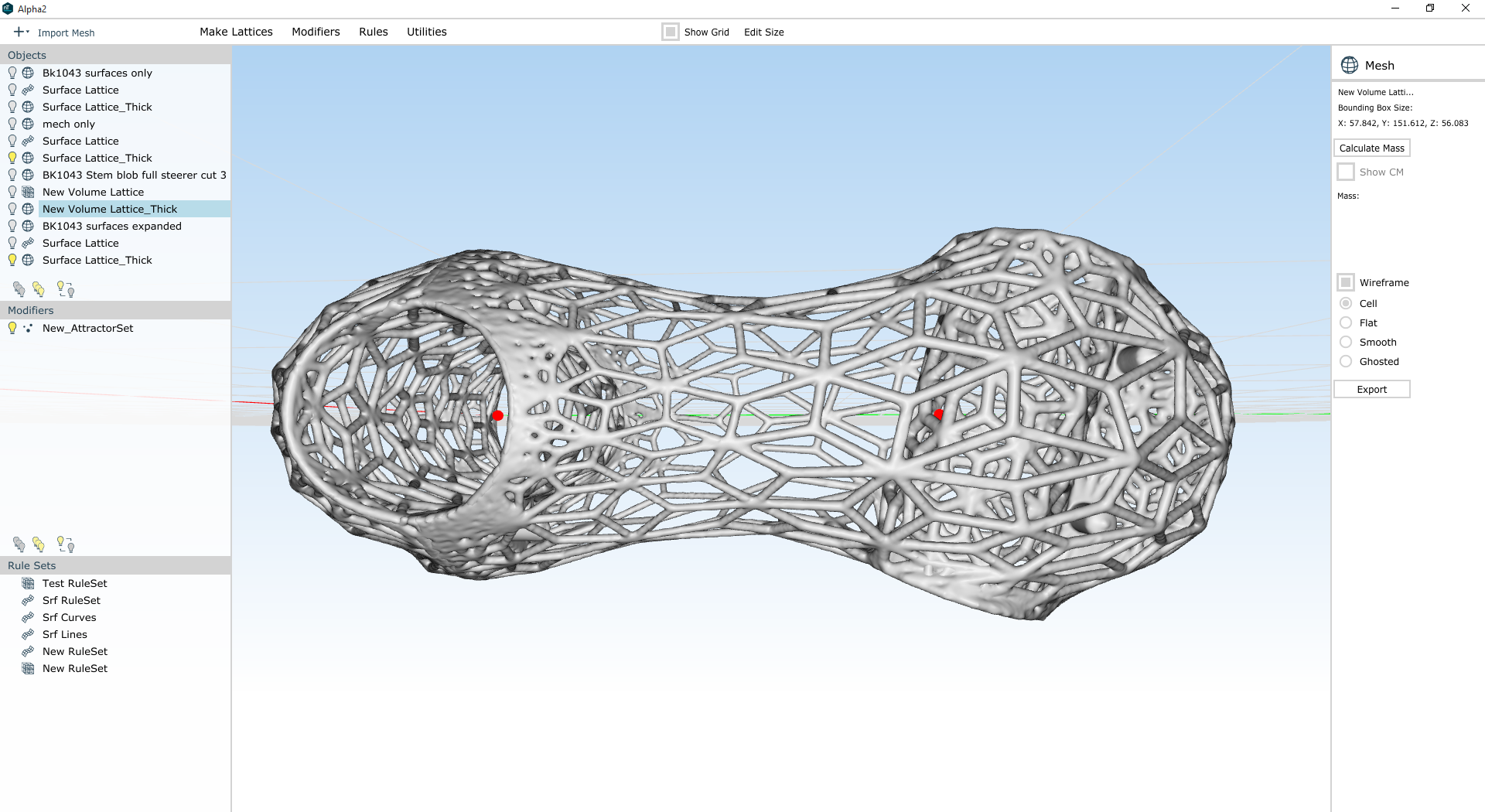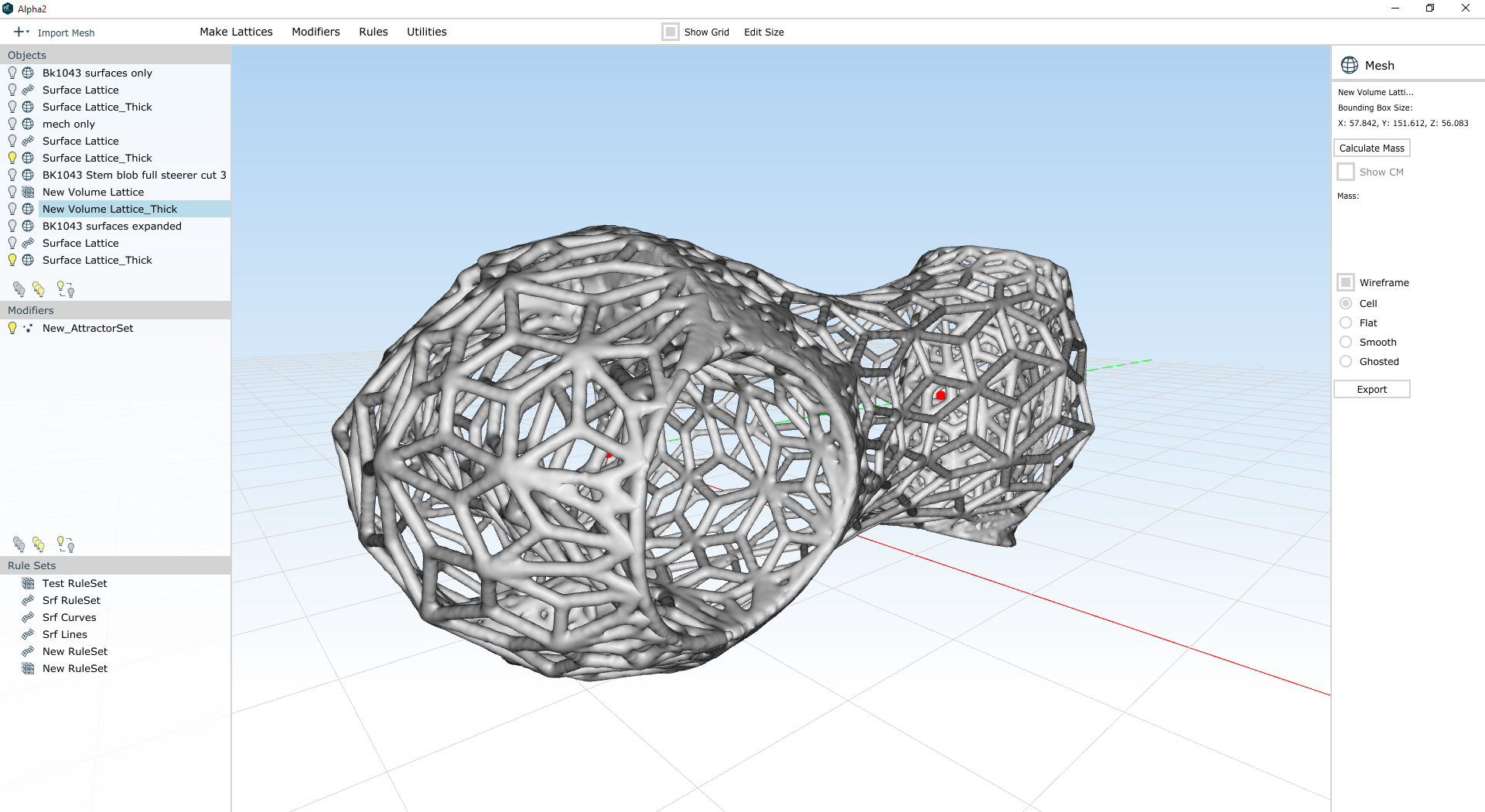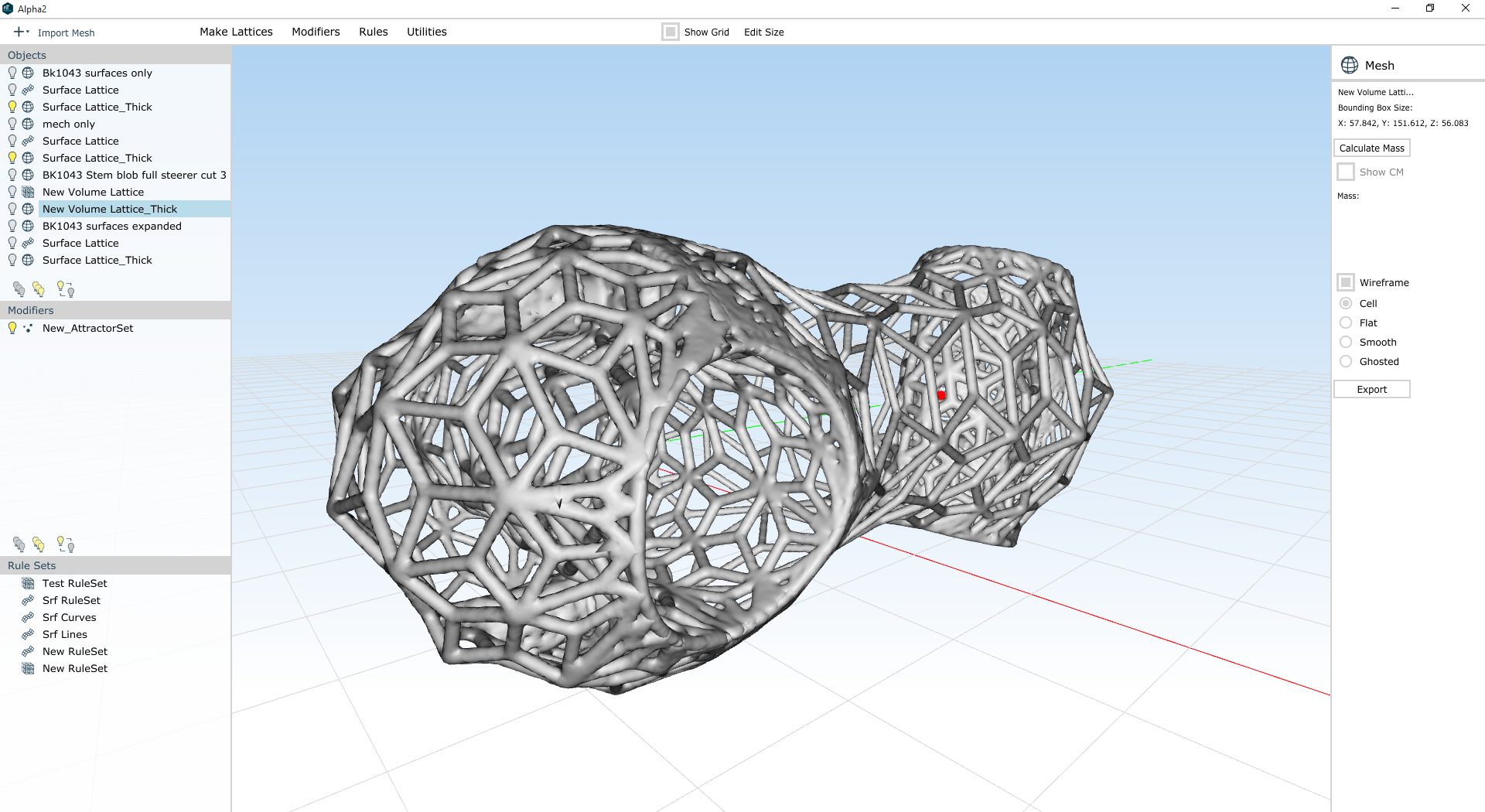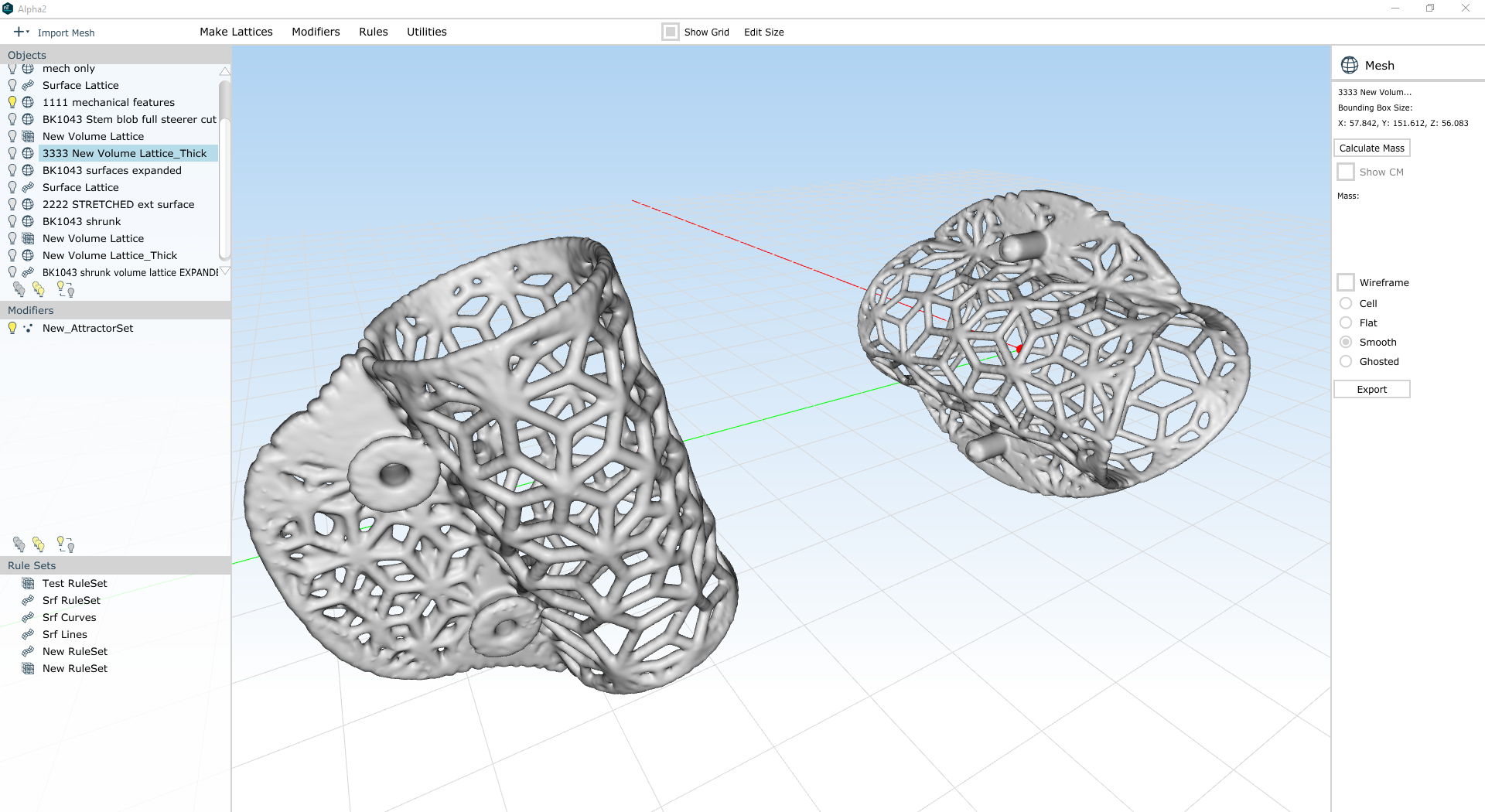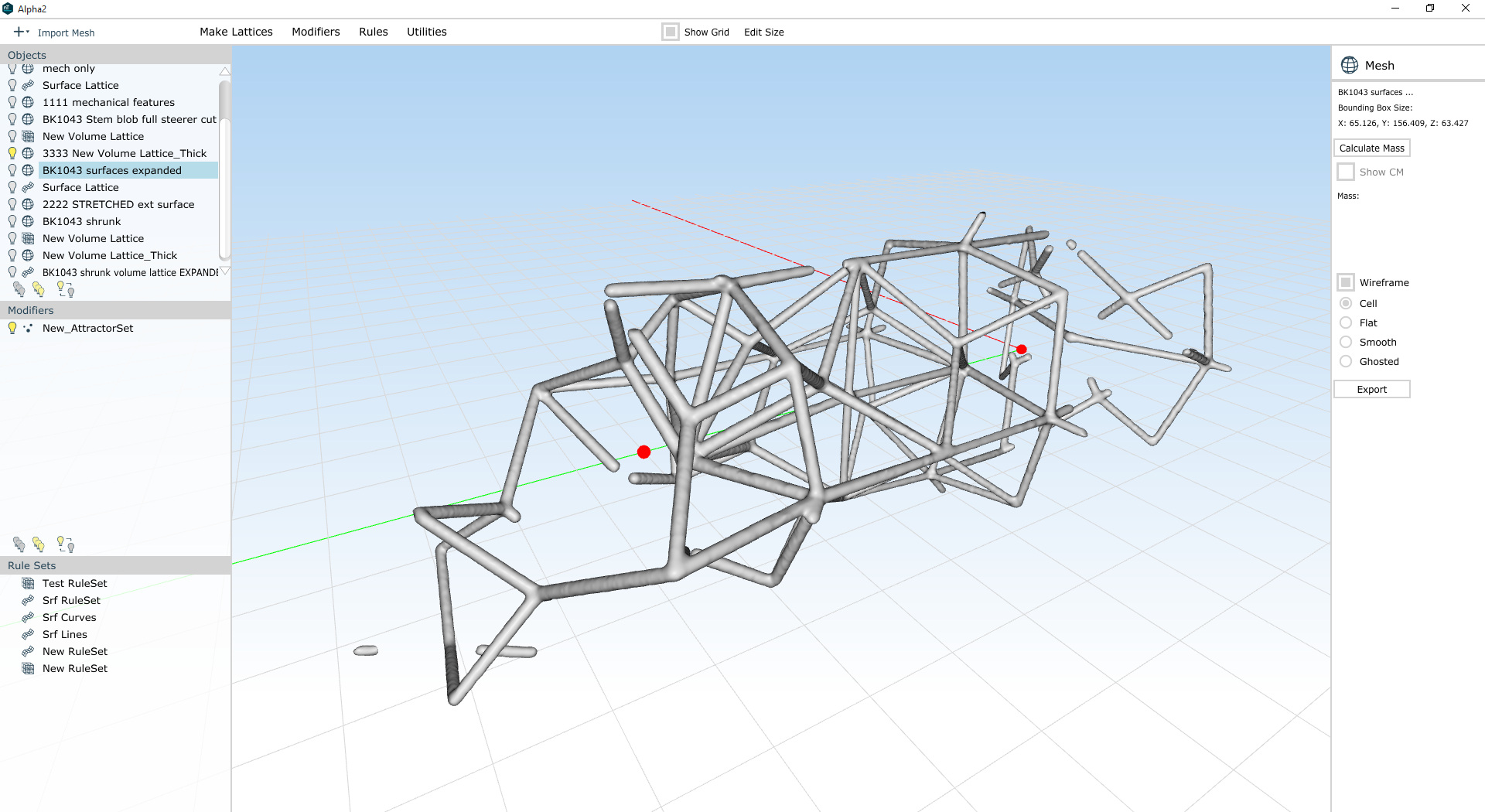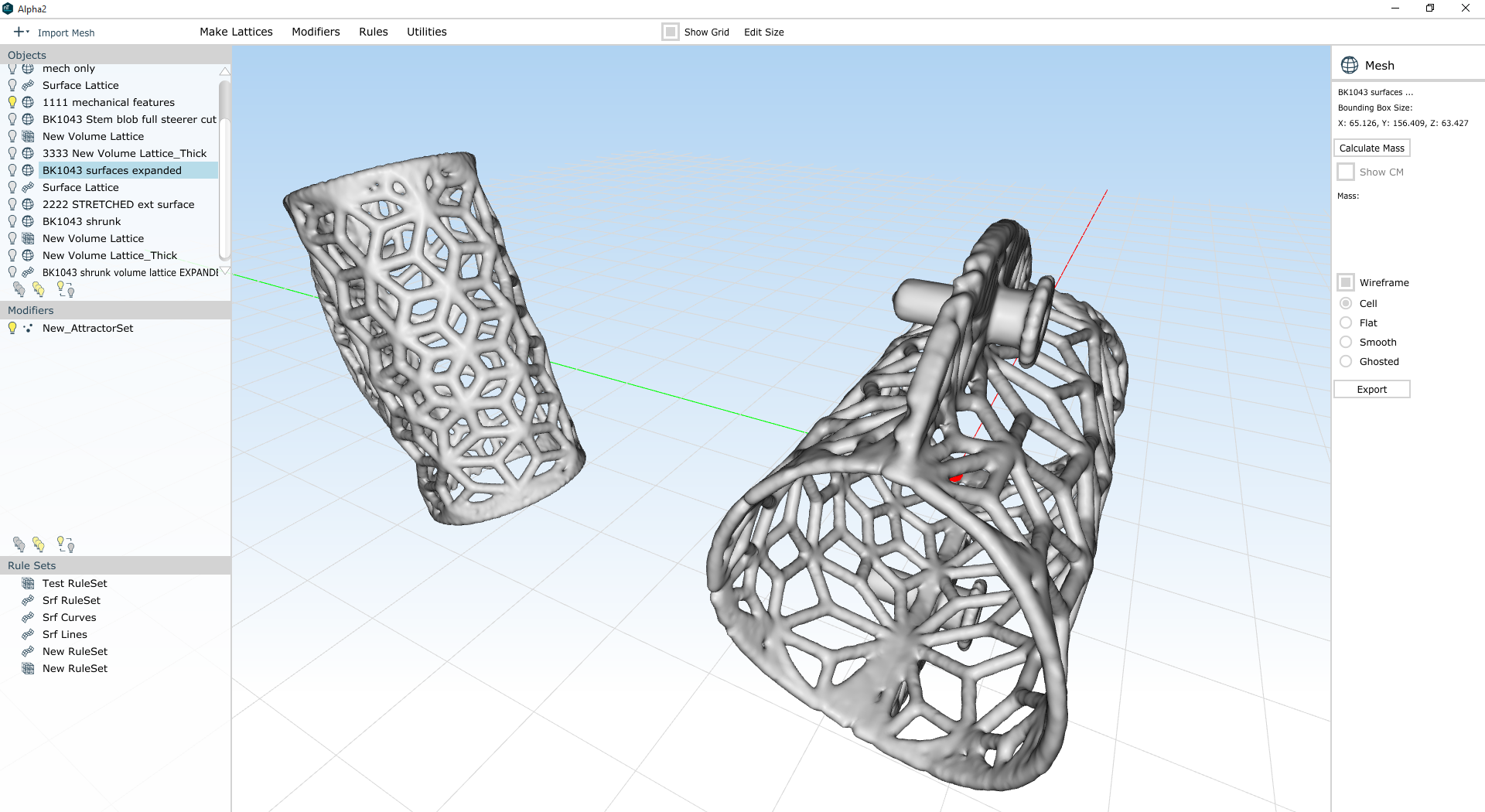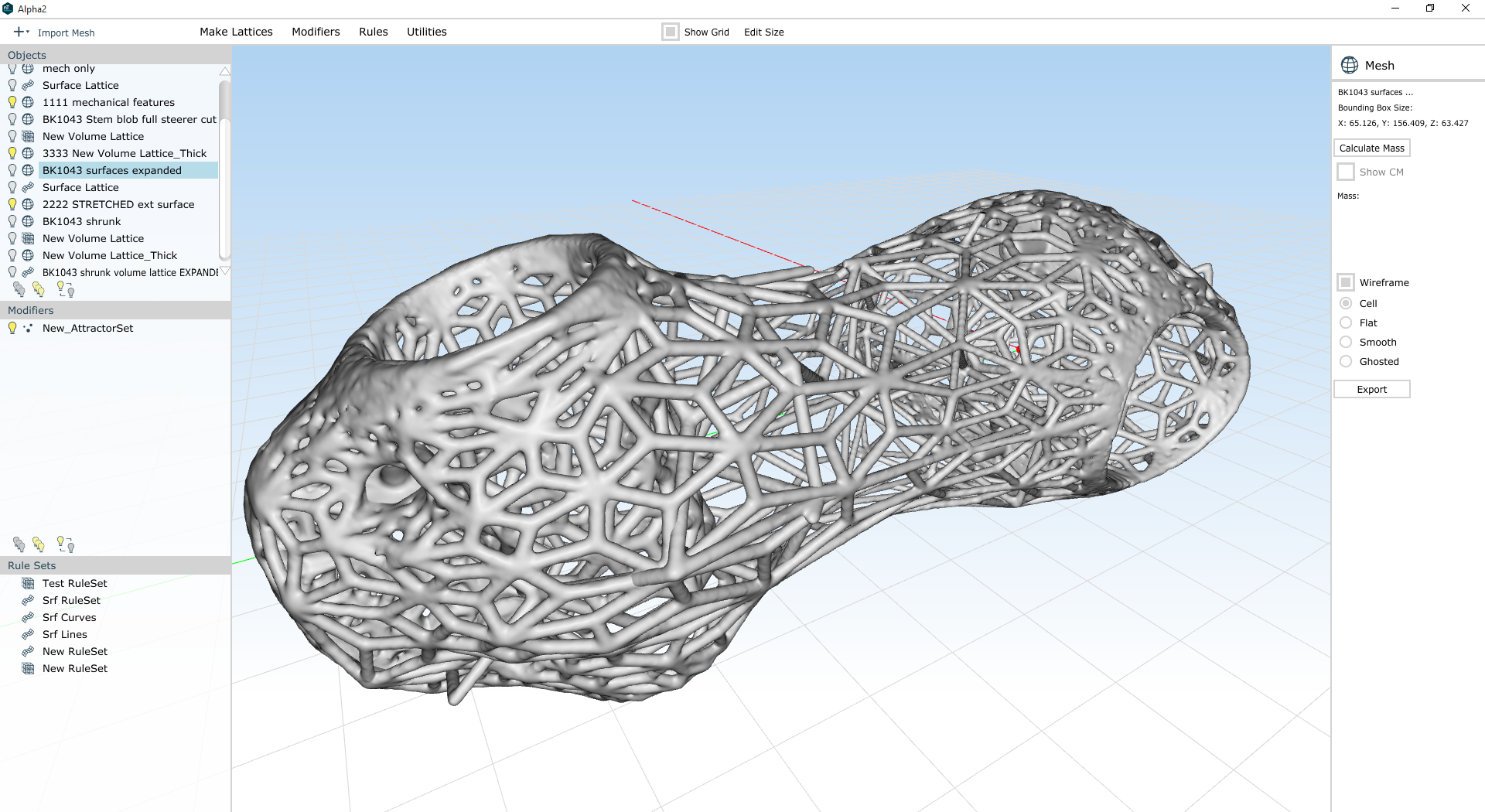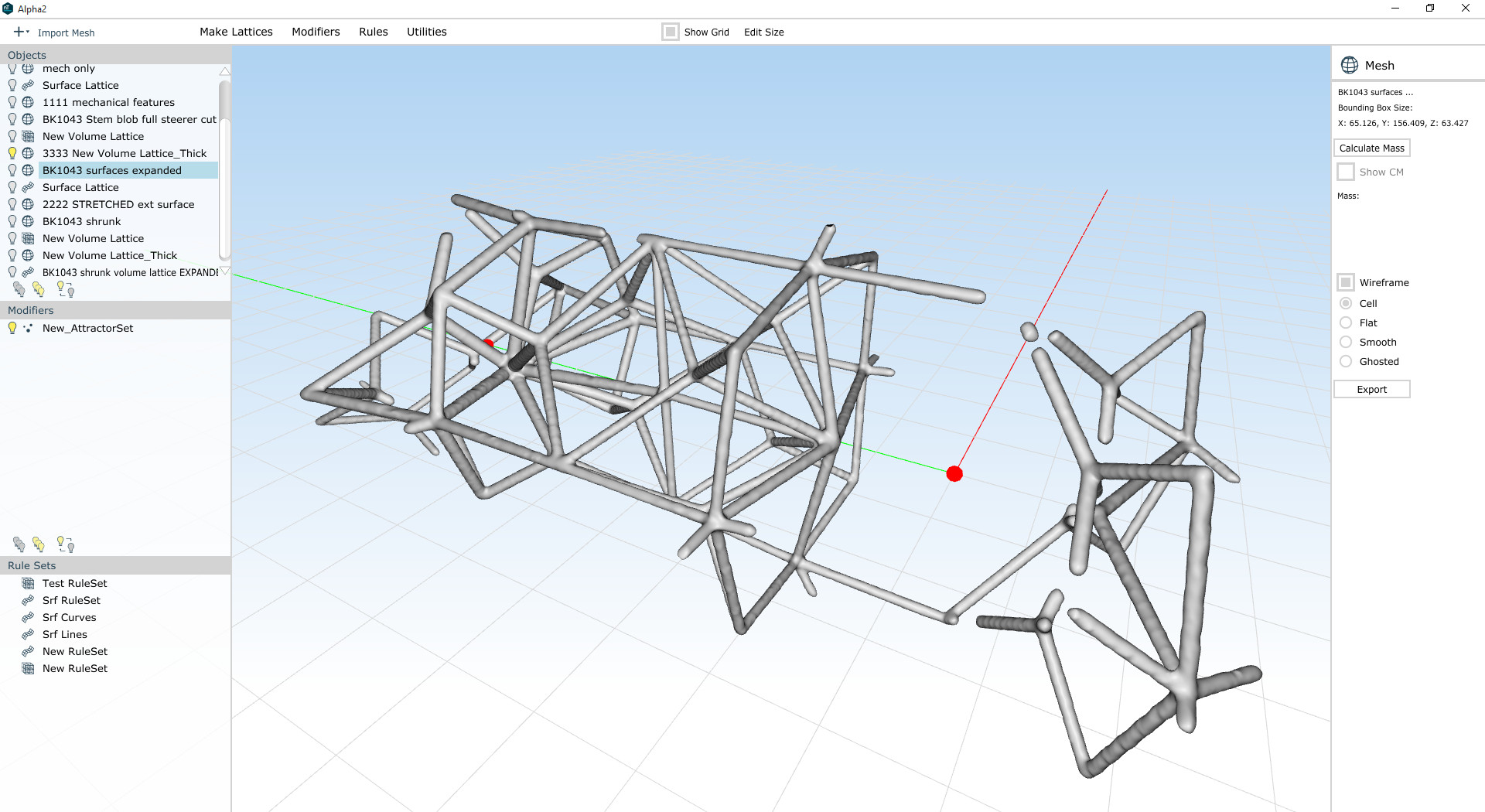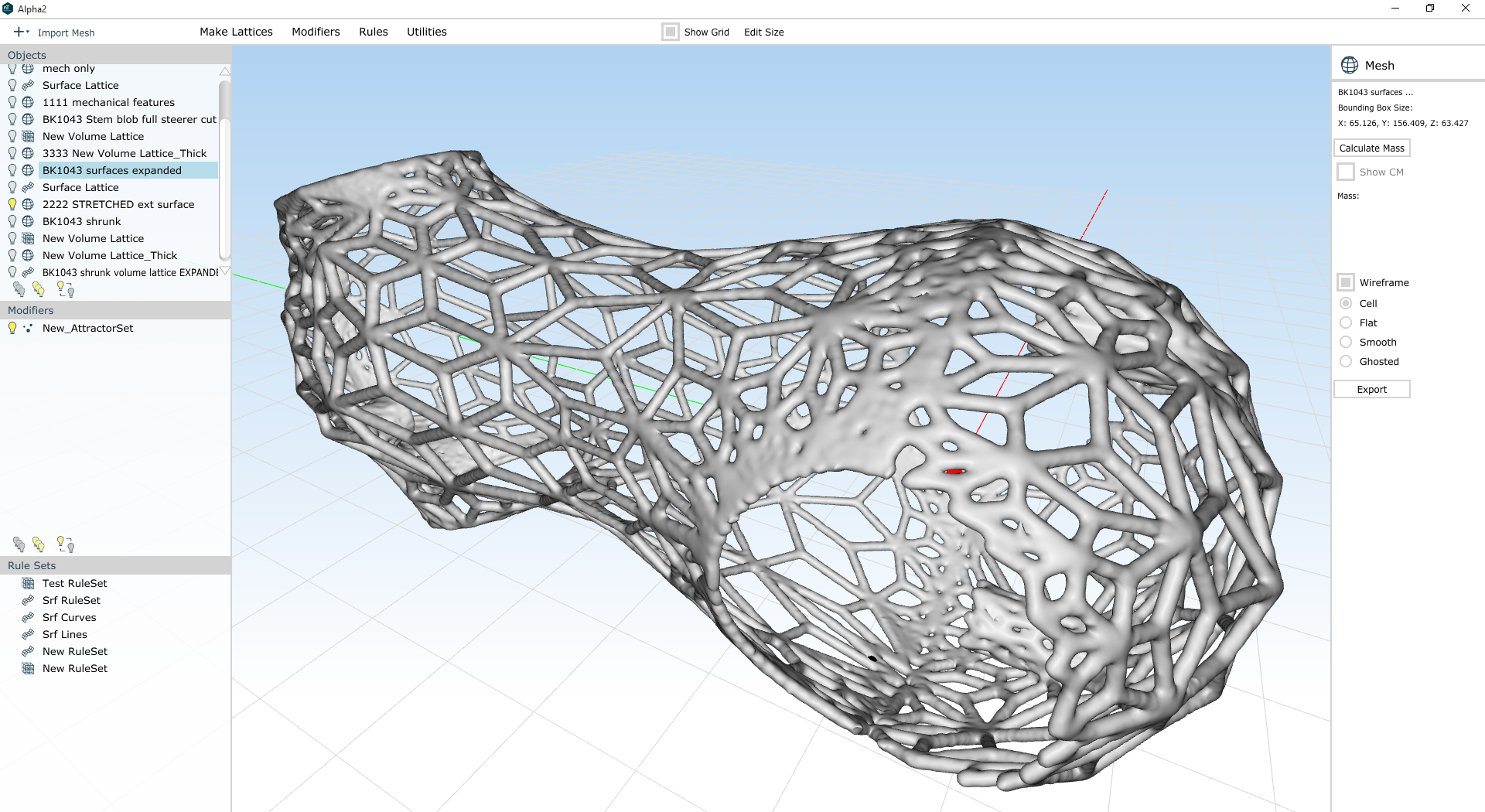So: I need to reduce overhangs on my lattice stem design. As you can see here in MeshMixer, there are a lot of them (highlighted in red/blue):
(Incidentally: If you know of a really easy way to measure the surface area of unsupported faces in an STL/OBJ, let me know! Right now I'm doing some crazy stuff in Blender (thanks, Alex) but I'd love a one-step process if there is one.)
Now as you'll recall, I'm generating these beams (and varying their thicknesses) in nTopology Element, but the method I'm using starts by looking at all the edges in an STL/OBJ that I create in MeshMixer. When I go to generate the lattice (in Element), a beam is created on every triangle edge of the mesh (which I created in MeshMixer). So if I want to control the orientation of the beams in the lattice, I really need to start with that input STL/OBJ.
But here's the thing: remeshing algorithms tend to prefer isotropic (equilateral) triangles, which result in a *lot* of beams that are oriented parallel to any given plane (e.g. the build plane). They also prefer nodes that have a valence close to 6 (valence refers to the number of other nodes that a given node is connected to).
This is mostly because most remeshers assume that you want to preserve features - a reasonable assumption, in general. But for the vast majority of my design (basically everywhere except the clamp faces and bolt hole features), I care *way* more about eliminating overhanging faces than I do about feature preservation.
Over the next week, I'll be playing with the underlying mesh a bunch more and trying to find a way to reliably reduce overhangs in my end design. Specifically, I'm looking at remeshing methods that result in:
- Anisotropic triangles, specifically ones whose orientation I can set as a global variable. I want my triangles to be longer than they are wide/deep.
- Nodes with valences <6. This will essentially reduce my beam count (I think).
- A mesh which is adaptive (as opposed to regular), so that I can preserve my mechanical features (high density mesh) and still reduce beam count elsewhere (low density mesh).
I'm also interested in using some curved beams (especially in the clamp areas), but that's prioritized below the things above.
More soon!
